Where people gather like clouds
Travel notes, Seoul, South Korea
1.
7:30 - Bukchon Hanok Village
10:15 - National Museum of Korea
Hanging canvas paintings/calligraphy use vertical aspect ratio, emphasize mountains but also make use of vertical perspective to allow multiple planes of focus, almost anecdotes, foreground/background, no clear horizon bias, continuity of space
Narrative figure painting → interesting parallel to comics, when did high art go "low"?
Lacquered wood with mother-of-pearl inlay from Goryeo and Joseon periods → <3
Bells → but is the sound not also part of the art? We get so little from only the visual
12:45 - The War Memorial of Korea
The whole thing feels so tragically arbitrary
“We’re simply attacking in another direction.”
The War Memorial museum traces the timeline with excellent maps showing the movement of Northern and Southern forces alongside bracing testimonials and photos. Placing this event after several centuries of conflict history was an inspired touch, contextualizing the War without diminishing its all-consuming impact.
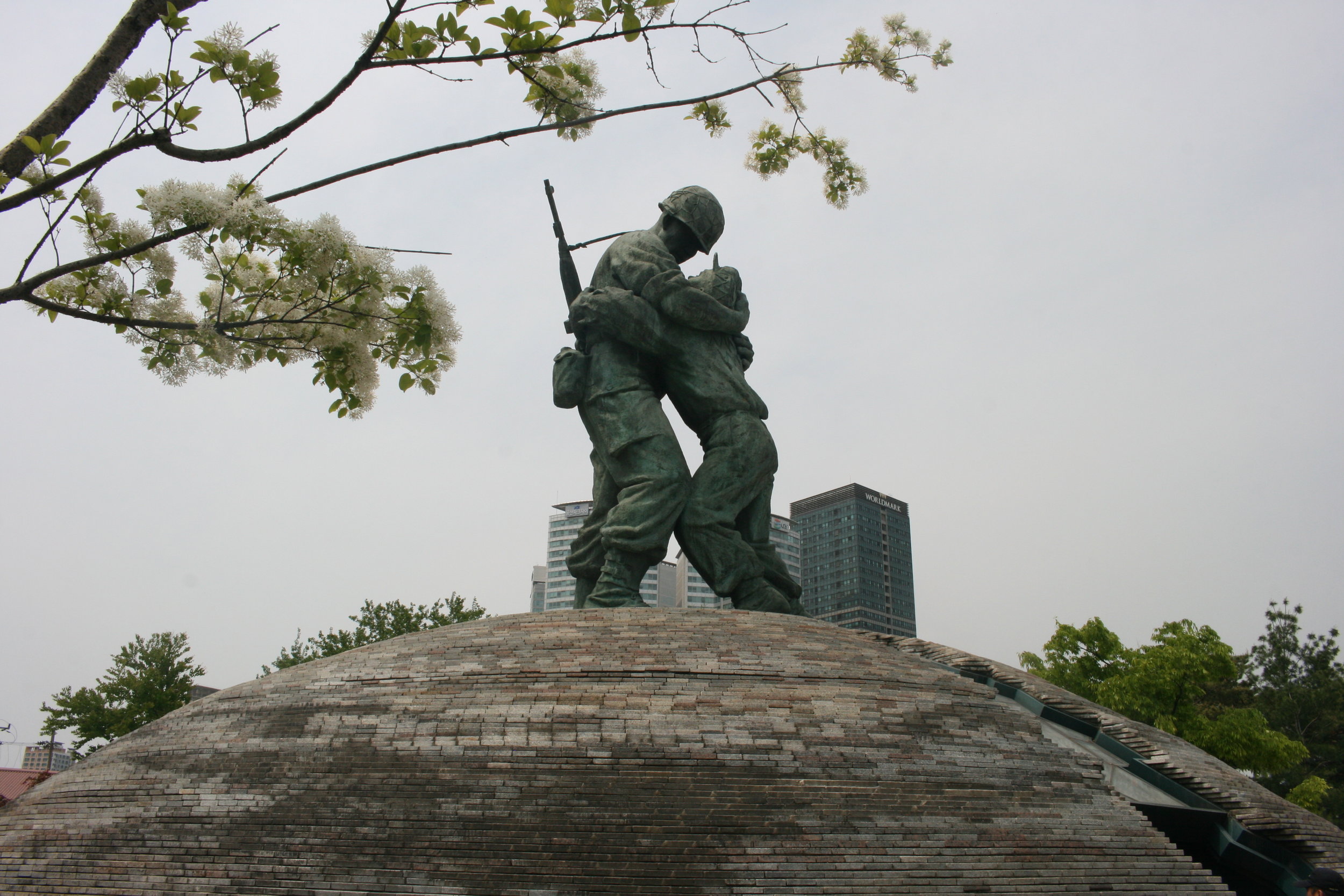
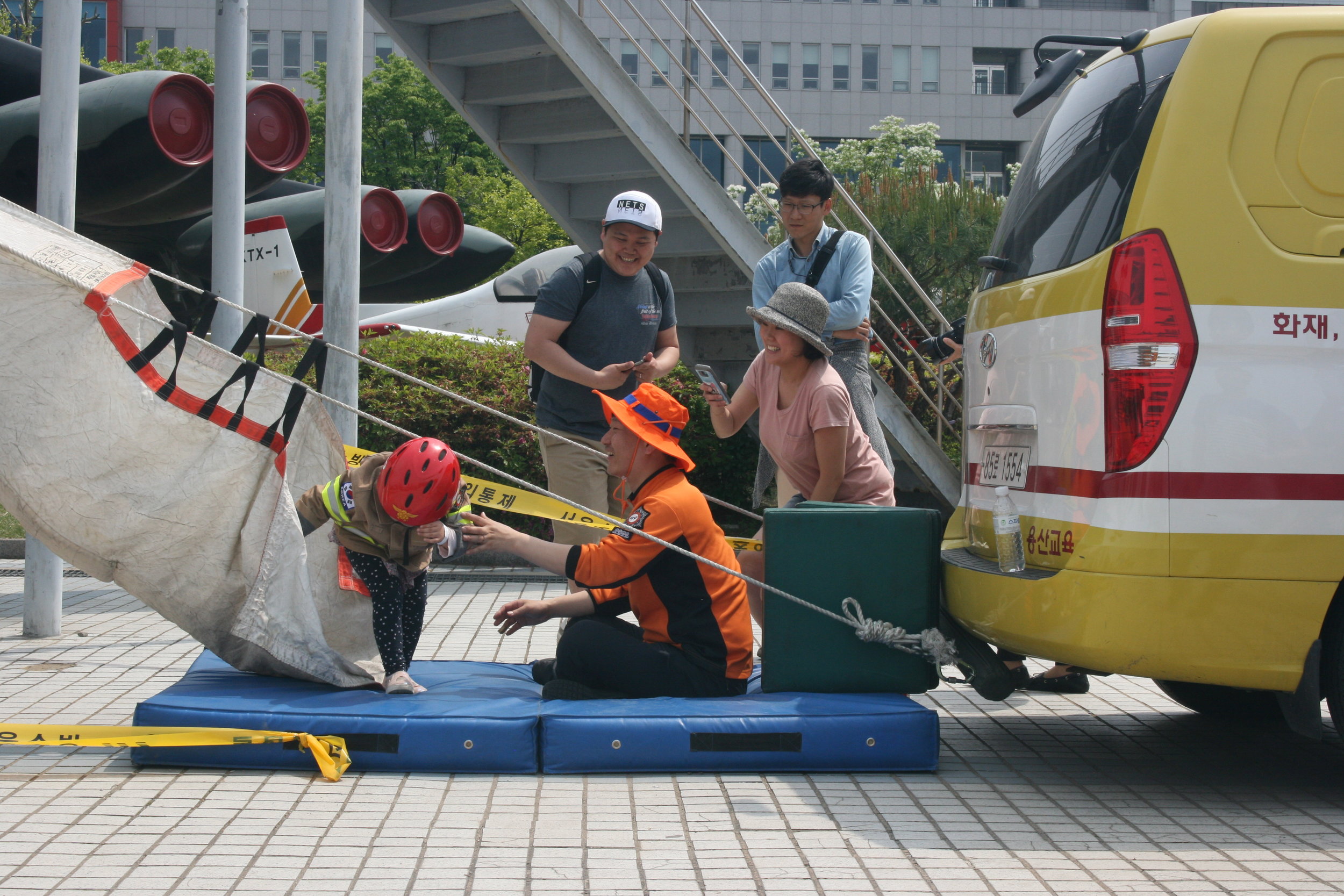

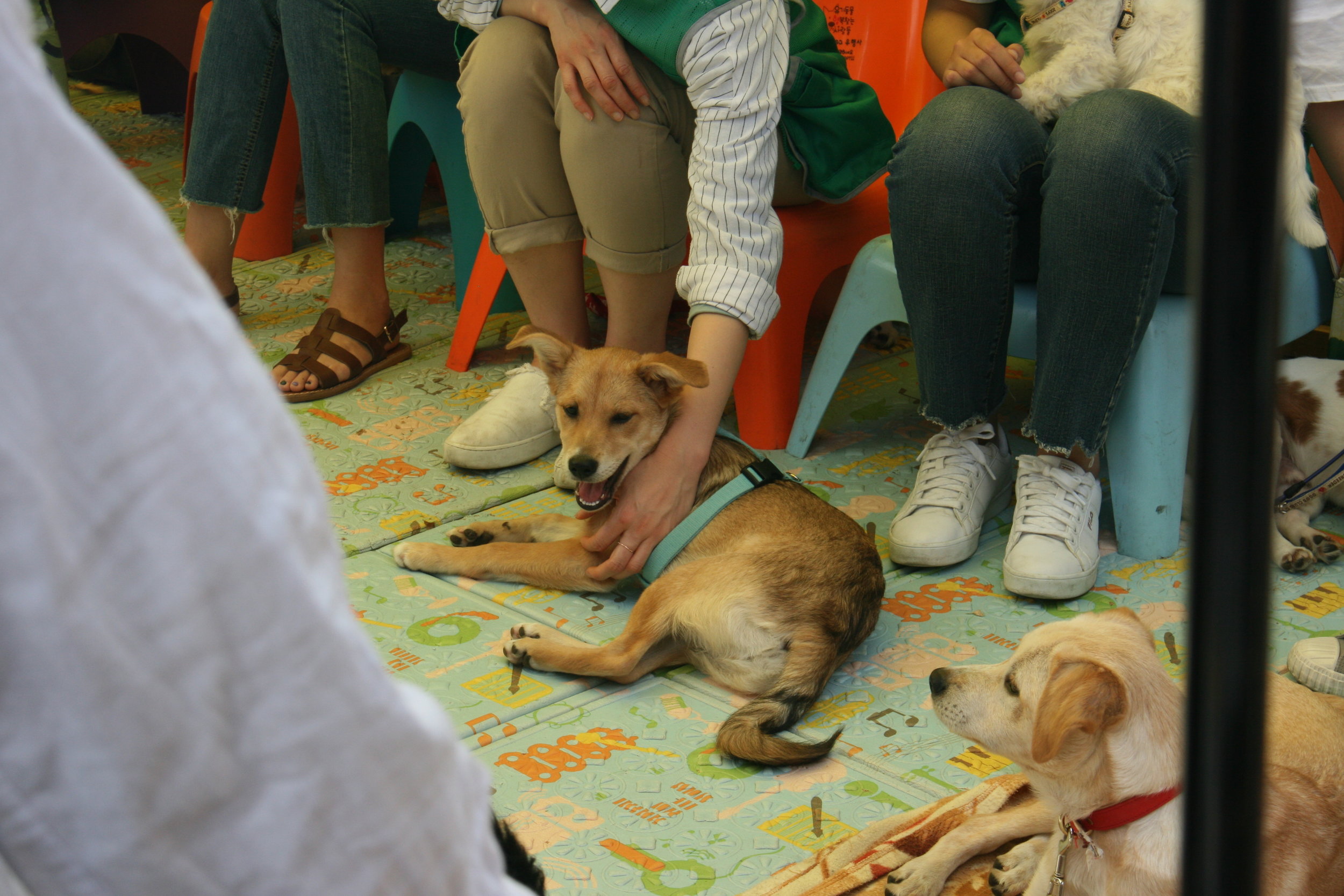
14:15 - Lunch at Busan Galbi in Itaewon: Bulgogi stew with green tea
15:15 - Leeum, Samsung Museum of Art
Protofiguration 90024-Land
Lee Jong-Sang
I loved how it draws elements from traditional painting: horizonless, calligraphic
Heaven and Earth (24-IX-73 #320)
Kim Whan-Ki
The fracture in the upper shape seems to suggest collision, but the way the rings overlap suggests eclipse -- can't help but think of the divided peninsula when I look at this
17:00 - Seodaemun Prison History Hall
Index cards with prisoner records and photos wallpaper a room
Mugshot-as-portraiture...
Propagandistic language: patriots, righteous army, independence activists, etc → actually reduces emotional impact, feels deceptive
People posing for photos in standing cells for “narrow room torture” → expression moves from smile to sneer to blank gaze, chilling flickers of reality/history → the sound of the door closing, the latch being sealed, an arm reaching through the face window to grapple with the lock
Holes for ventilation → not for breathability for inmates but to prevent the wooden floor from decaying
So much becomes possible when people are disposable
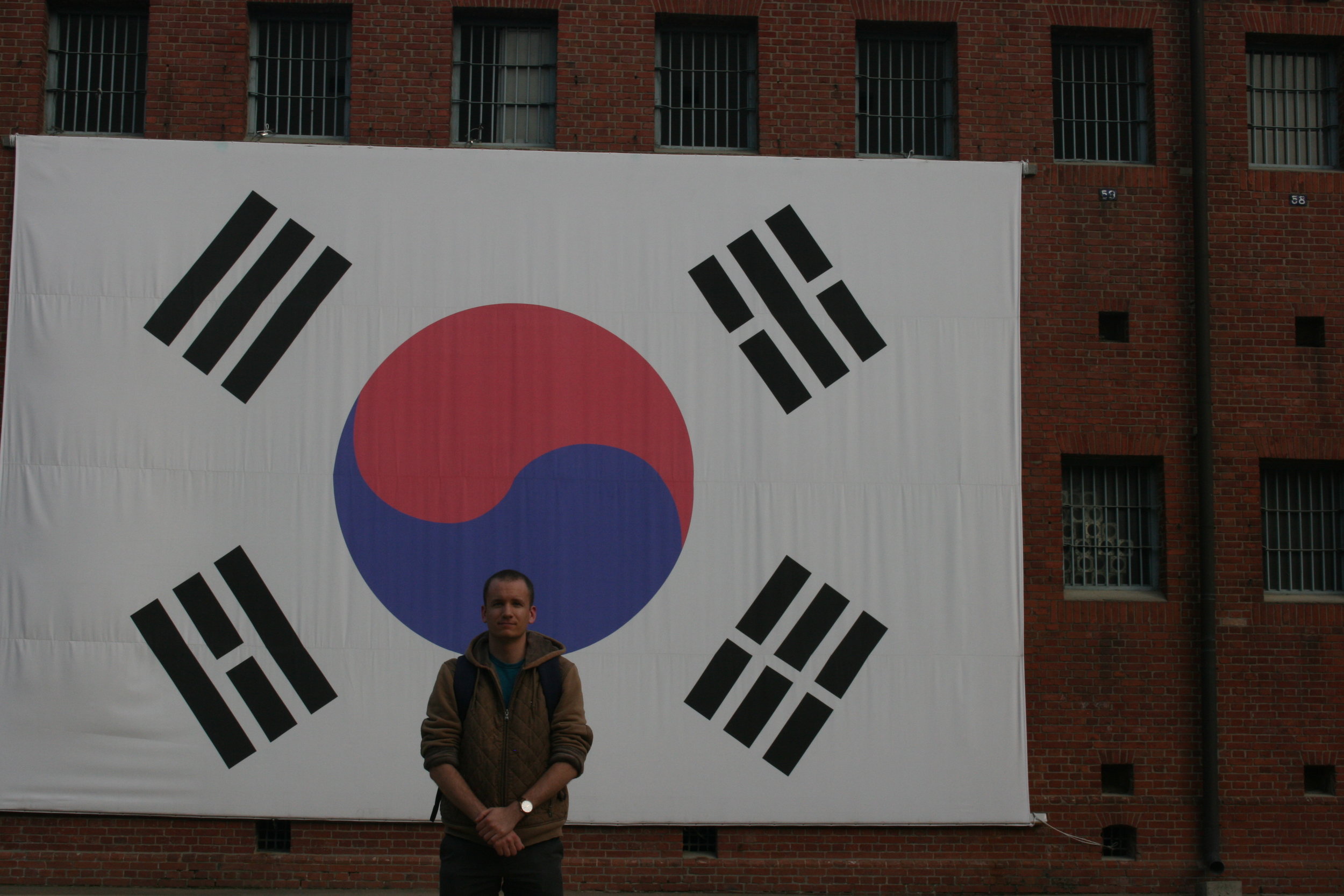
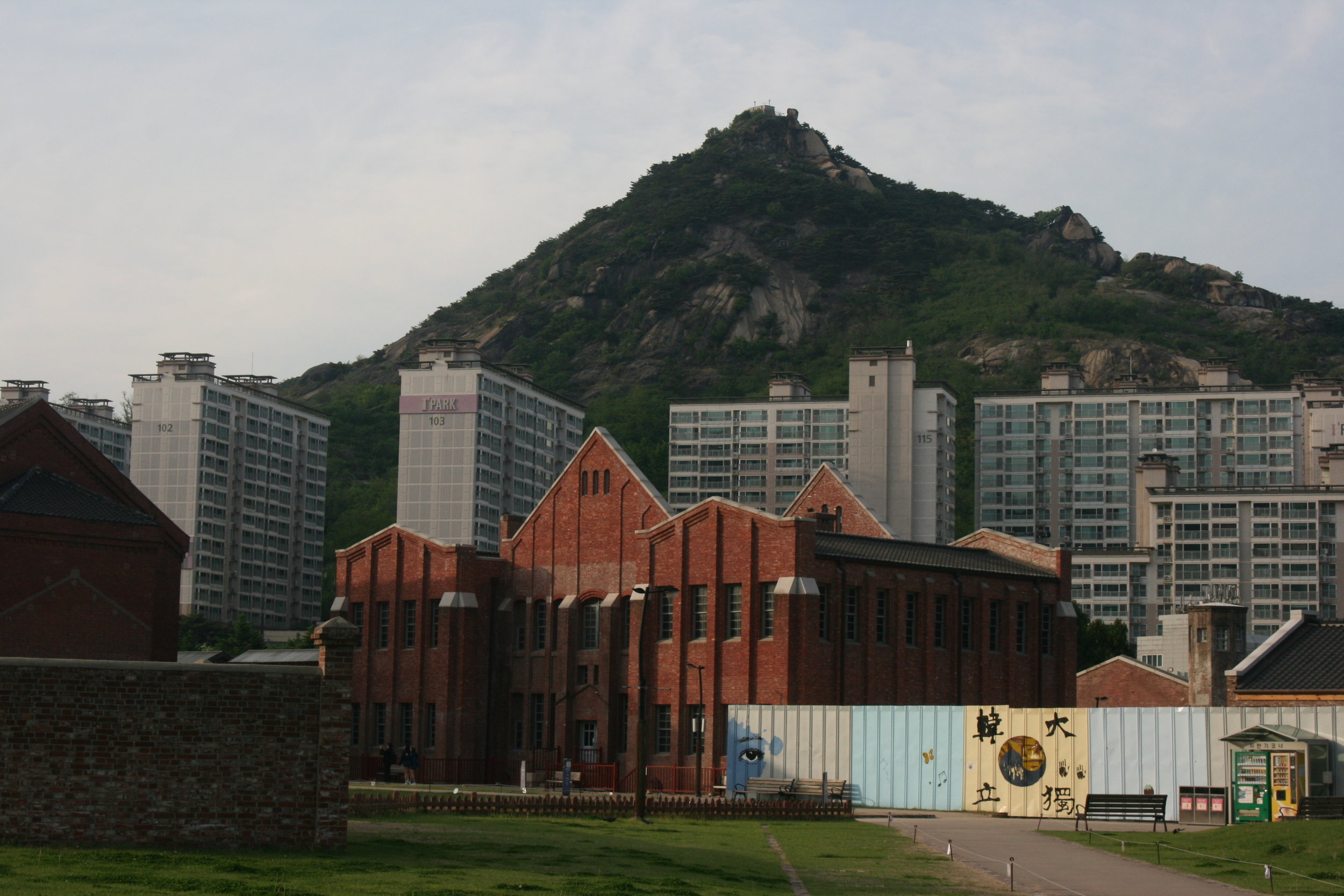
18:45 - Insadong
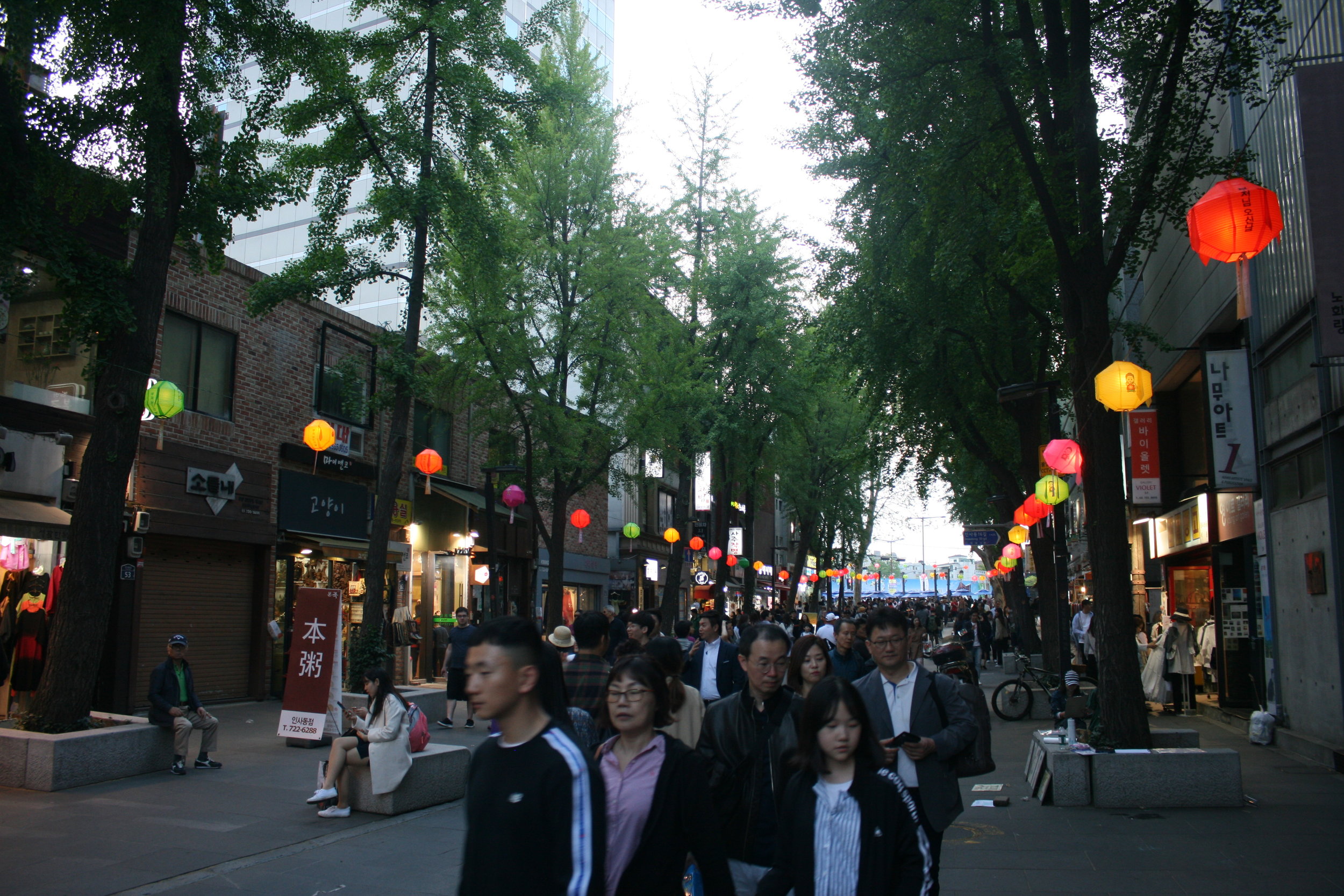

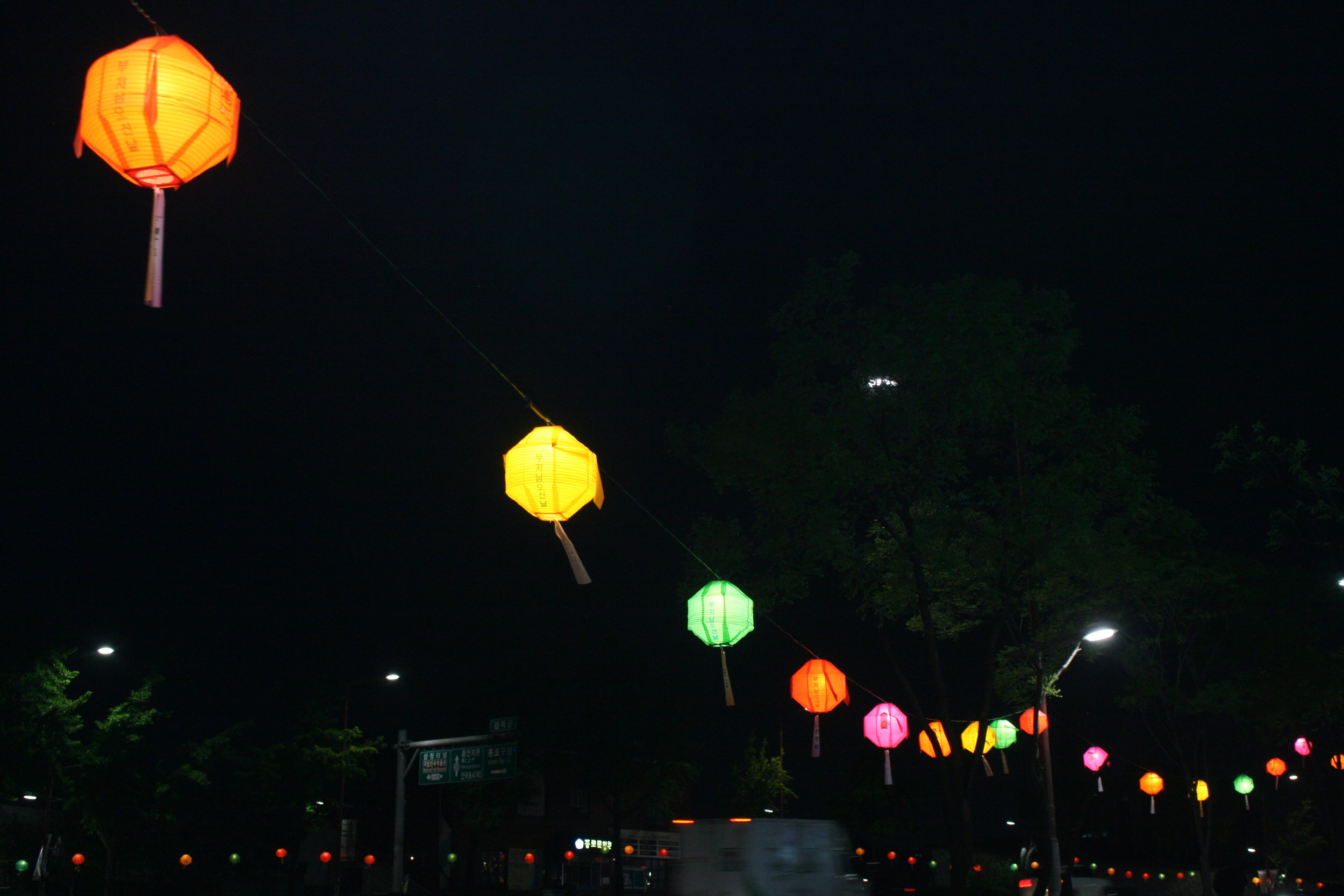
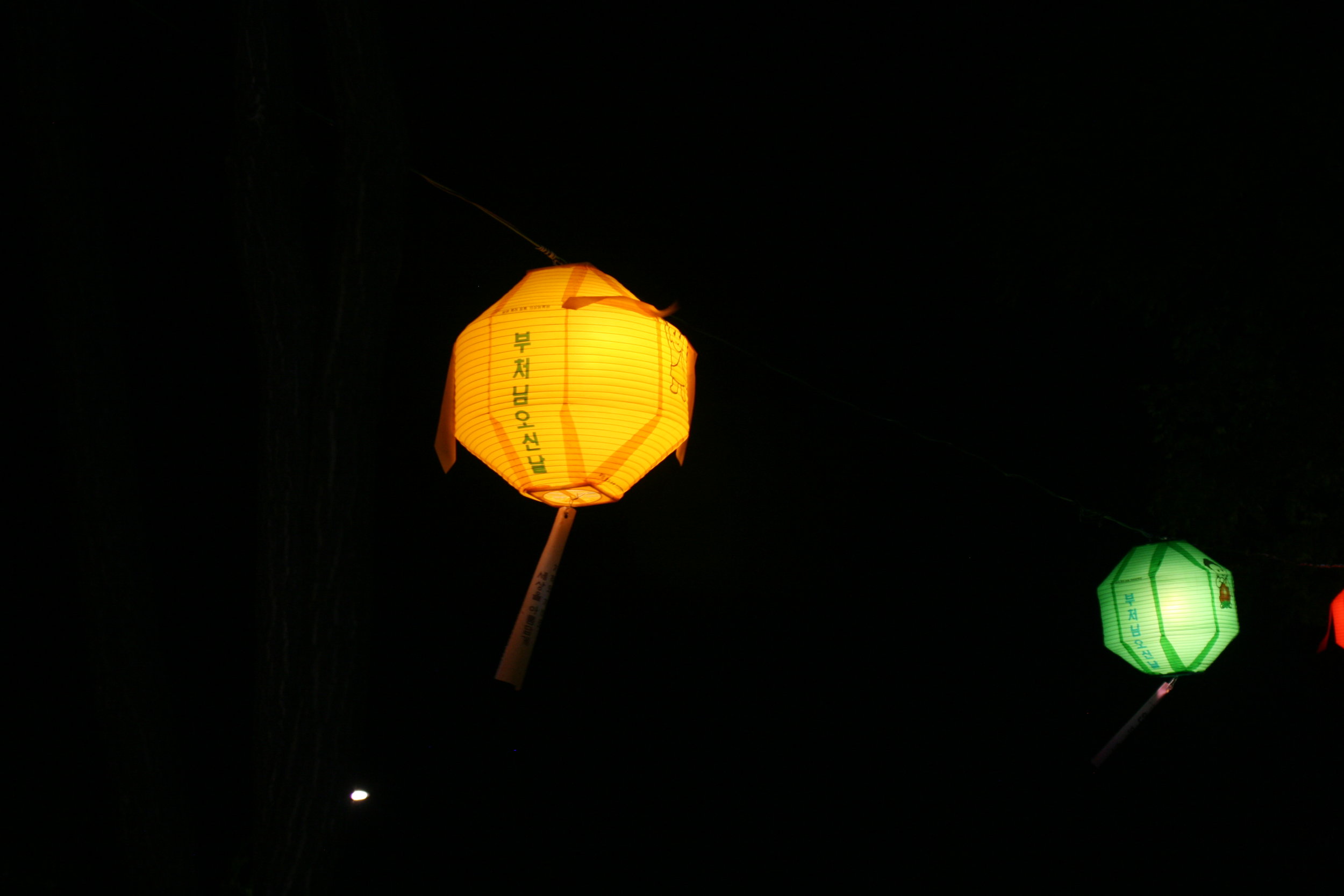
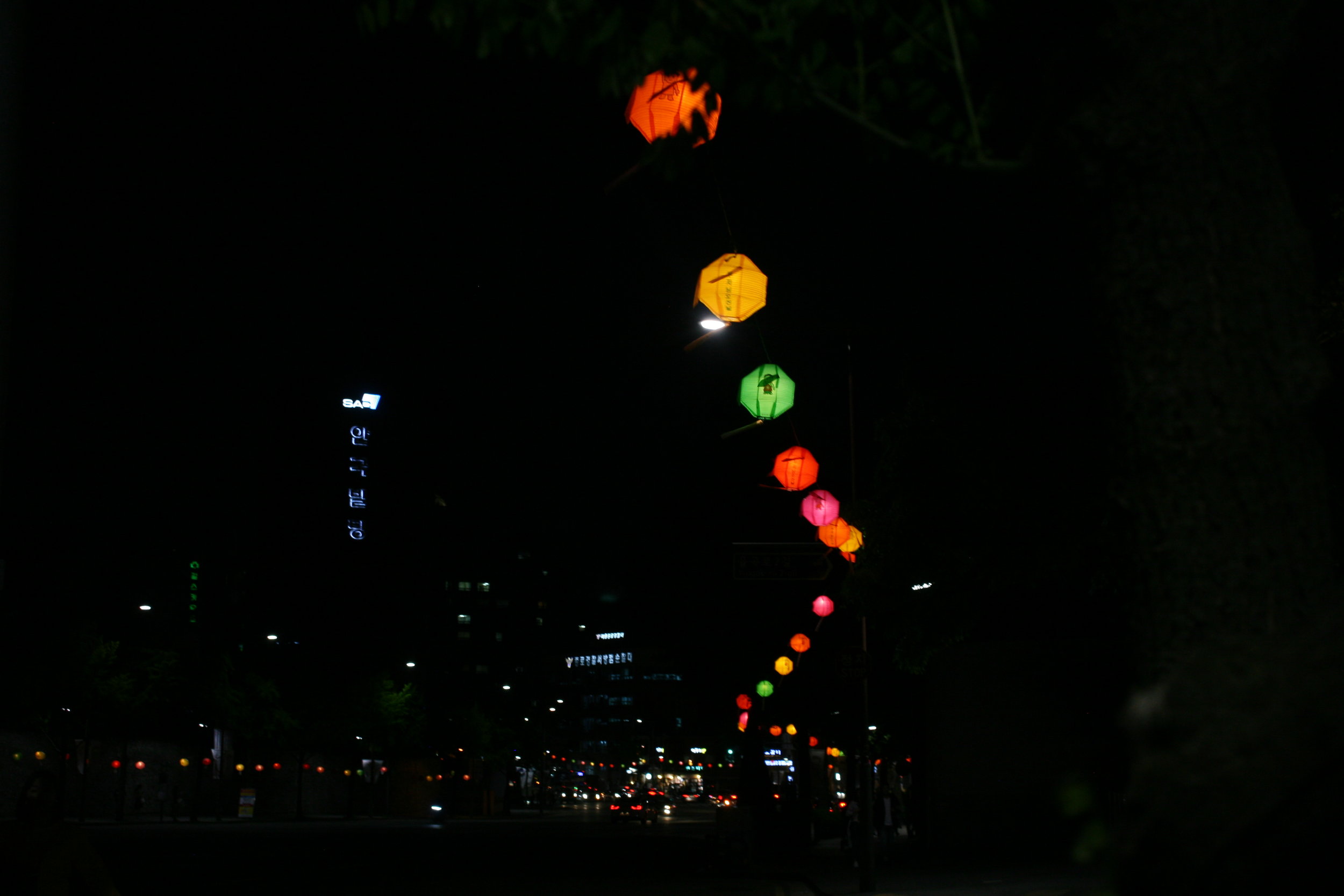
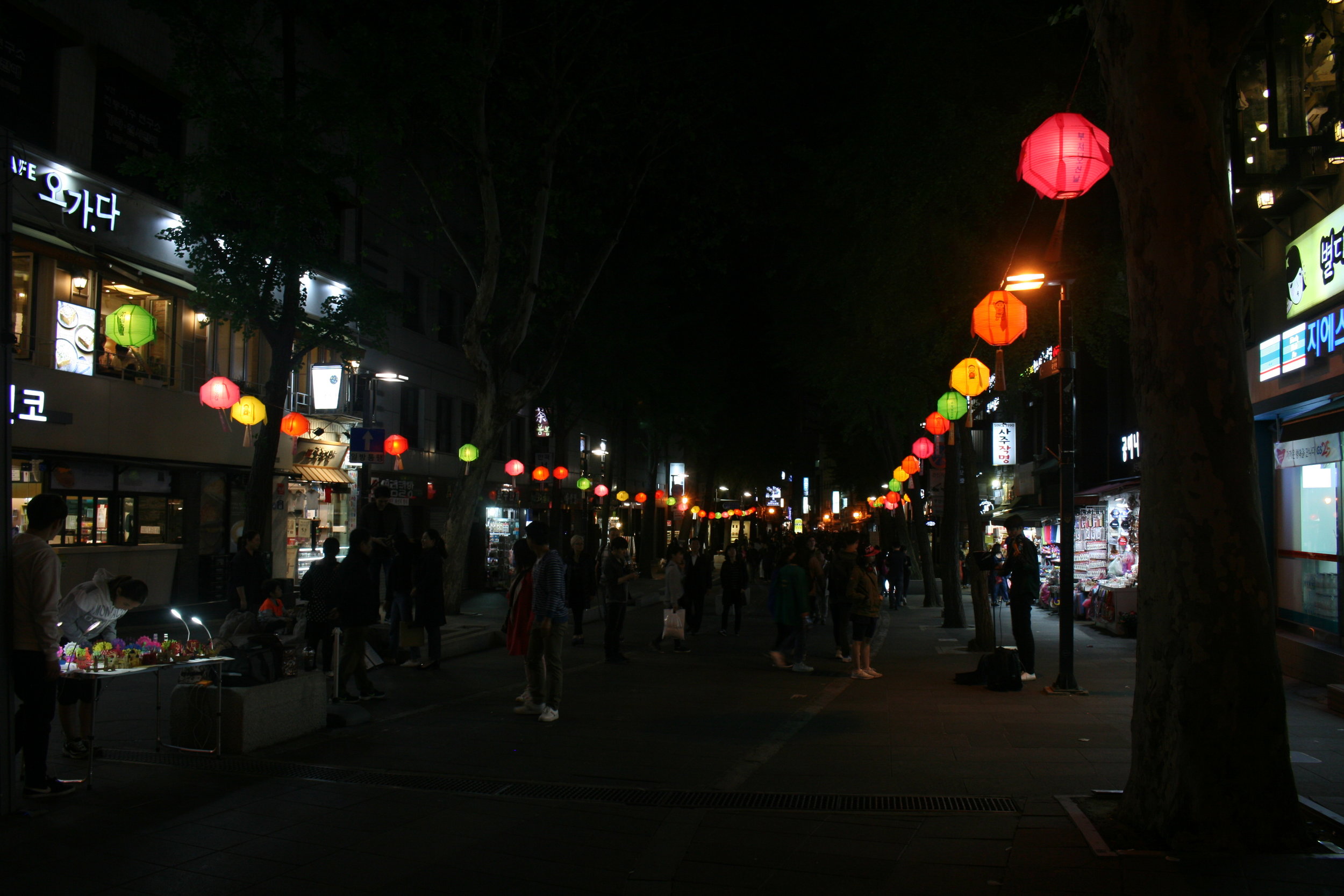
19:15 - National Museum of Korean Contemporary History
Japanese forced Koreans to take Japanese names → how does this make us think about people (I guess this is more often Chinese) taking English names?
Propaganda flyers on the proper way to bow toward Japan’s Imperial Palace
I friggin hate these montage videos of archival footage -- just pick a visual or narrative and focus attention on it -- trying to show too much shows nothing
History of oppression… Korea was the “hermit country,” then opened up and was colonized by Japan, then briefly liberated, then divided by a conflict between the USSR and the USA
Culture changes so much with shift from static (arts, literature, architecture) or transient (theater, music) to film and television as dominant art and media
I have yet to see a well curated museum exhibit on film or television (anywhere); who has done that and what does/would it look like?
Maybe there should be “cut scenes” in museums, like in video games
20:30 - Insadong and Myeong-dong - street food (chicken skewer, egg bun, Myeong-dong dumpling, honey ice cream)
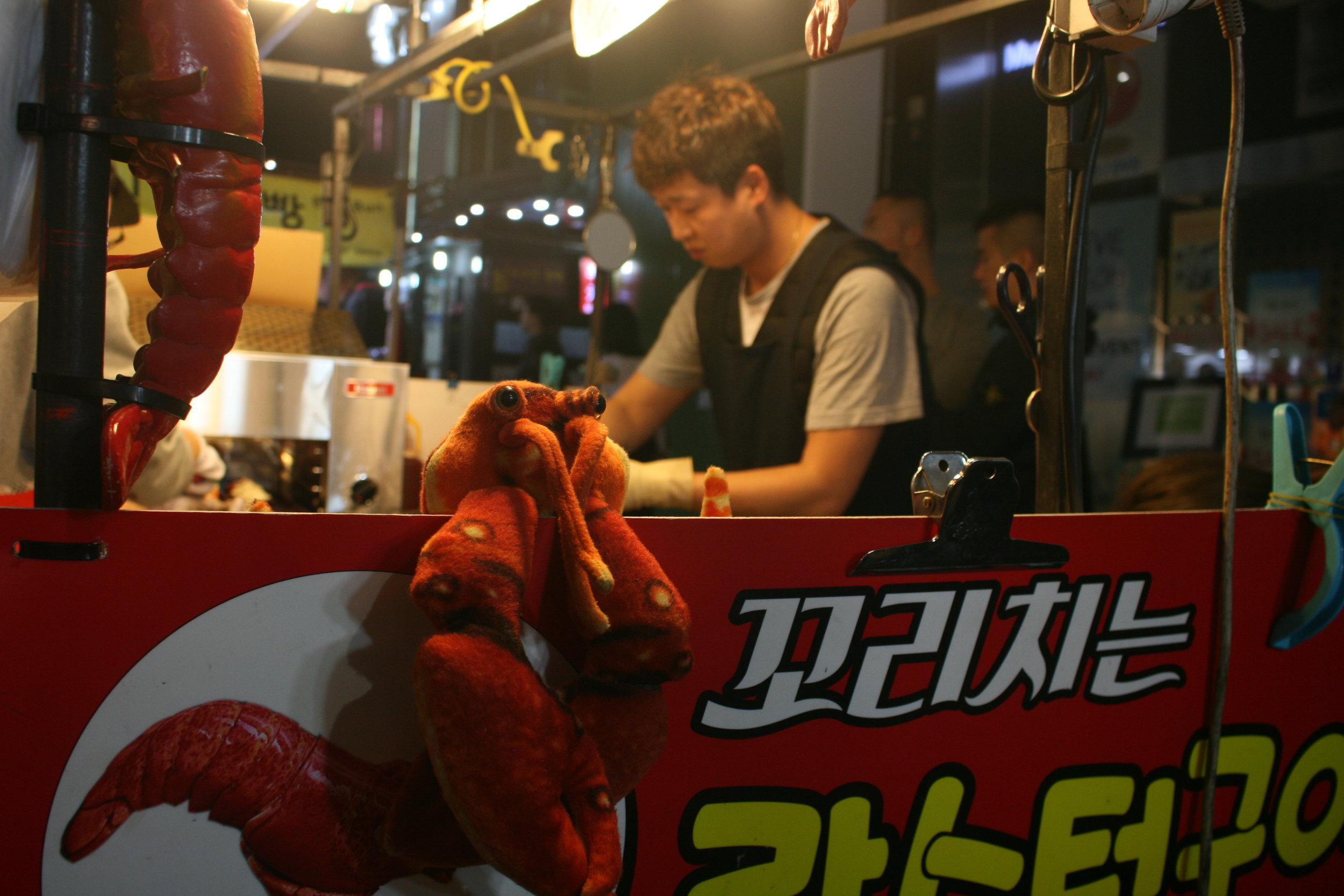
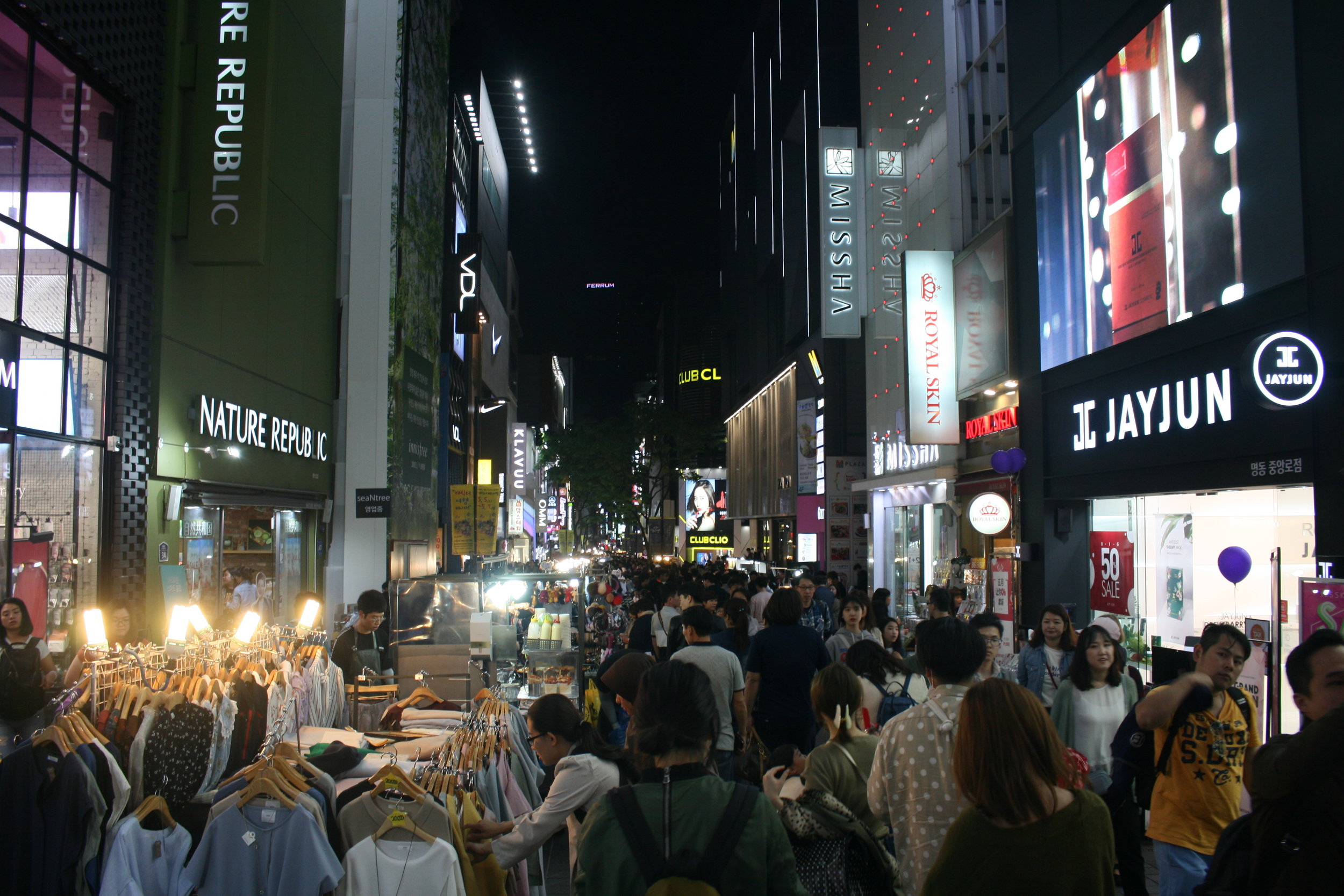
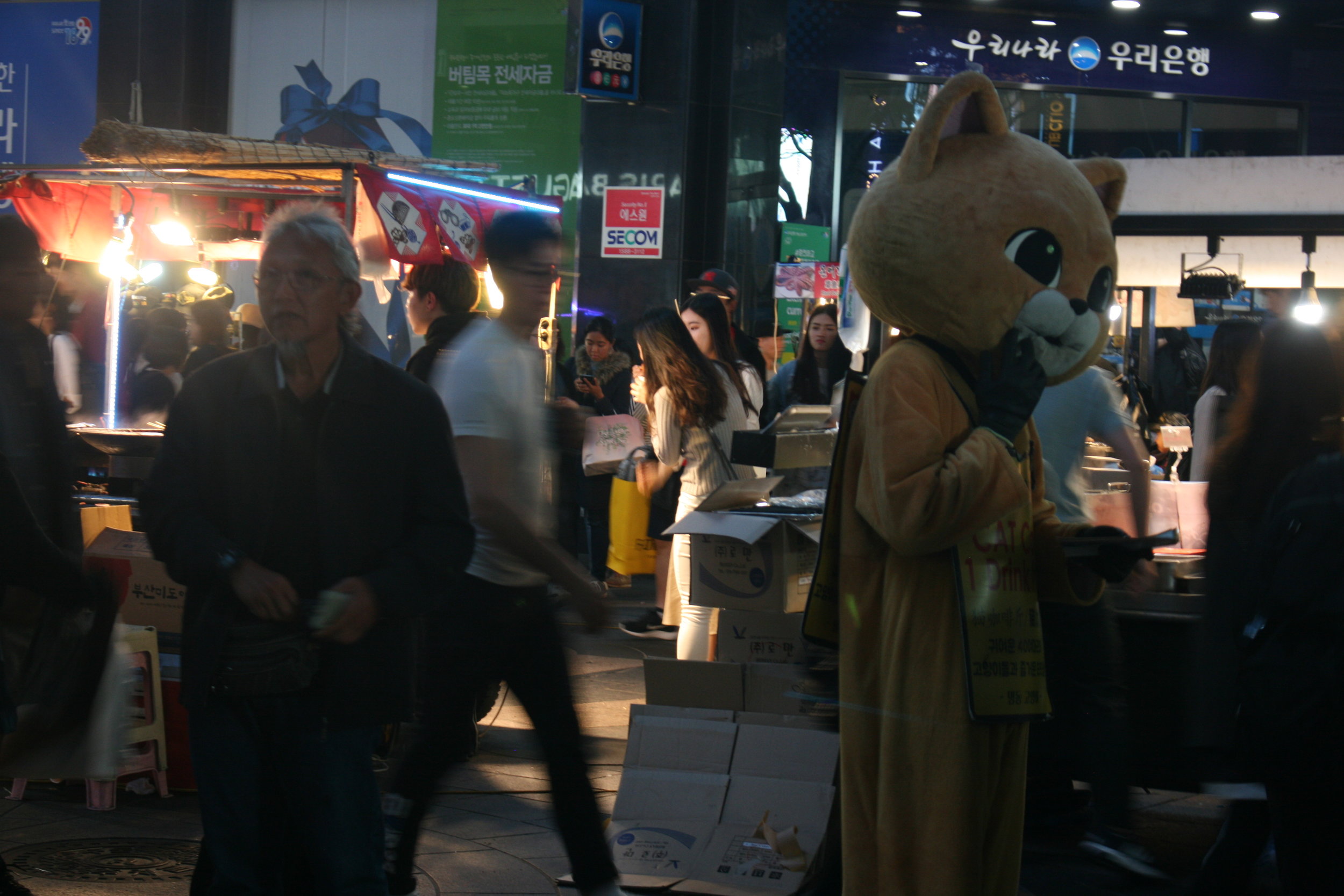

Evening takeaways:
There was a definite streak of self-aggrandizement in several places. There was the man who approached us outside the National Museum of Korea, deliberately using elevated vocabulary and complex sentence structure, mostly accurately, looking for validation of his English skills as well as his visiting professorship at Calvin College. The museums leaned heavily on words like “patriots” and “independence activists” to describe the Korean people, particularly in times of conflict; the tone verged on propagandistic at times, with inflated, emphatic turns of phrase, defensiveness over Korea’s role as both victim and victor. This naturally led to occasional paradoxes, such as celebration of Korean reforms at the end of the 19th Century, alongside (understandable) resentment at the results of Korea’s opening its doors, going from a “hermit country” to a global actor, which swiftly exposed it to Japanese invasion, occupation, and colonial rule. Celebration of the Goryeo and particularly Joseon periods emphasizes the development of a Korean identity through fine arts, the hangul writing system, and cultural consistency. The museum descriptions may drift toward hyperbole, but when it comes to much of this artwork, craftsmanship, and calligraphy, self-aggrandizement is justified.
The art filled in the outlines of an Eastern sensibility, with serene, balanced paintings on paper. The coexistence of image and text -- that is, calligraphy -- feels less like captioning and more like another form of representation. There's a satisfying poetic blurring between these elements, as if the artwork doesn't think they're as different from each other as perhaps a Western observer does. In the Leeum museum, Lee Jong-Sang’s Protofiguration 90024-Land synthesizes these characteristics and engages with Western abstraction in a thrilling way. Some other particularly striking works included the sun and moon motif behind the palace thrones (recreated in the museum and in the palaces themselves), the branch-twig-flower-and-butterfly vertical paintings, the silent ceremonial bells, the imposing yet benevolent Buddha statues, and, most breathtaking, the lacquer wood boxes inlaid with mother-of-pearl. These made me gasp.
2.
09:00 - Changdeokgung
Quiet with birds translocating in the rain
Sun and moon painting behind throne → total dominion, true sense of power
Carved or embossed calligraphic characters → handwriting made solid → reminds me of Laura Owens, etc.
Medicine has flavors more commonly known for fragrance than taste -- but strange and wonderful
Chiropractor healer testing strength of hands (pulling harder on the right side), rolling then cracking the neck, he was right that our head leans to one side, realigned the bones
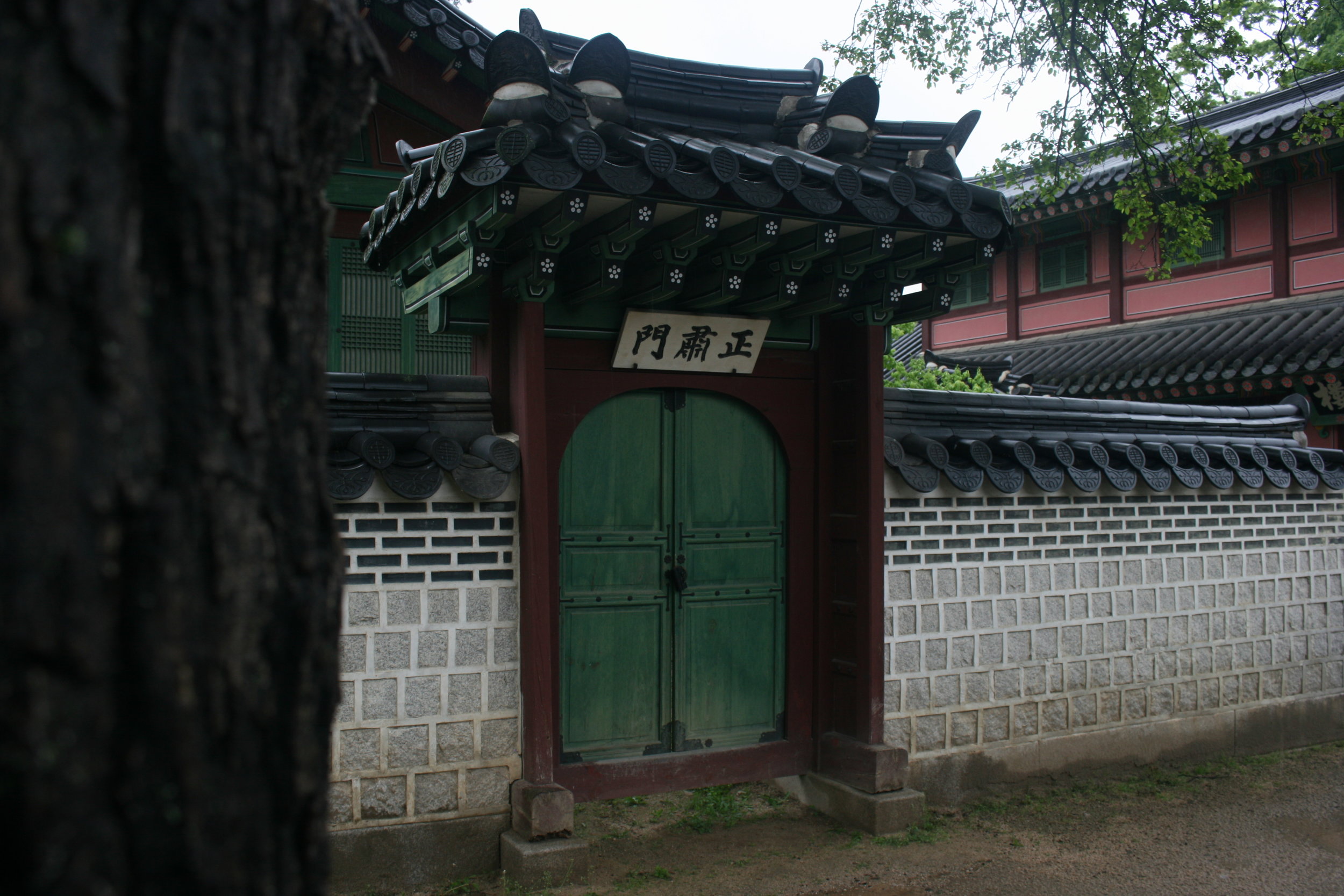
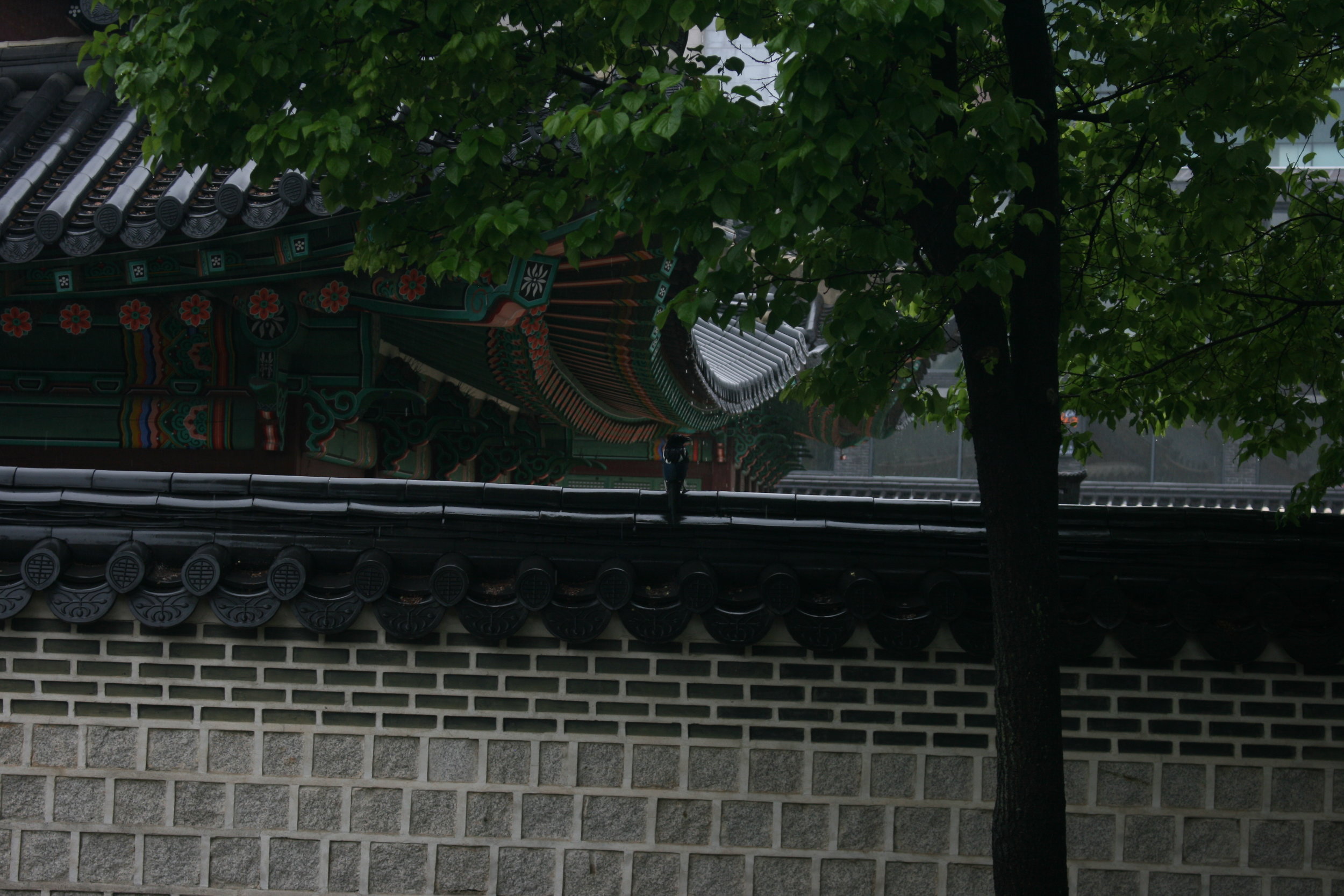
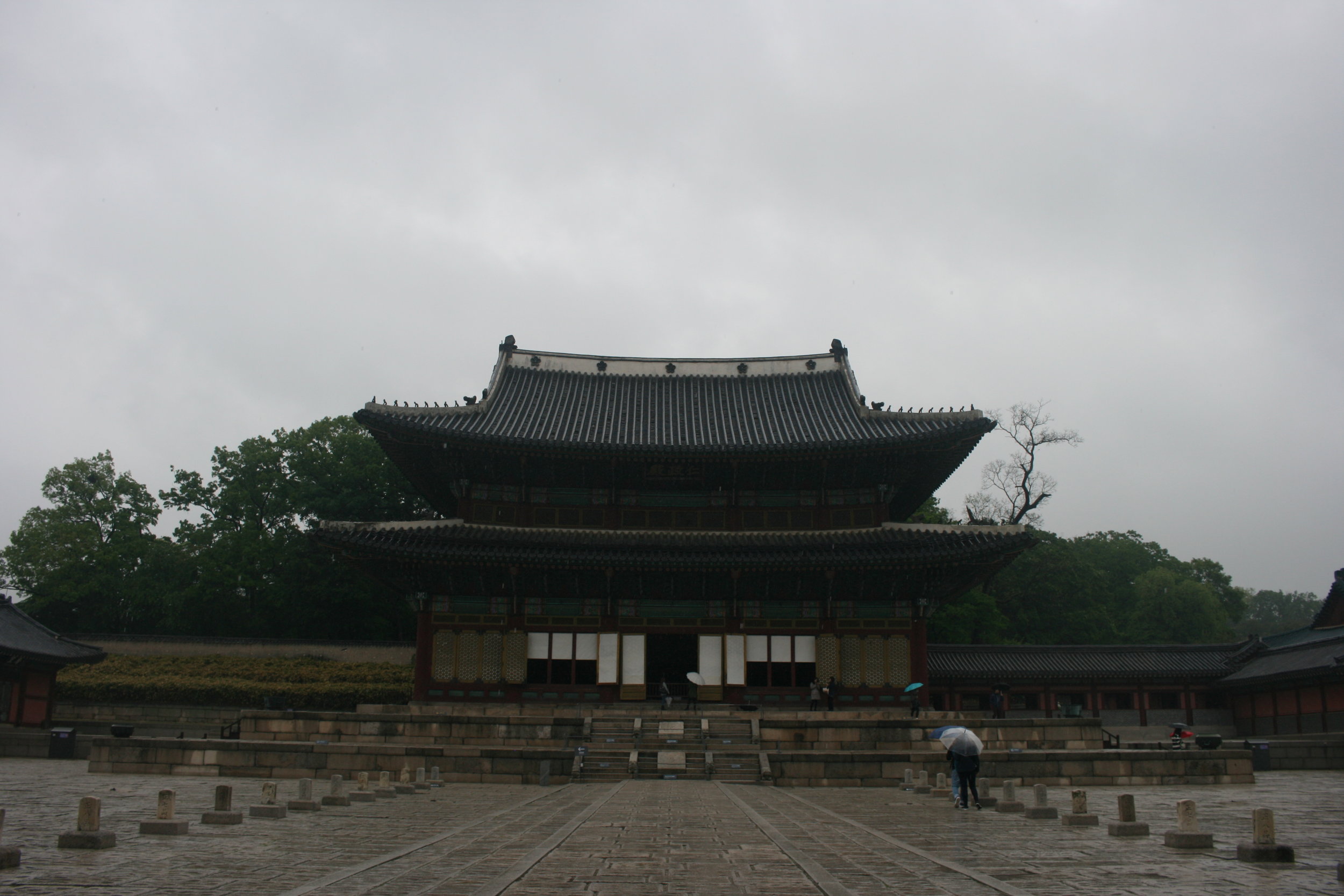
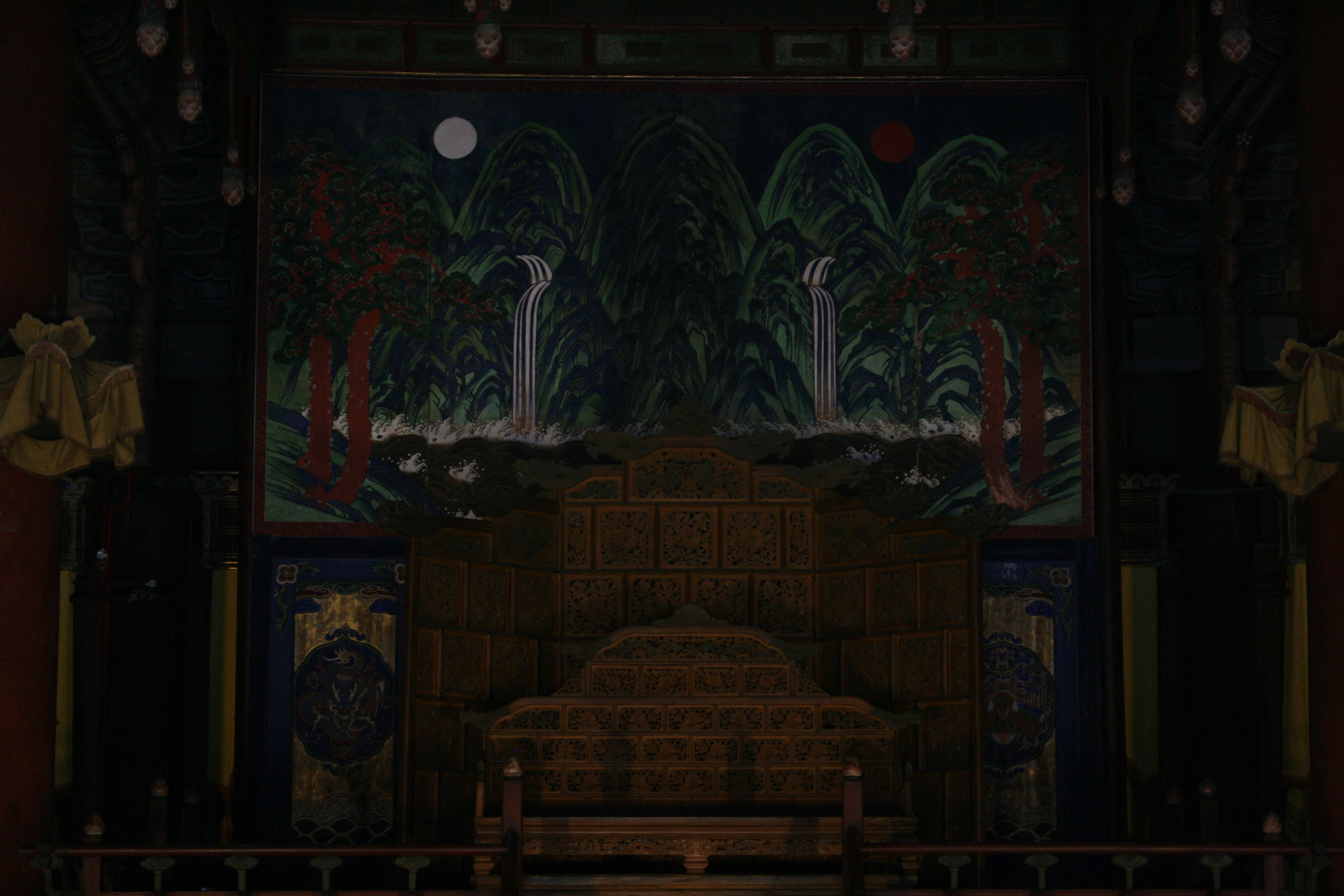
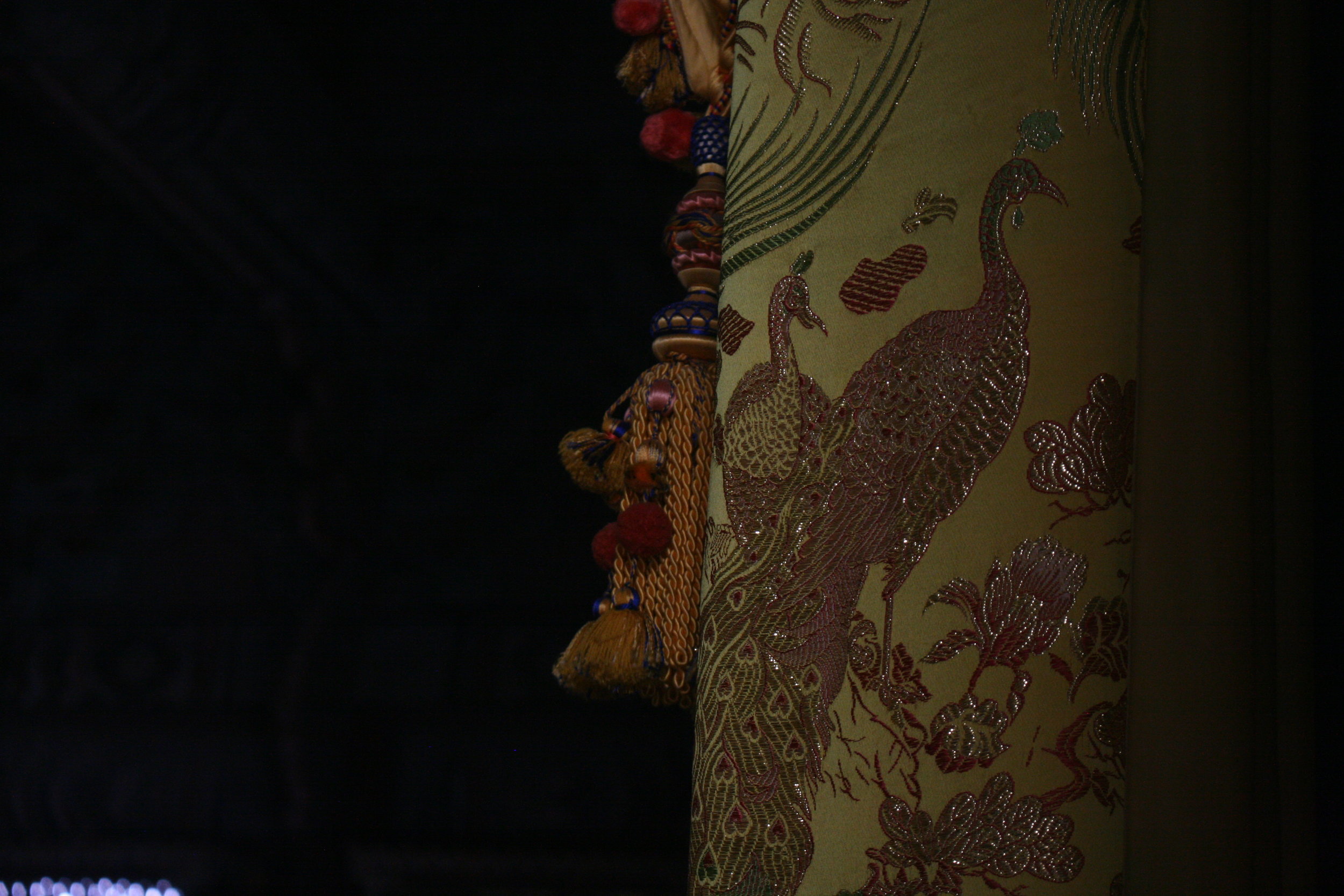
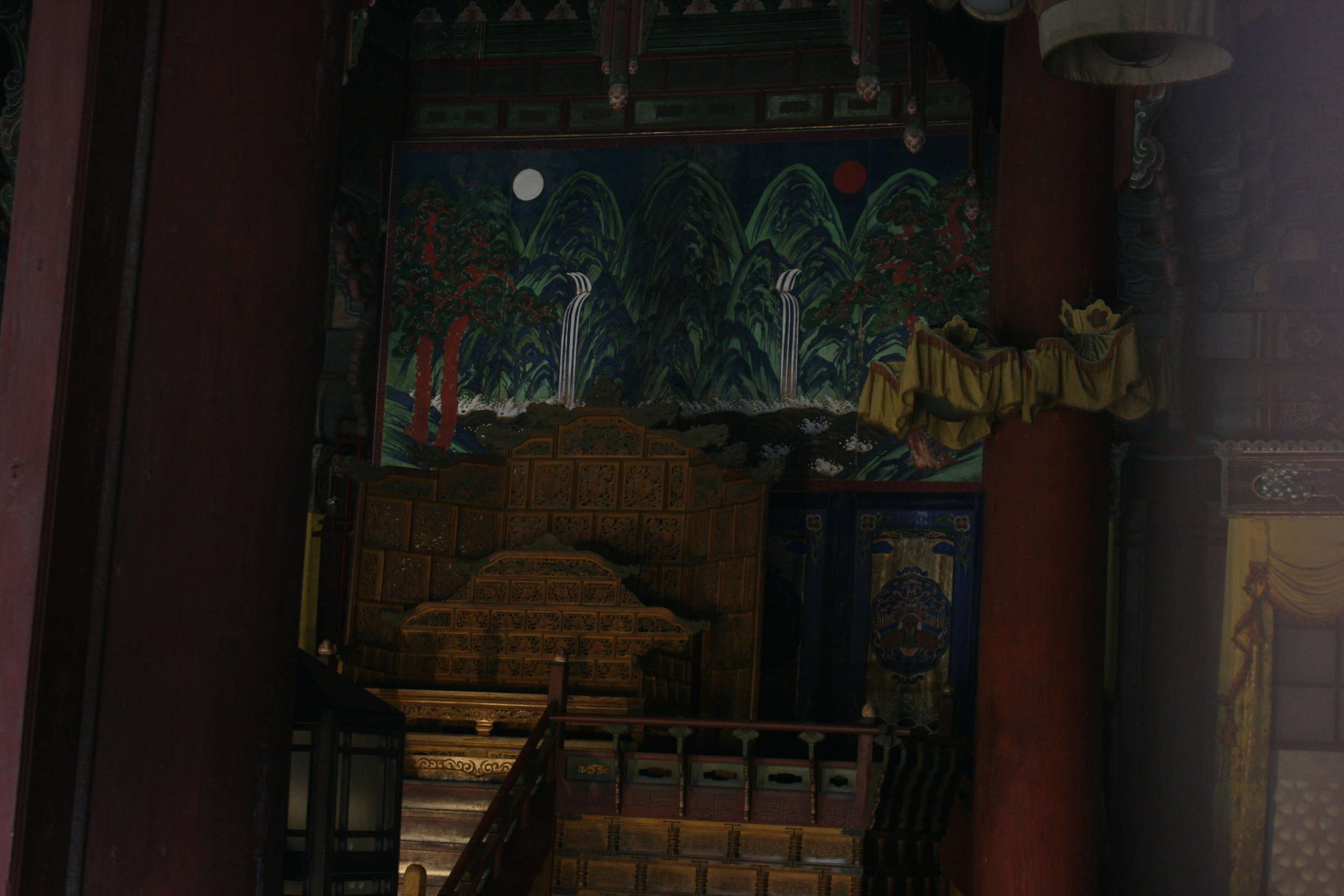
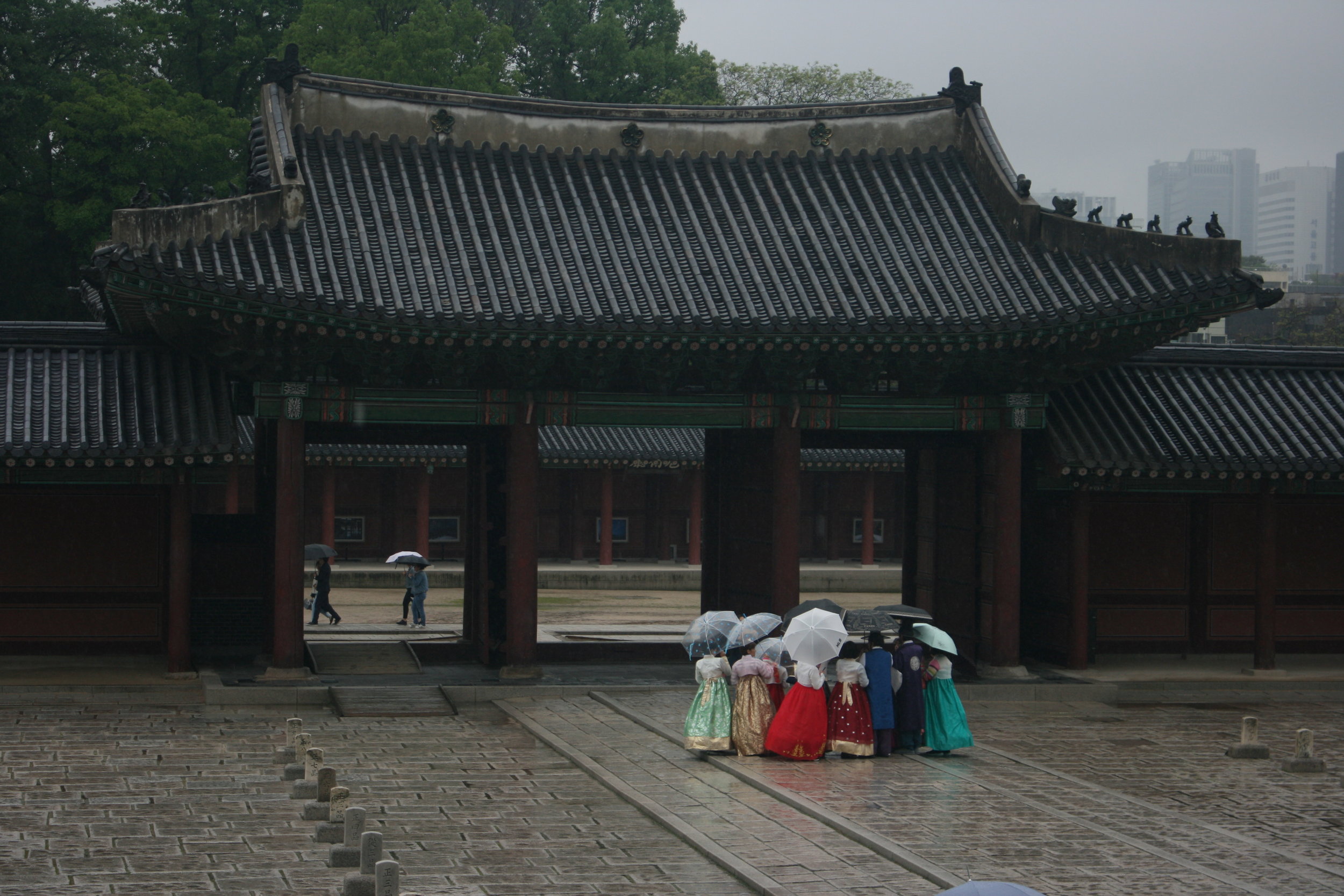
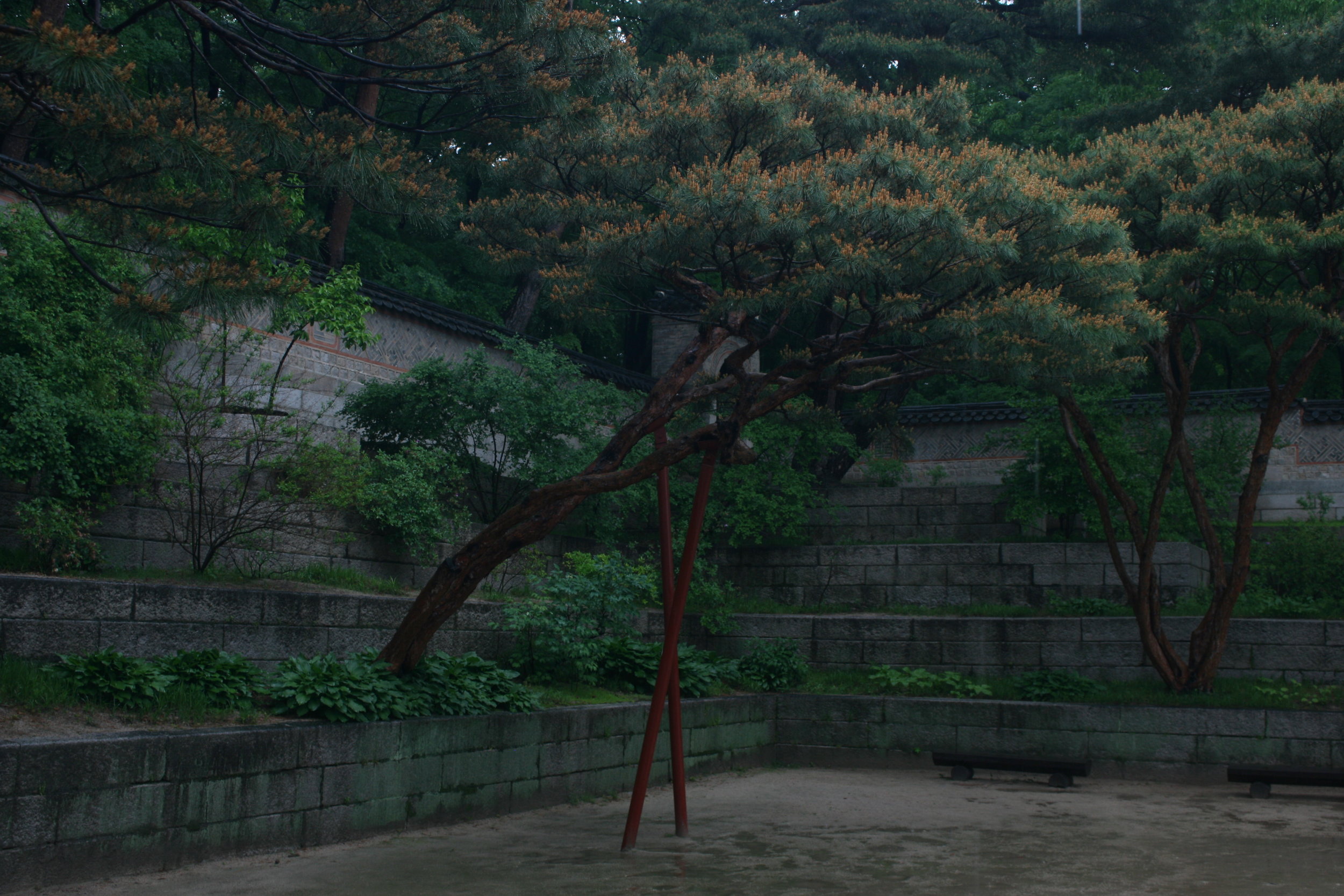
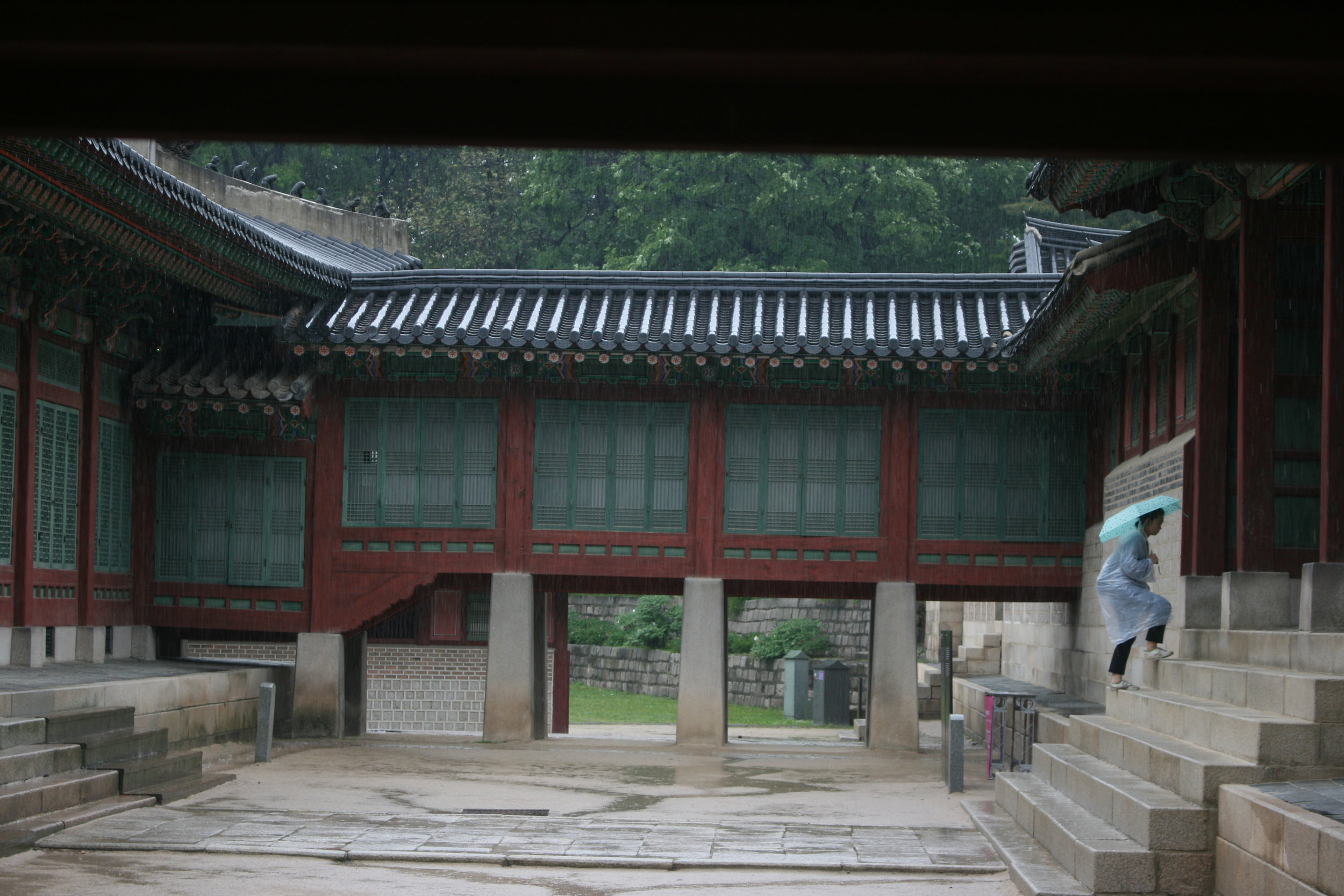
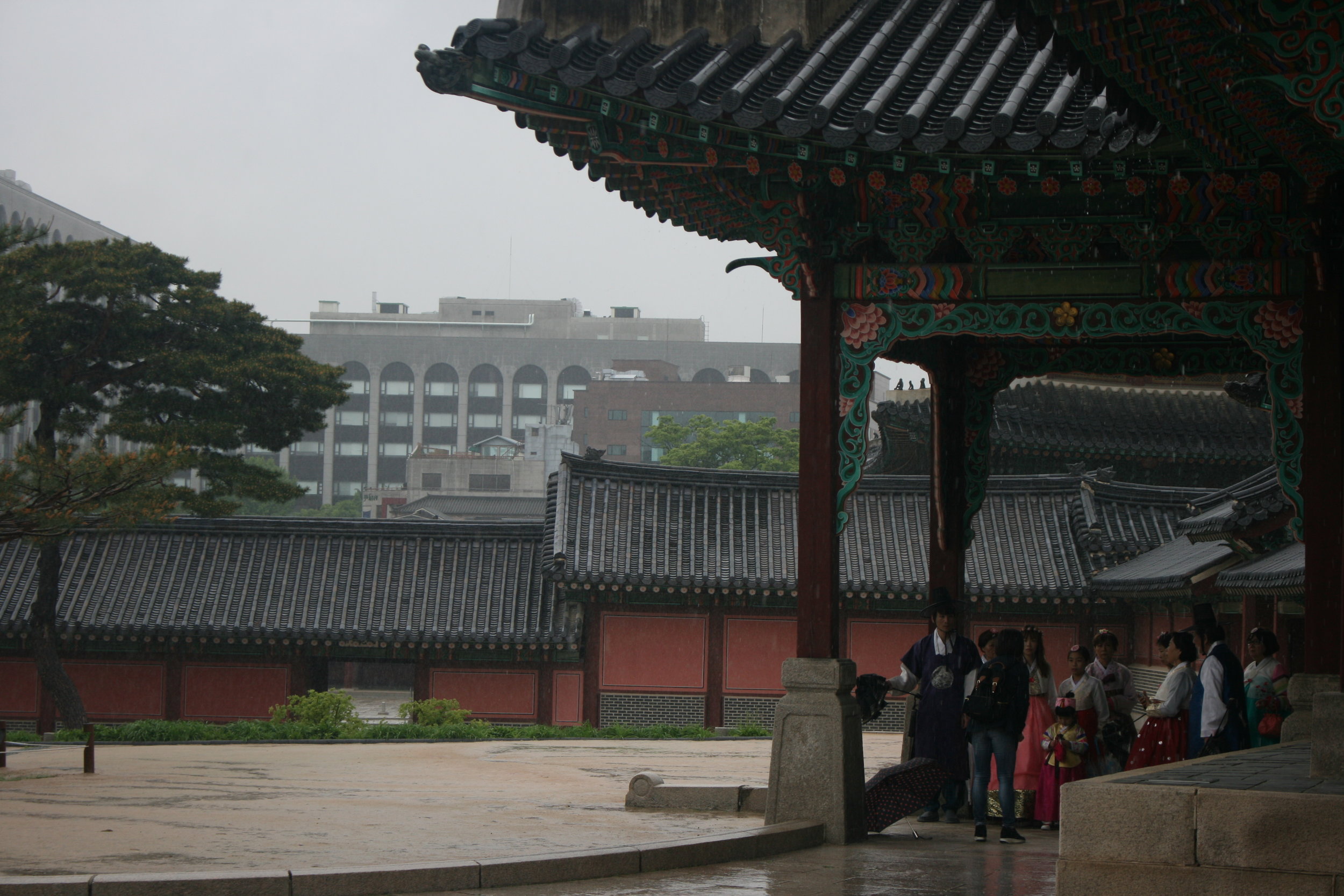
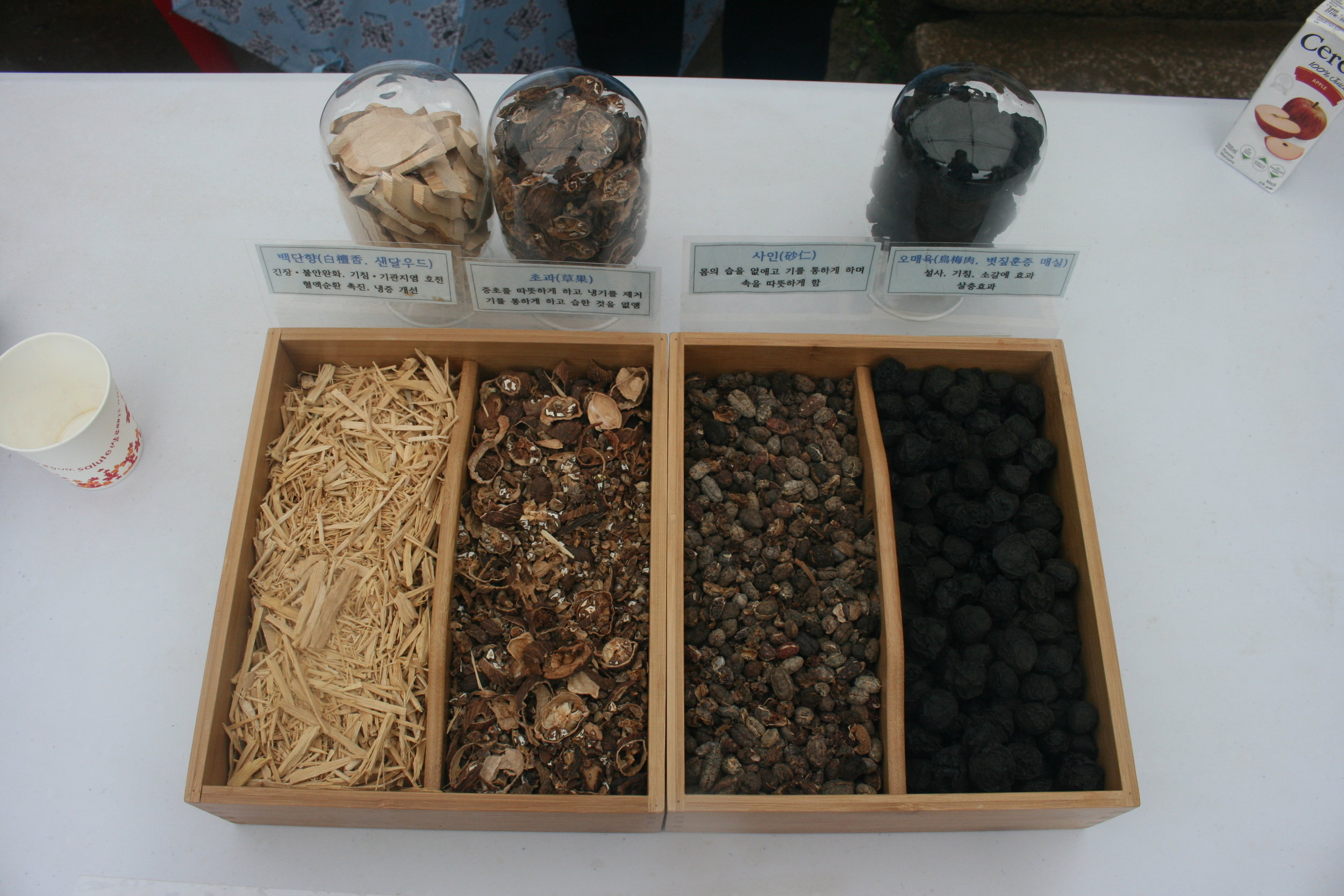
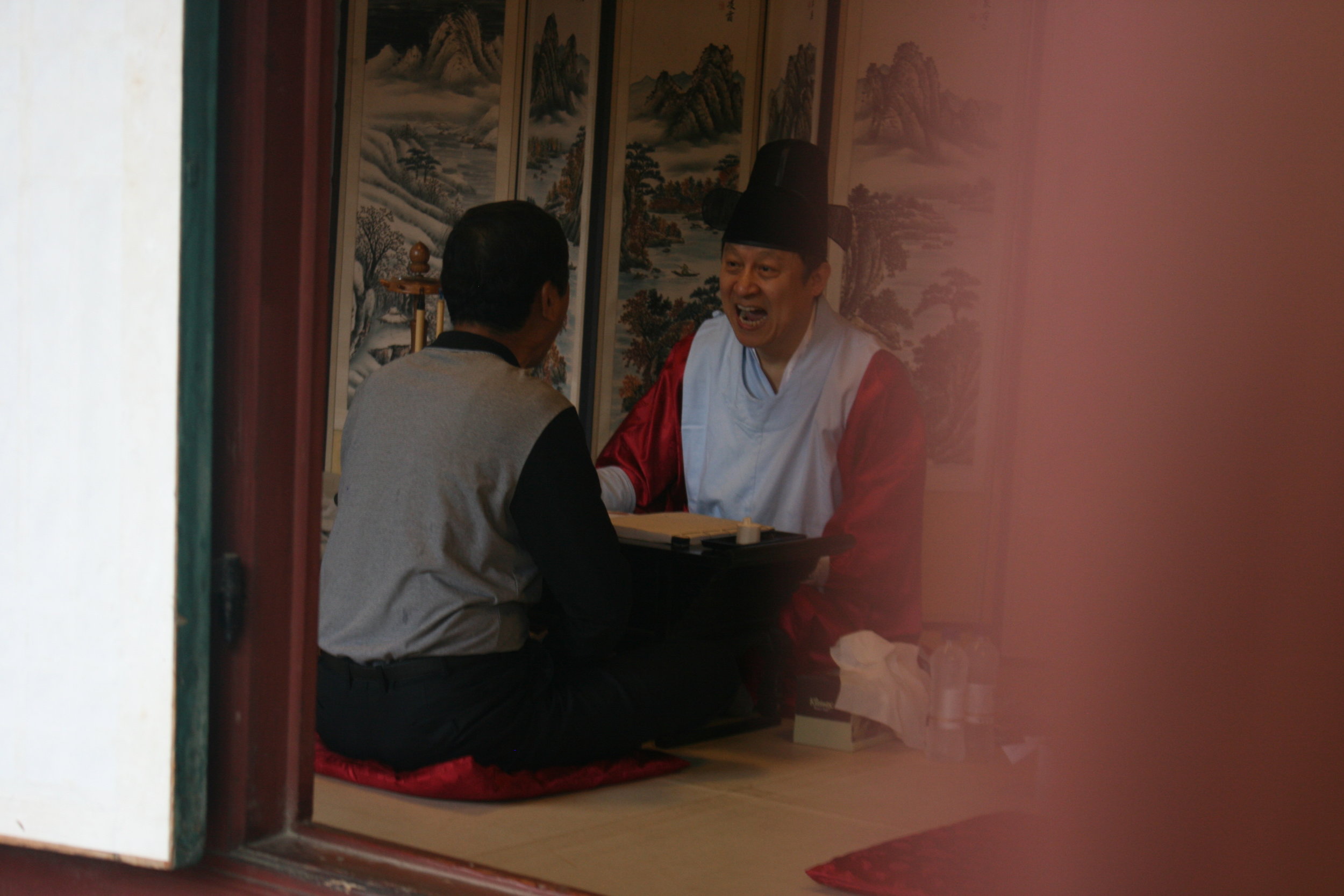
10:30 - Changdeokgung "Secret Garden"
“Stop Getting Old Gate” → Longevity Gate → linguistic difference, idea of constructing concepts…
Characters really are more like symbols, which is why they don't feel out if place painted or etched in strips outside of buildings, unlike, say, the English word “good fortune” or whatever
Drinking game: send wine cup down man-made stream, compose poem before it reaches the end, whoever fails drinks
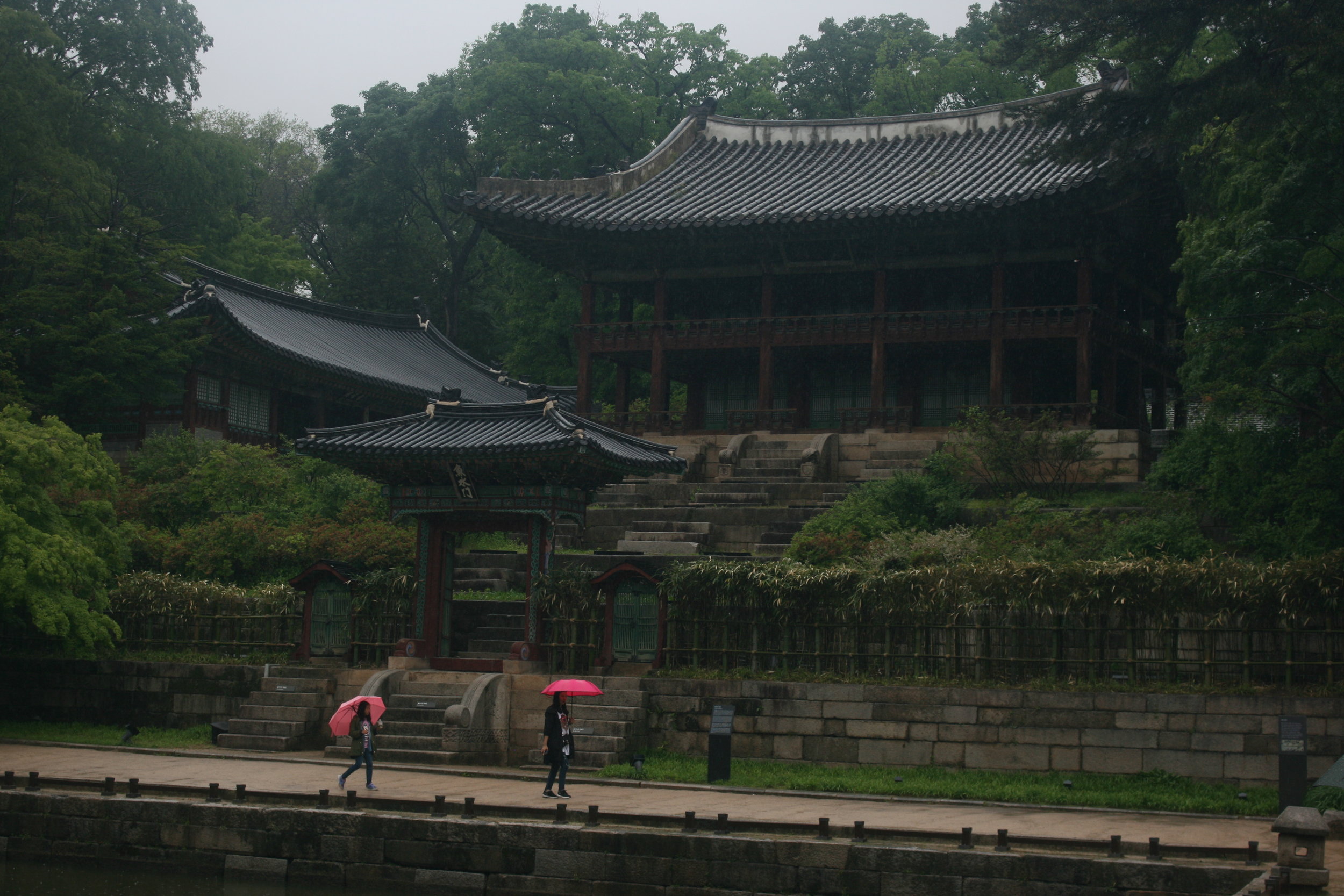
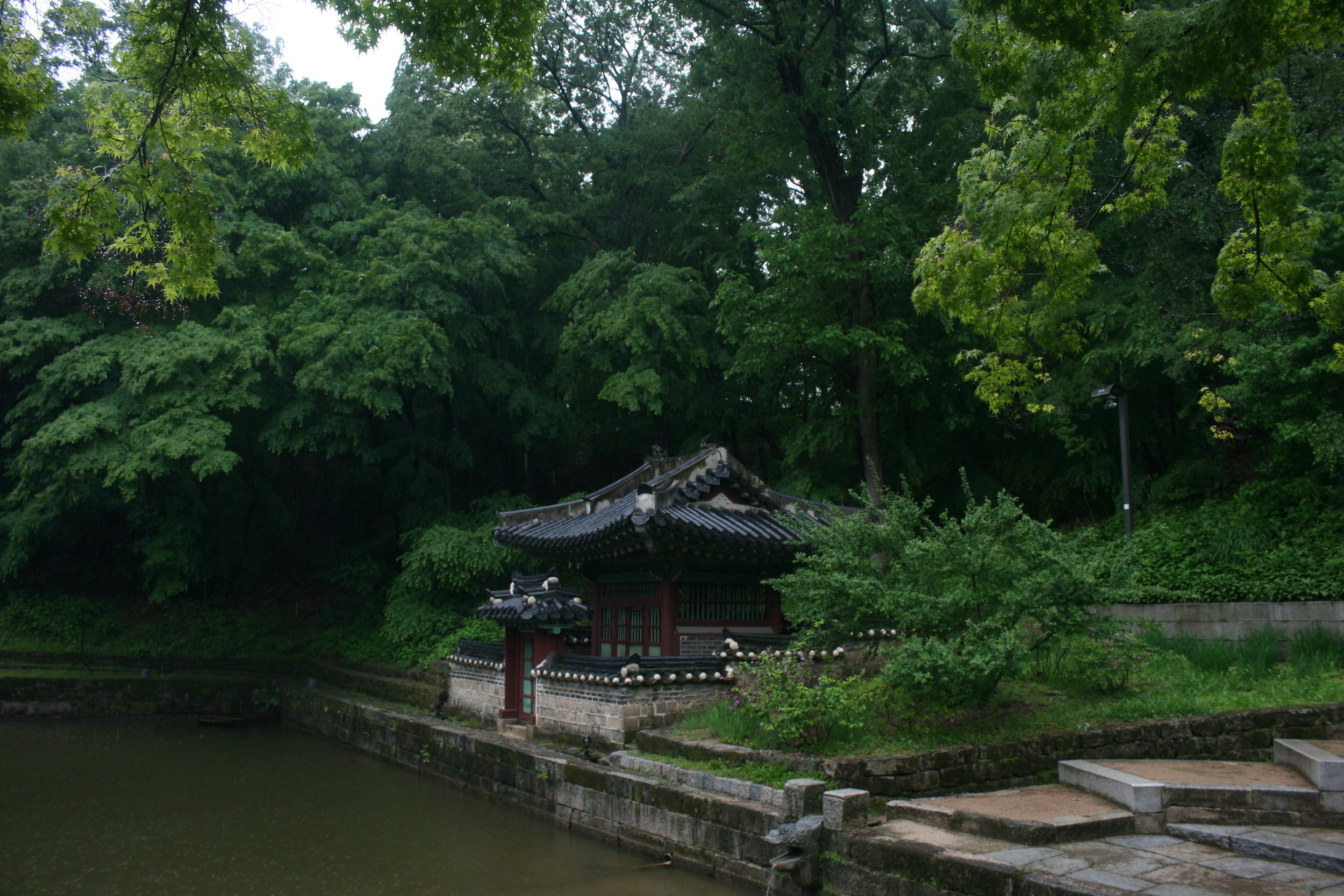
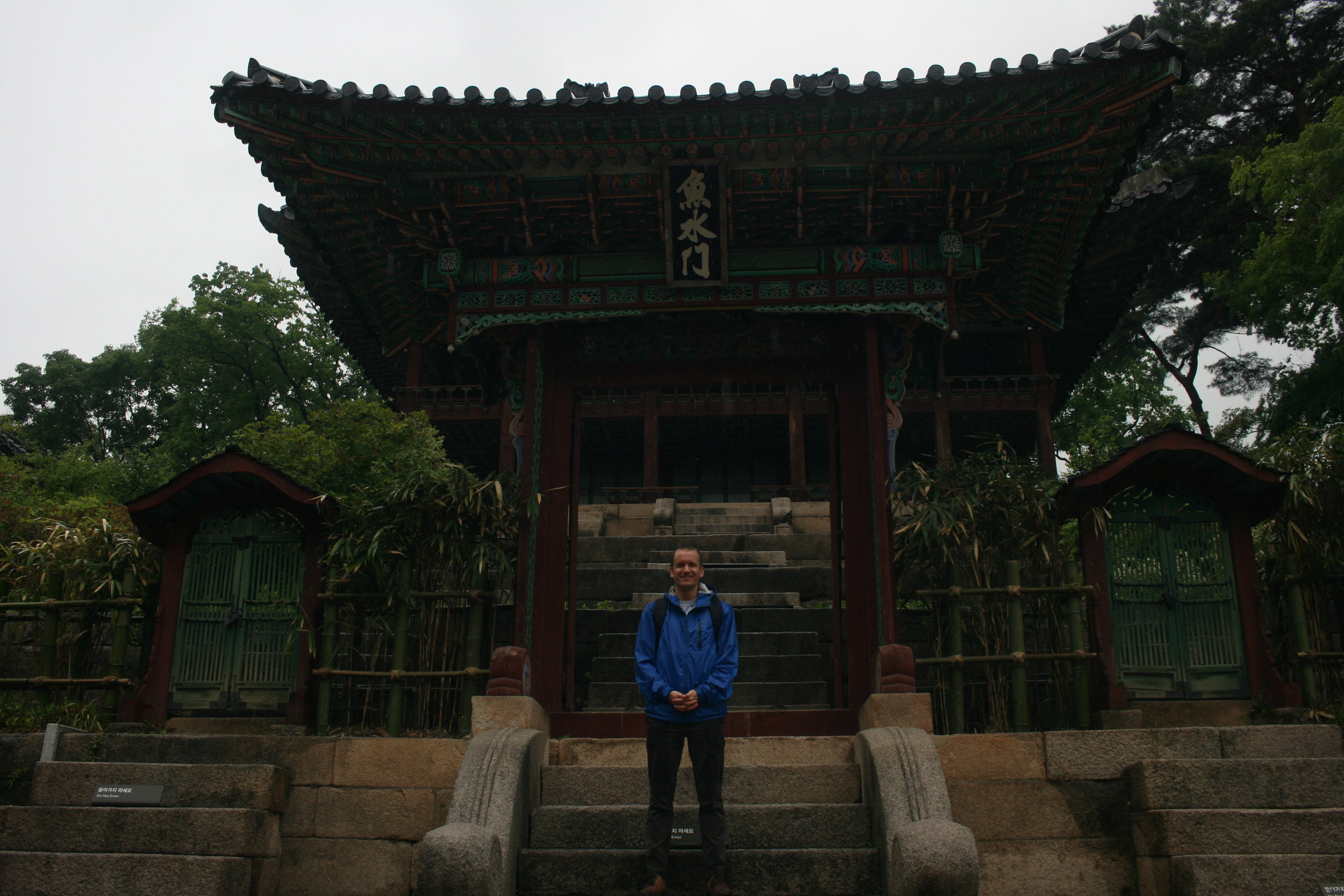
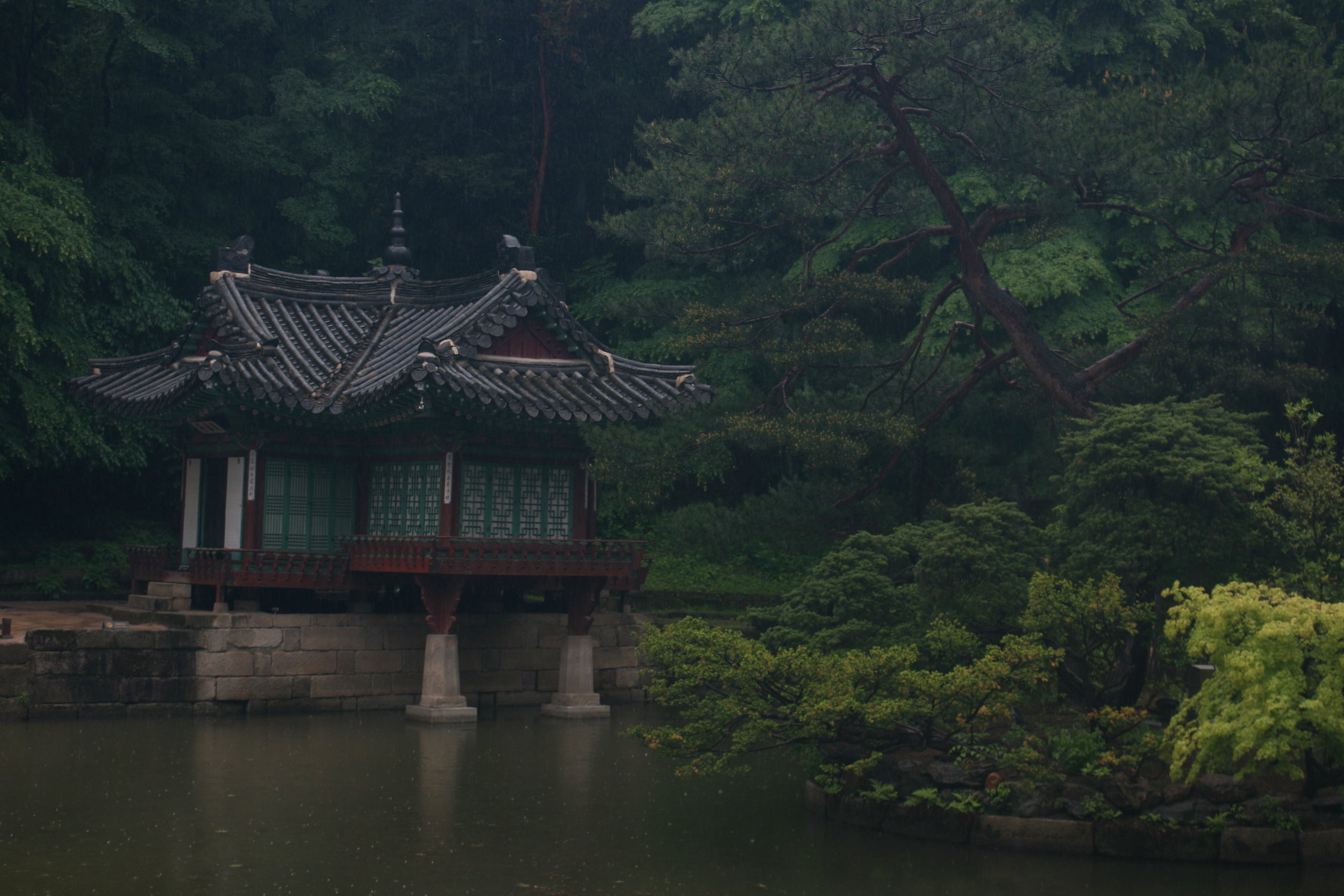
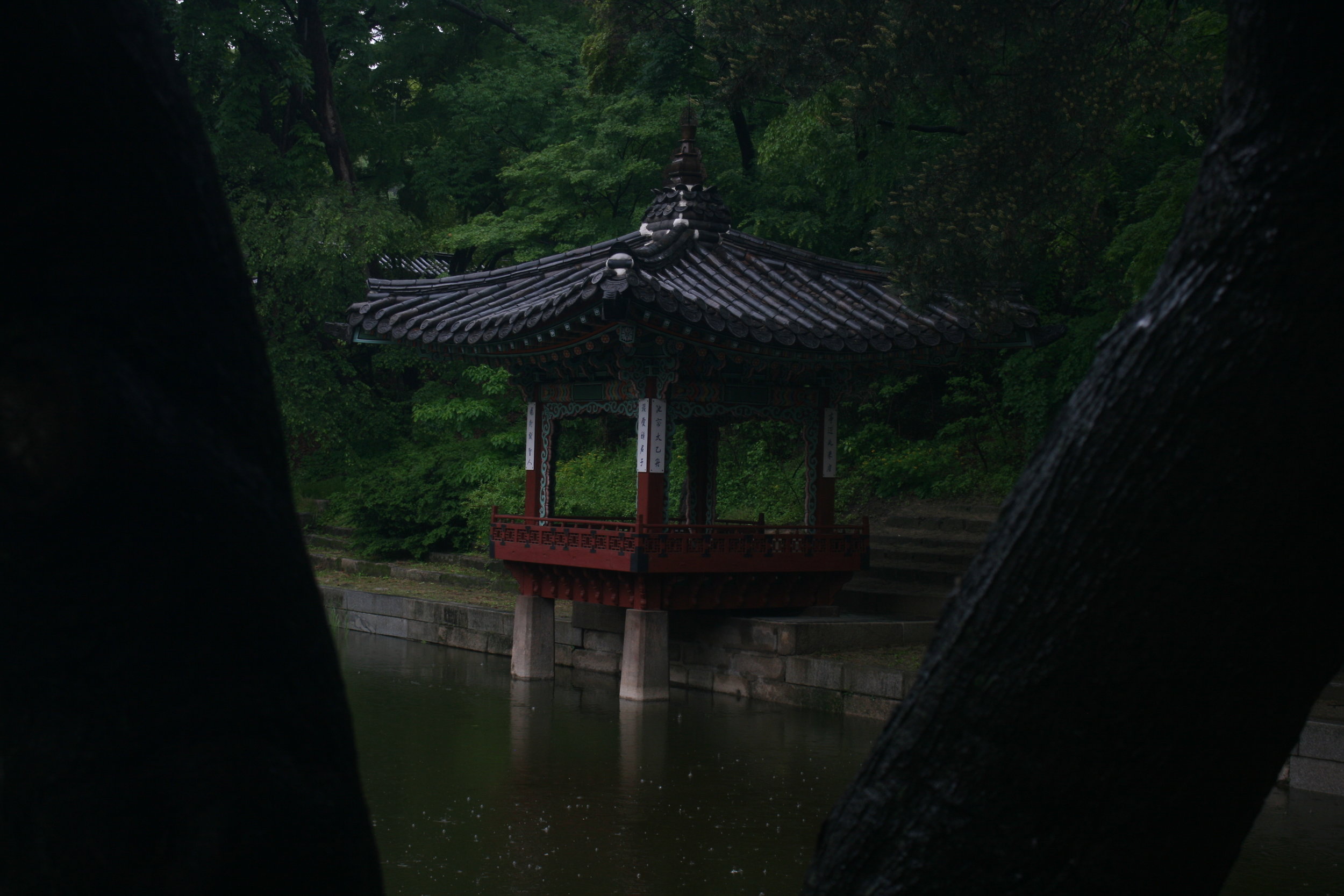
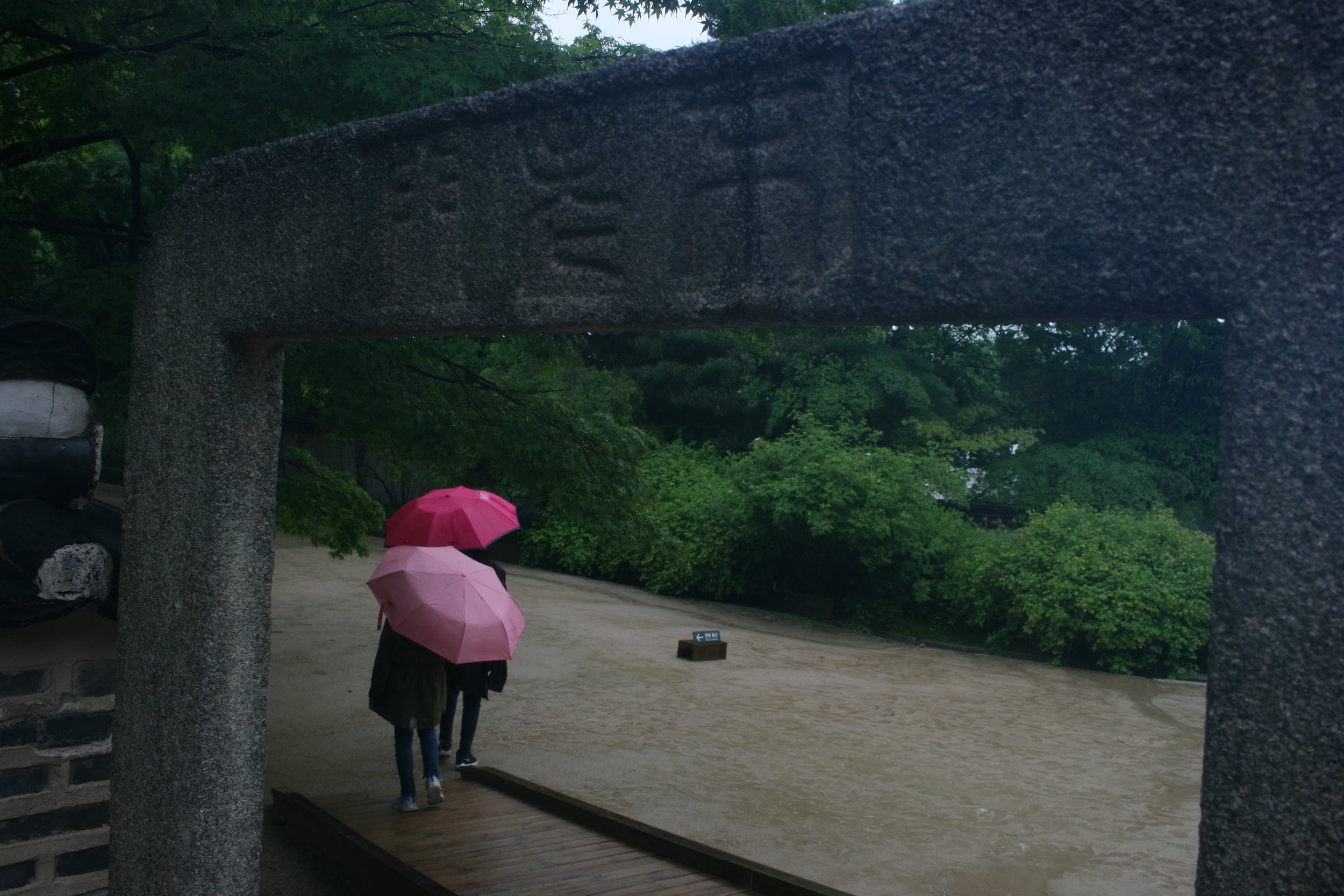
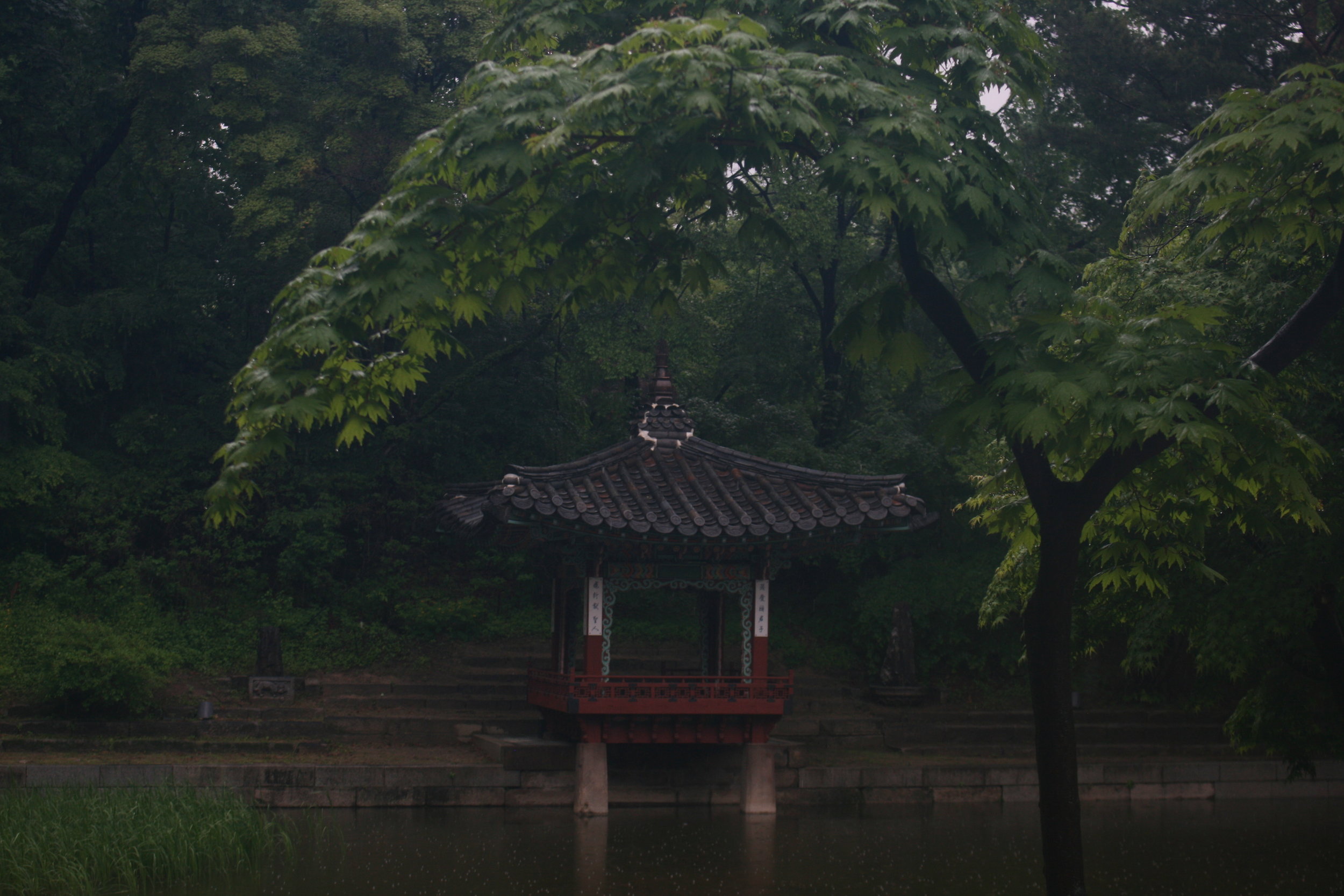
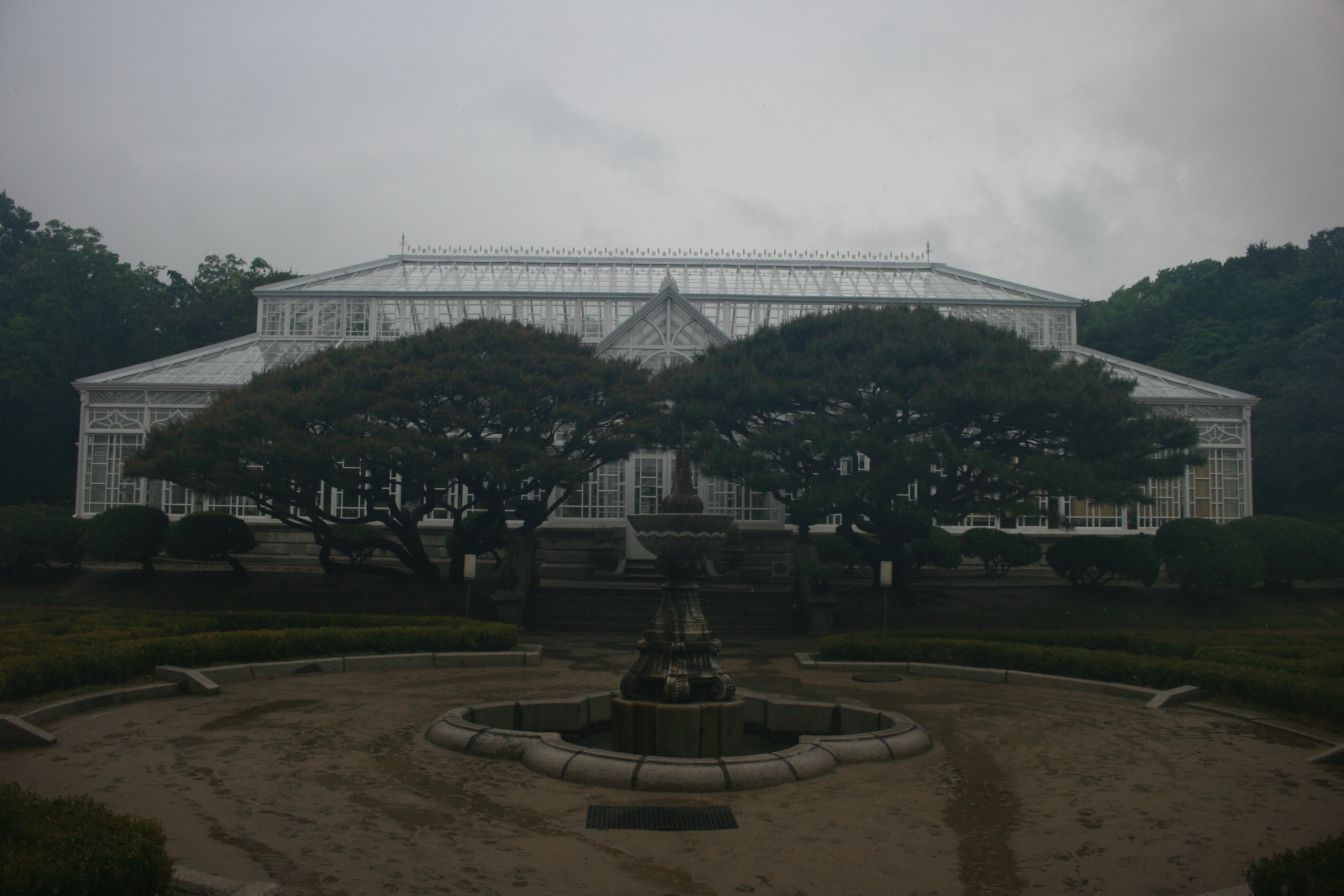
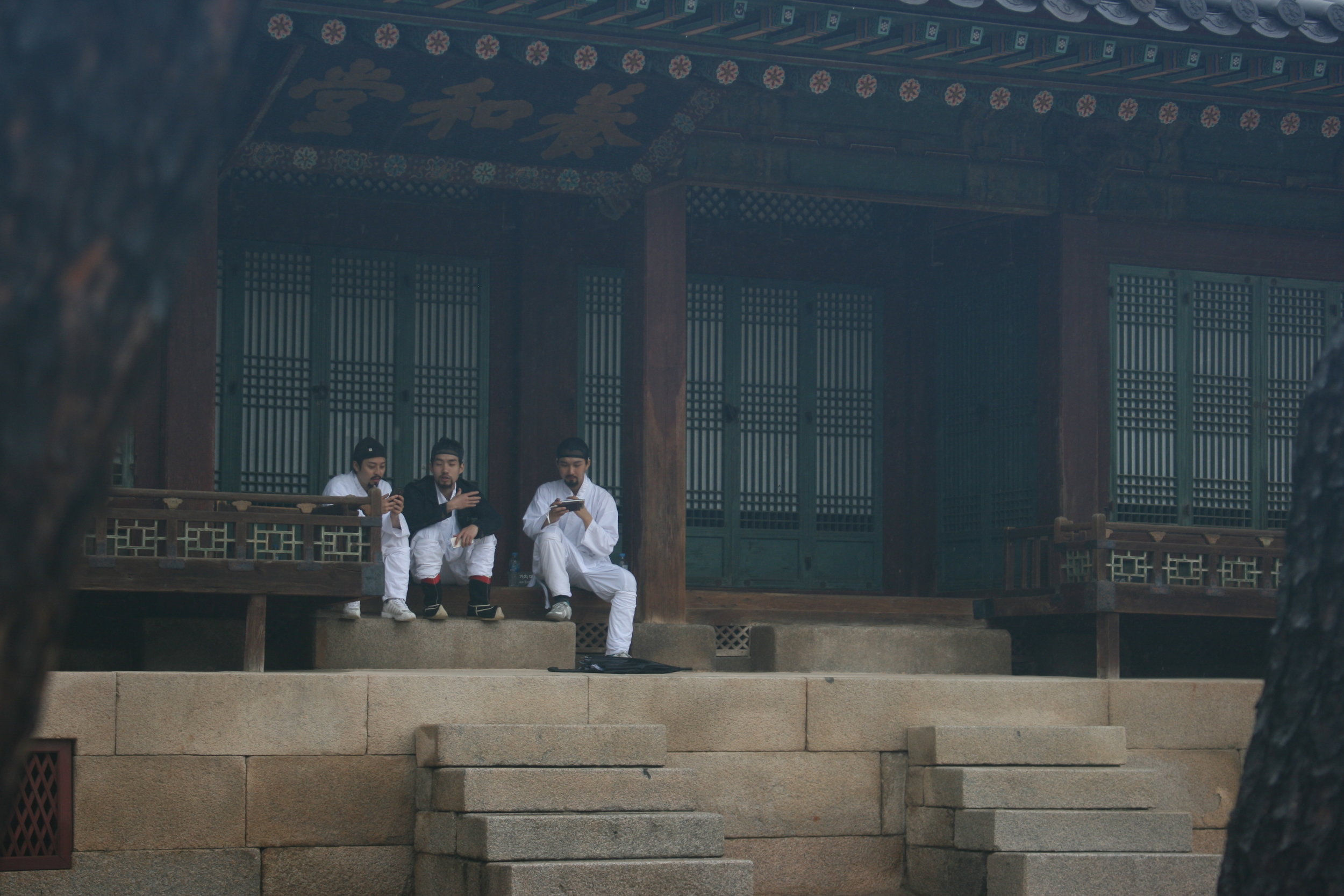
11:45 - Changgyeonggung
12:30 - Tea at 47 Beonga Teahouse - Green plum tea and Dried persimmons
Removing shoes and sitting on the floor changes the quality of the domestic space → parameters create tone; same for quality of furniture, music, fragrance
14:00 - Seoul Museum of History
Unjongga: “street where people gather like clouds”
Another issue with archival war film: the soundtrack is always unforgivable
14:45 - Gyeonghuigung
Why gates -- in every urban culture -- grand gesture of… entry, passing through? Defense? Thresholds → are there places with gradient or ambiguous thresholds?
These palaces are all empty… reminders of destruction; lonely; sense of loss, almost erasure
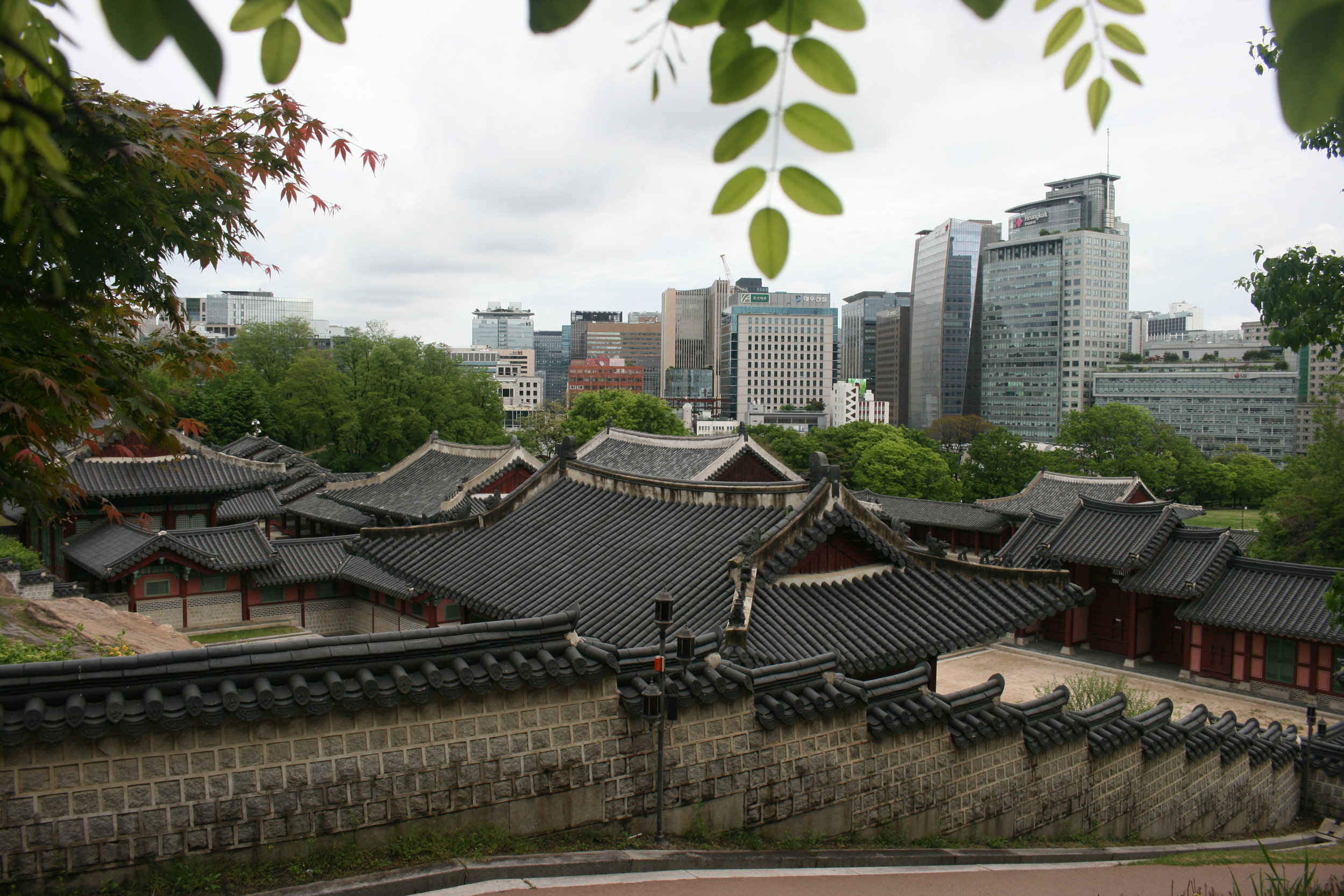
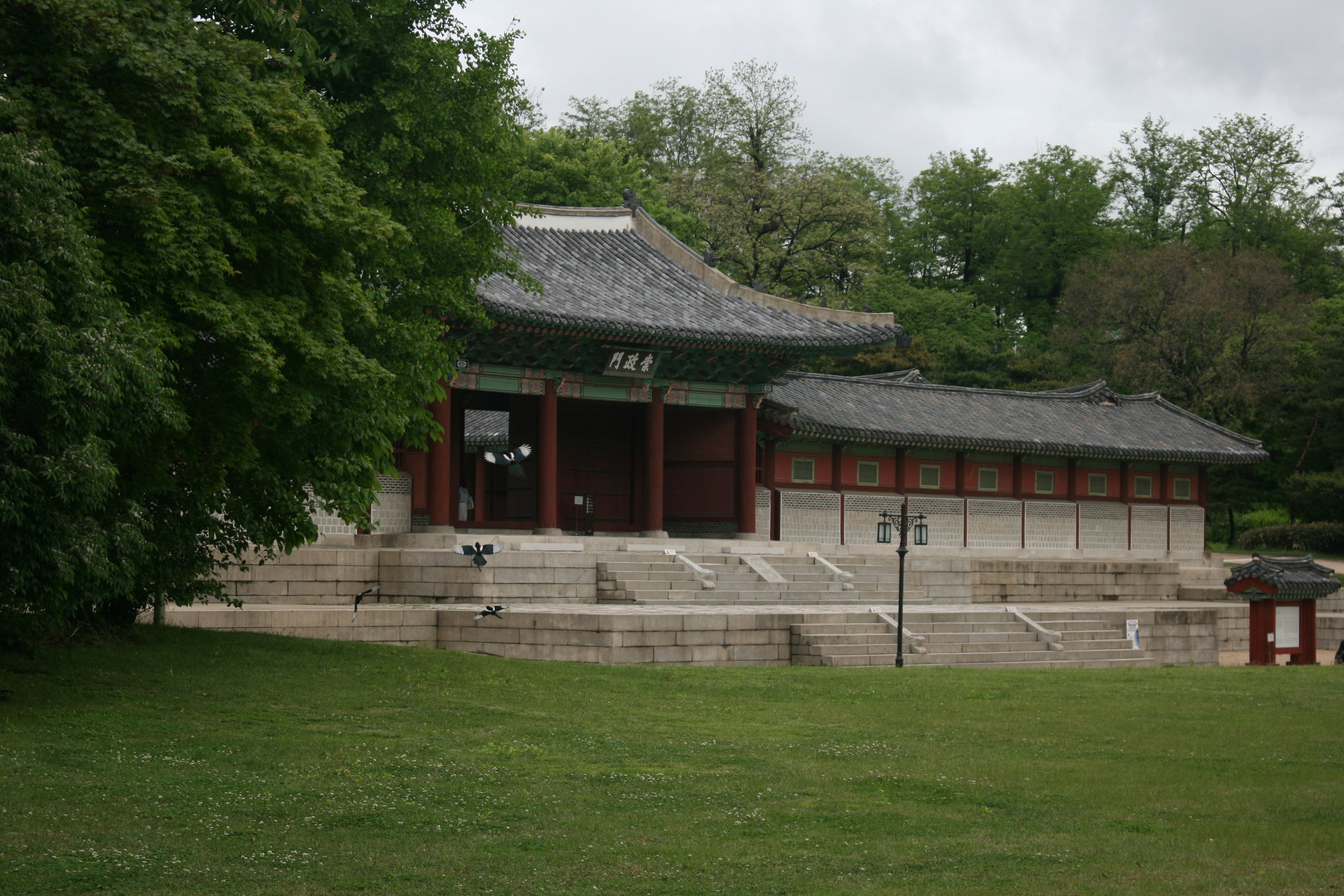
15:15 - Seoul Museum of Art (SEMA)
The Perfect Moment (2015), Jaye Rhee
Young girl sees note in newspaper that famous older dancer is performing in a small stage in New York. She goes early, it's a tiny theater, she's the first one there. Then the lights go down and she realizes she’s the only one in the audience.
It's inspiring, she says -- he comes out and performs just for her, at times she’s not even sure when to applaud, she’s conscious of every move and sound (she herself is almost performing with him). But it's also depressing -- here's this famous guy, and she’s the only one who came to see him, she thinks, what is modern dance if this is all it can give you? And then it's over and he leaves the stage and she leaves the theater.
Universal Cinema (2017), Rho Jae Oon
World of only women, agency, yet depicted by a presumed male gaze, directed, seen as symbols, unwieldy forces, tension between what is meant to be shown, the context they are meant to occupy, and what emerges from this collage, the forces straining and pushing their way forward
Expressions of female power or struggle -- in original were perhaps symbolic, were certainly in reference to or context of men and male stories -- yet excerpted here the power stands on its own and becomes something else, free of its frame of reference
Four Kinds of Gazes or One (2006), Jo Hun
Gender known in human but not discernible in dogs, suggests artificial sameness or difference dependent on point of view
Haunting gazes all feel human yet dogs still look like dogs...
17:15 - Deoksugung
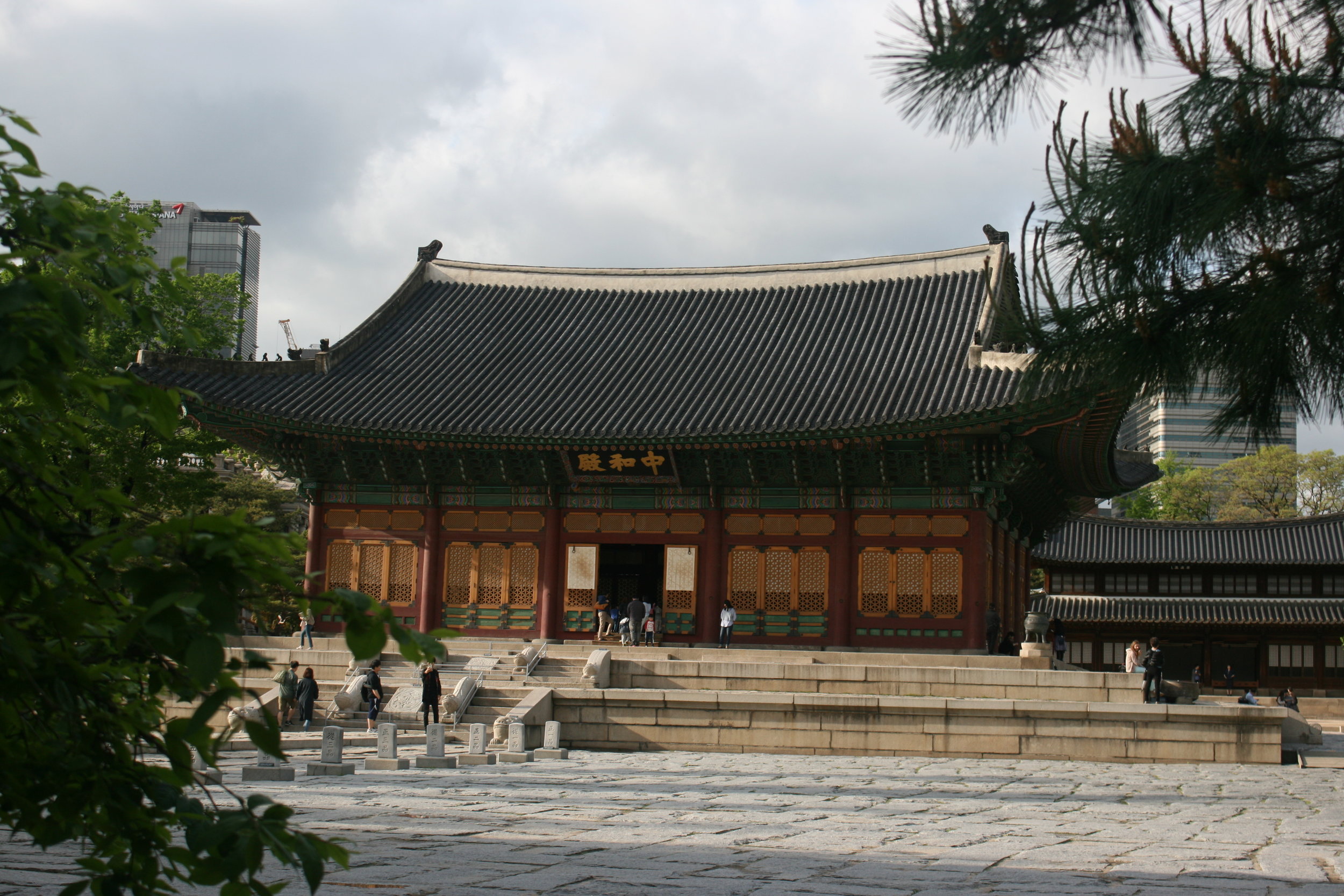
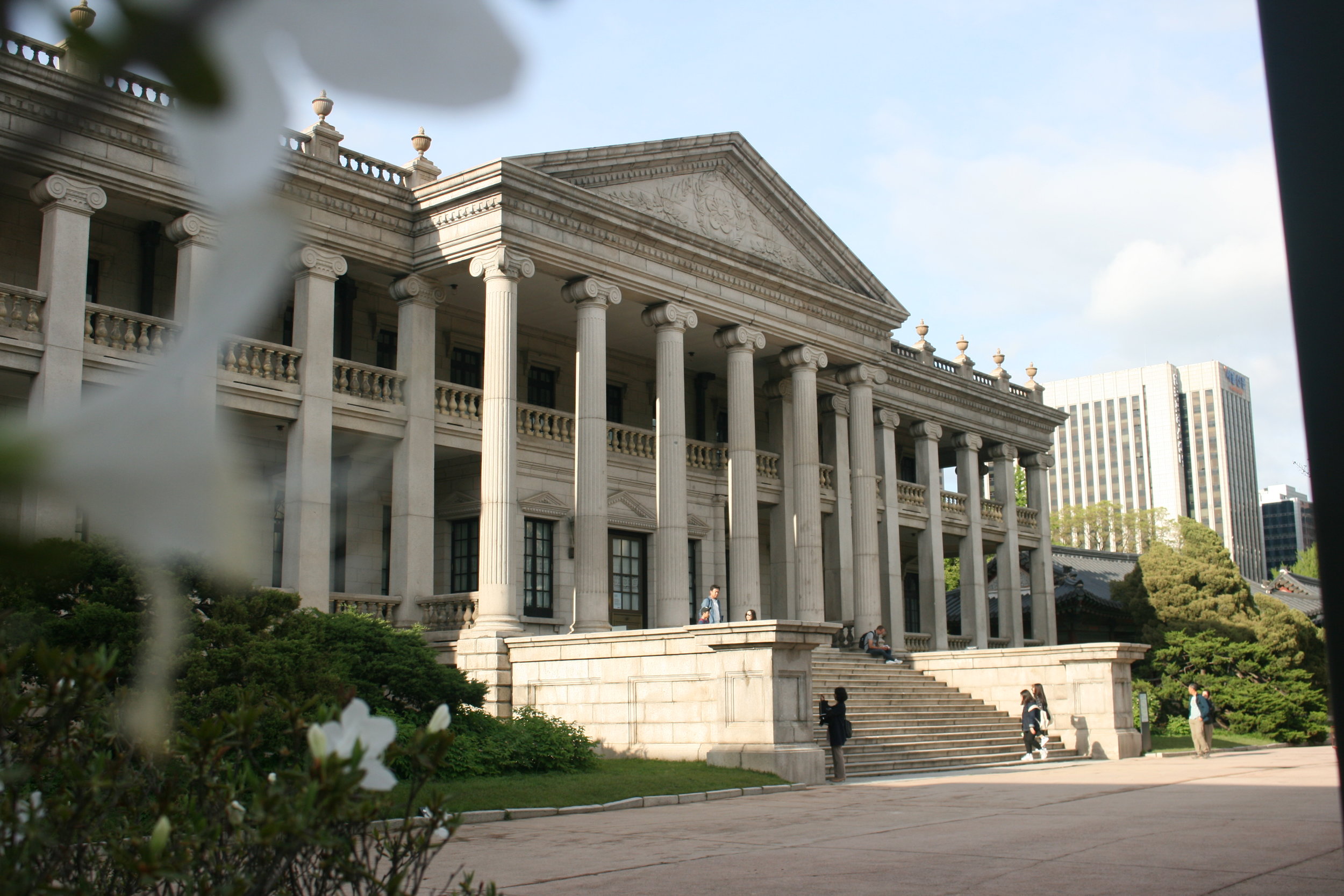
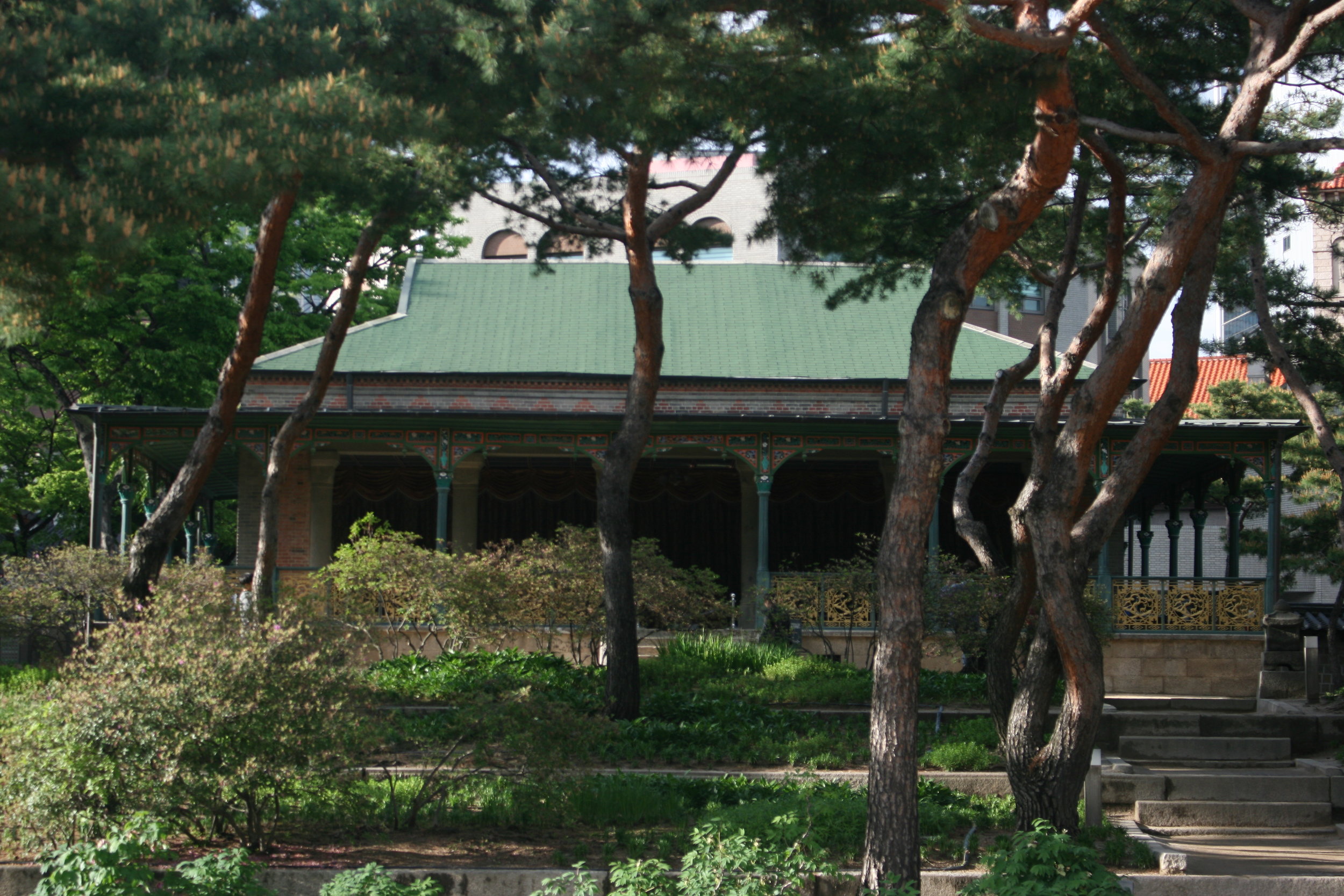
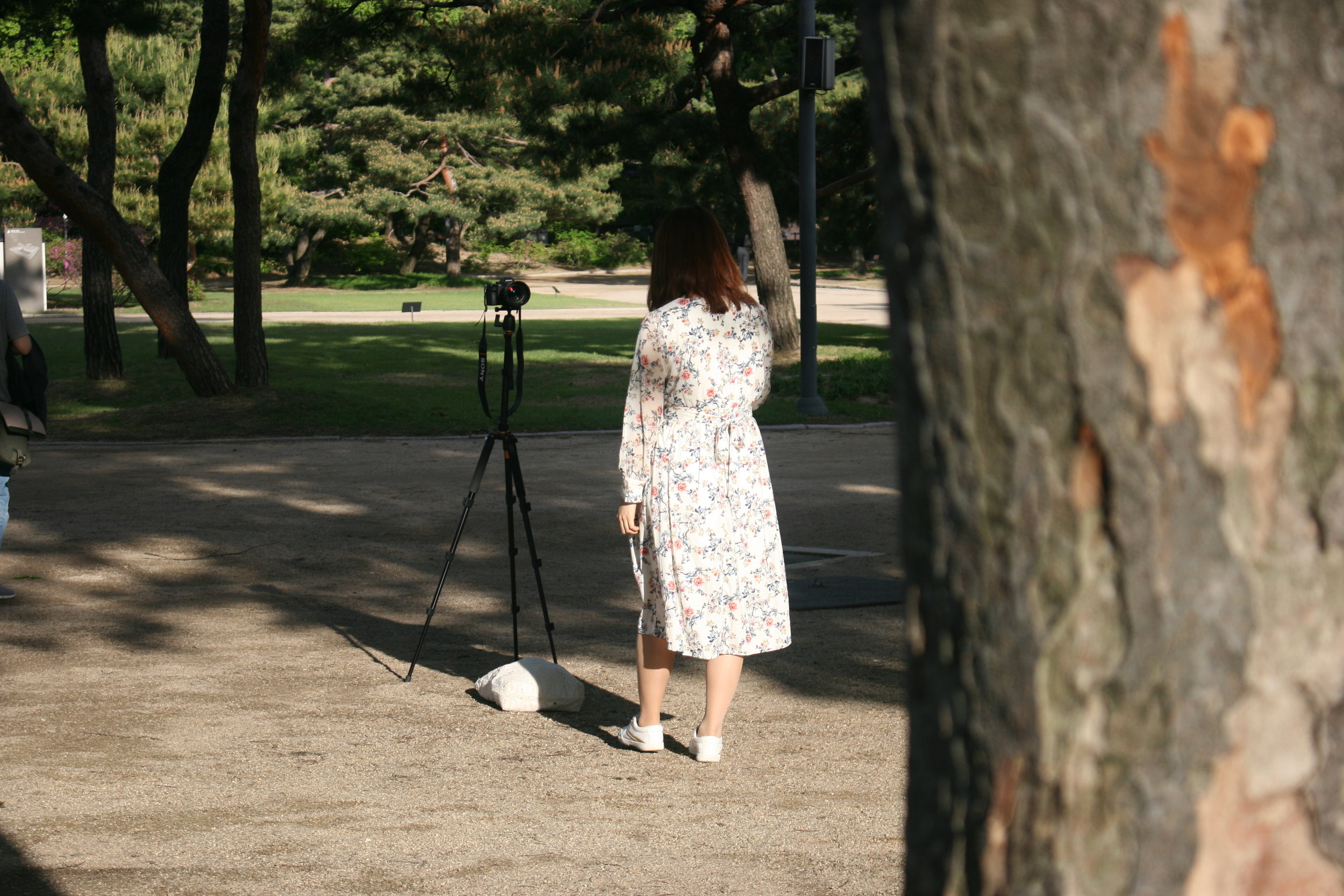
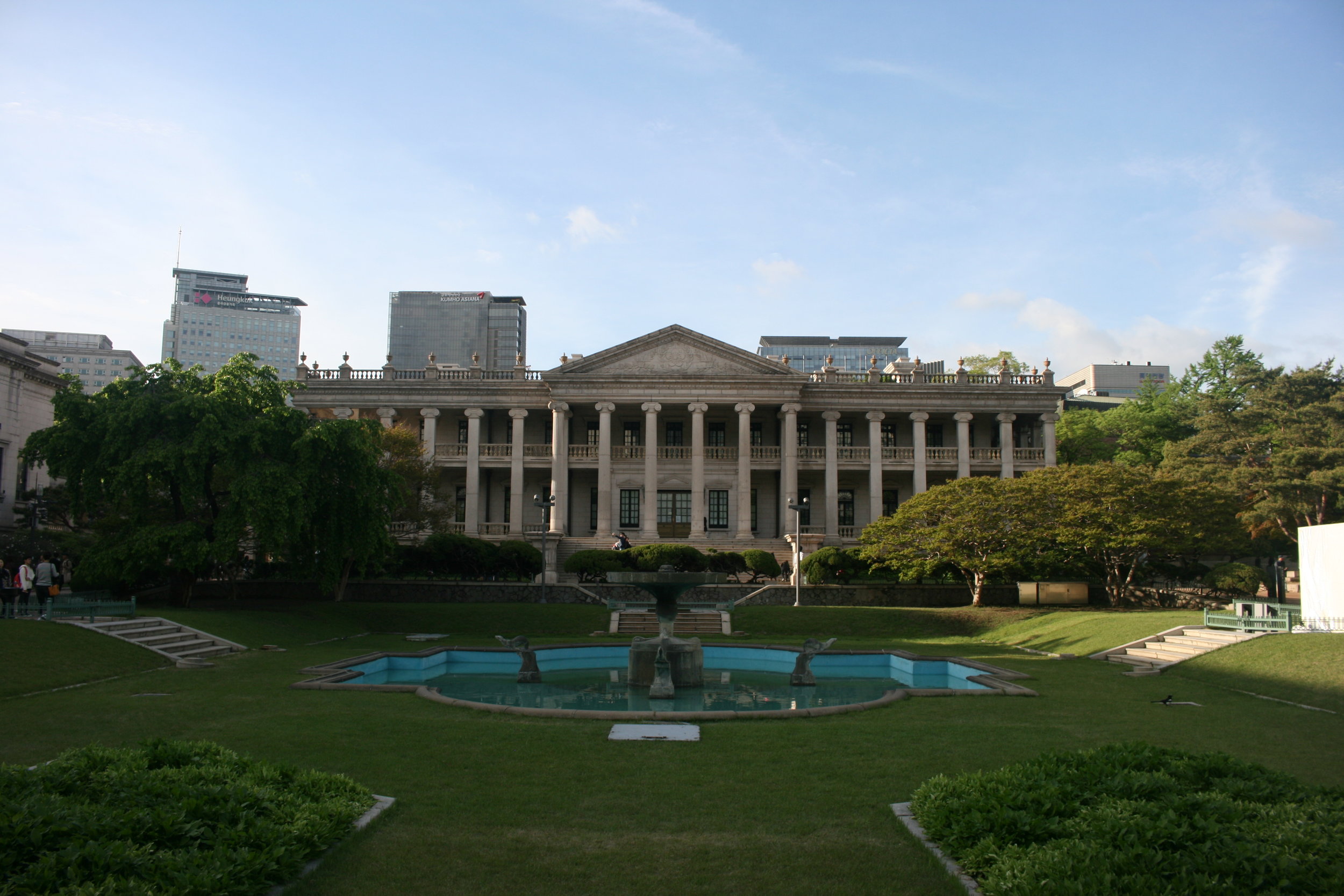
18:00 - MMCA Deoksugung
Seeing Korean modern art from the Japanese occupation period drives home how Western and Japanese influence infiltrated the culture
These works are so fascinating in their influences especially knowing the history and having seen works from the Joseon period just a few decades earlier
Portrait for Jeon Woo (1911)
Chae Yongshin
The canvas (paper?) almost feels like skin, spotty and aged
Mystic Sound of Tungso
Park Nosoo
Her slipper dangles from her foot, rhymes with her fingers pointing gently outward; Folds of matte dress made by negative space; Blank field background, she is like a “character” on paper, still and fixed yet active and full of meaning; Contrast between flat body and delicate detailed face evidently adheres to Joseon tradition; Tungso is a bamboo flute played by Taoist immortals
20:00 - Dinner at Jinmi Pyongyang Naengmyeon in Gangnam - Naengmyeon
Exclusively, unapologetically Korean
Casual, almost cafeteria-like, people meeting up
22:00 - Bongeunsa Temple
Who is the lantern-maker
Dragon whiskers
Lantern tags
Altar offerings -- bags of rice?
Mudra in real life, central Buddha touching the earth
Wooden clink of prayer beads
Prayer books arranged on a pillow
Annoying old lady, 30ish woman says nothing, pursed smile genuine at times
Coming in on a Sunday night, casual, pray, bow, burpees
Connecting ritual with wish, desire
When you look long enough everything becomes ordinary
Buddha statue: effect like the David, a woman bows in the dark, you can feel weight and gravity, inertia, relation of human to Buddha; size and scale; Mudra; feel blessed, acknowledged; so awestruck I'm almost nauseous
What did people do at lantern festivals before they could take photos?
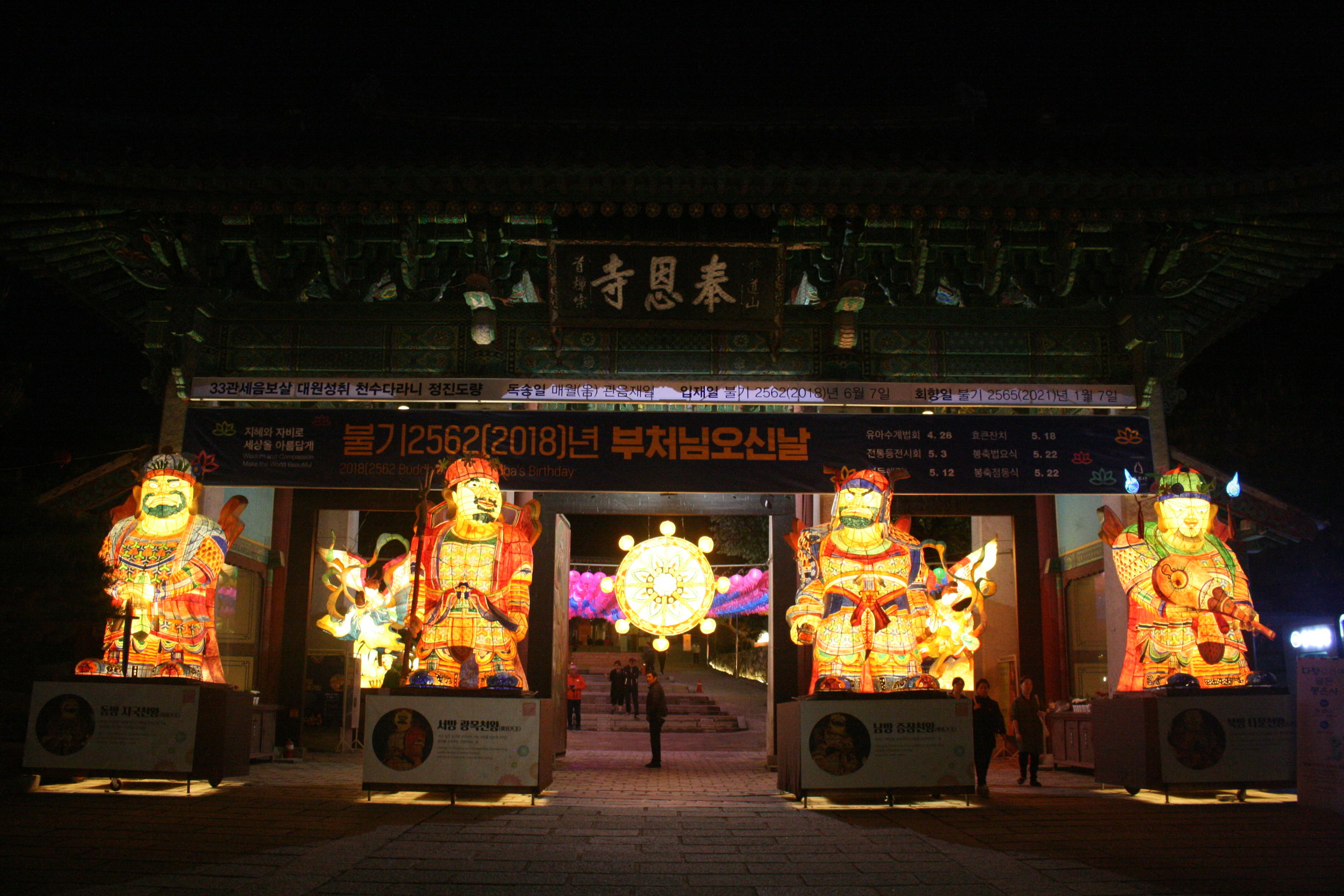
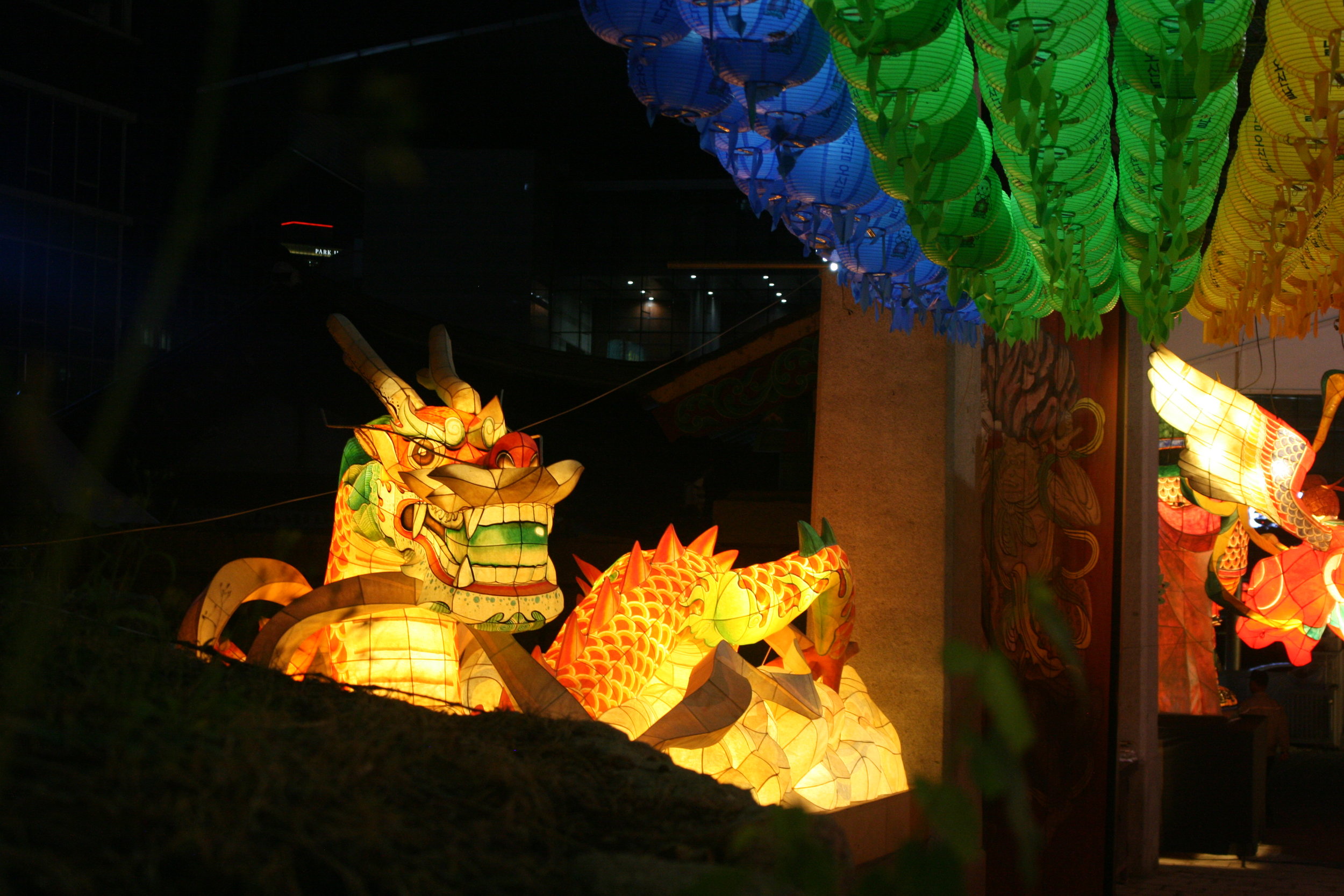
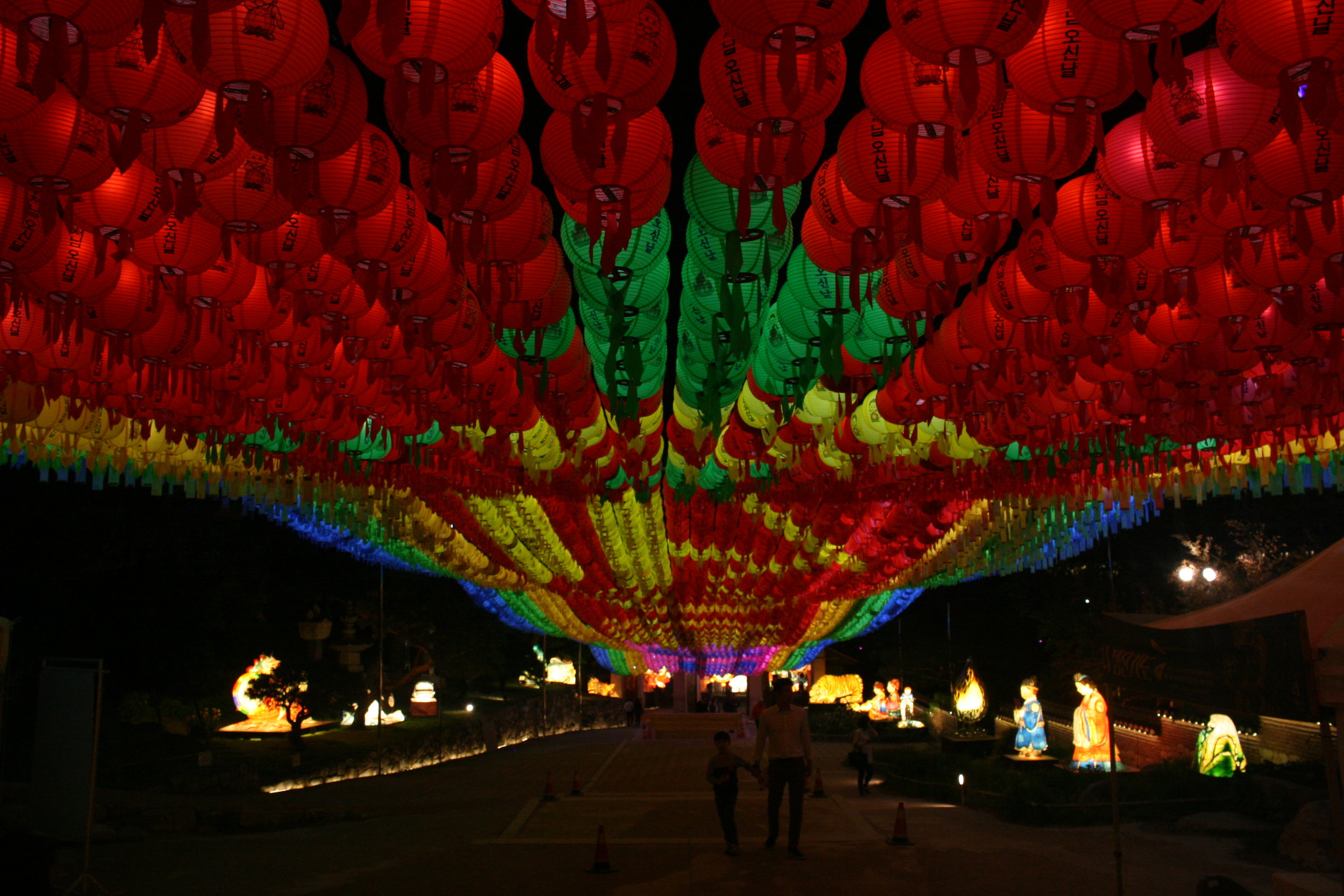
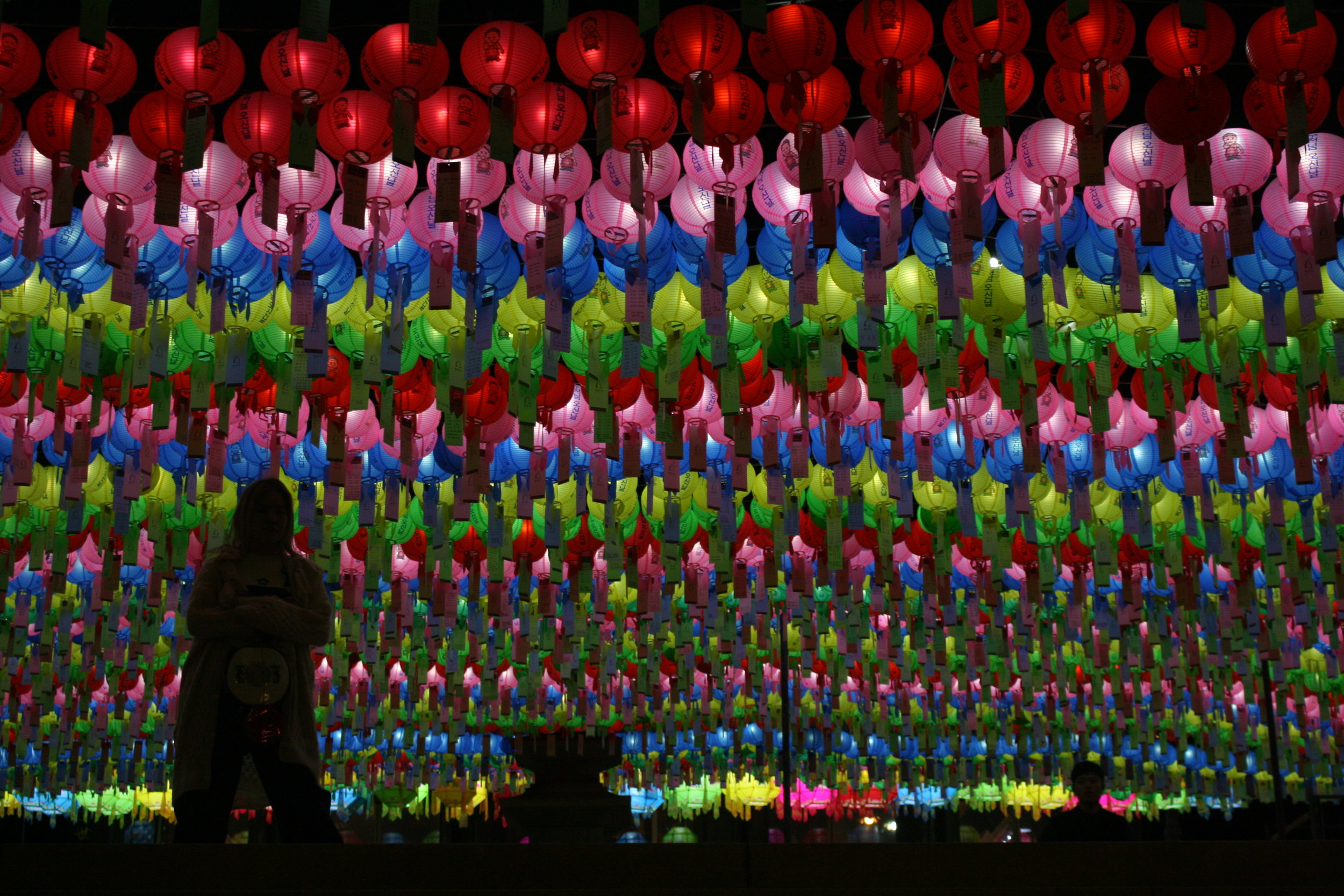
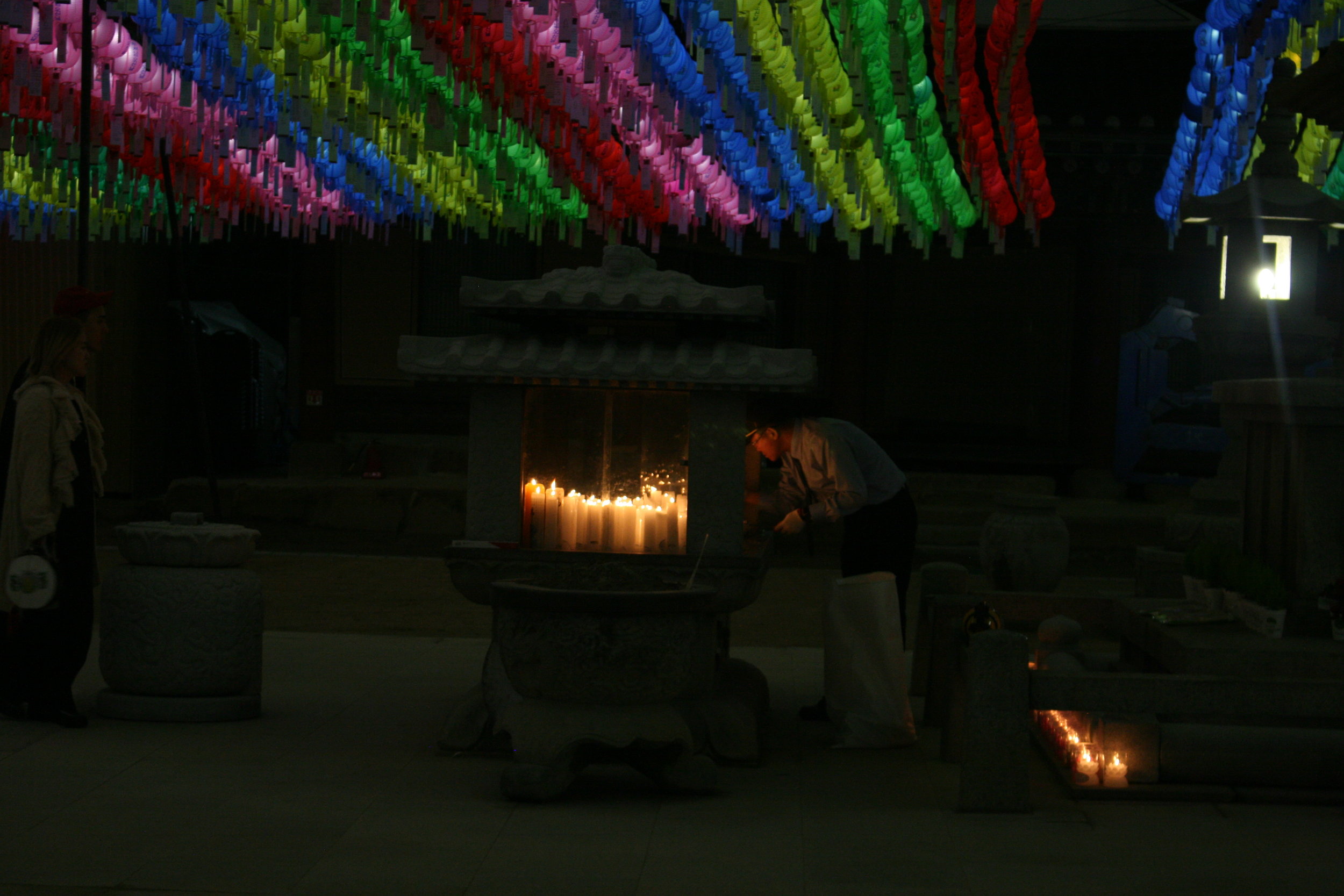
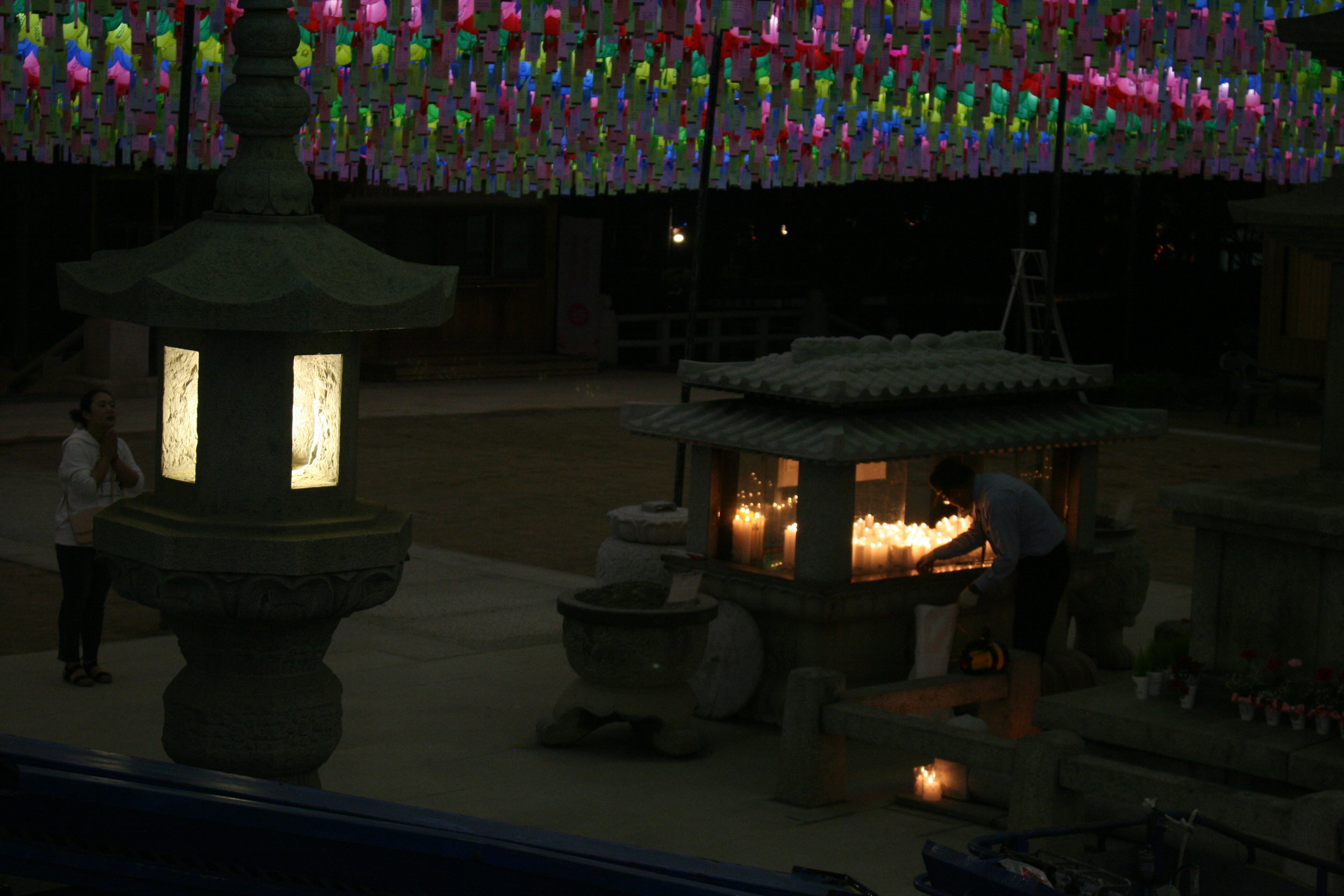
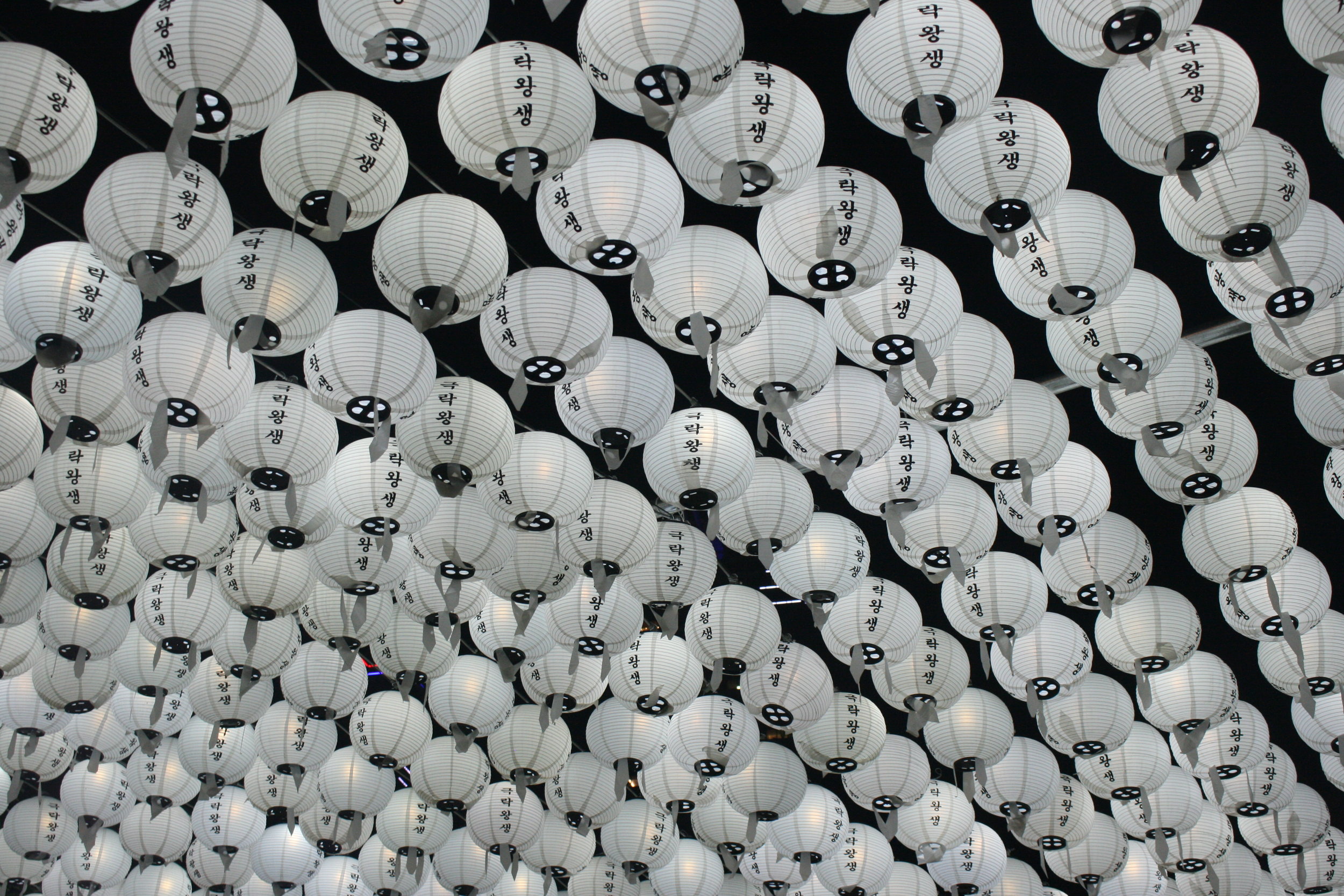
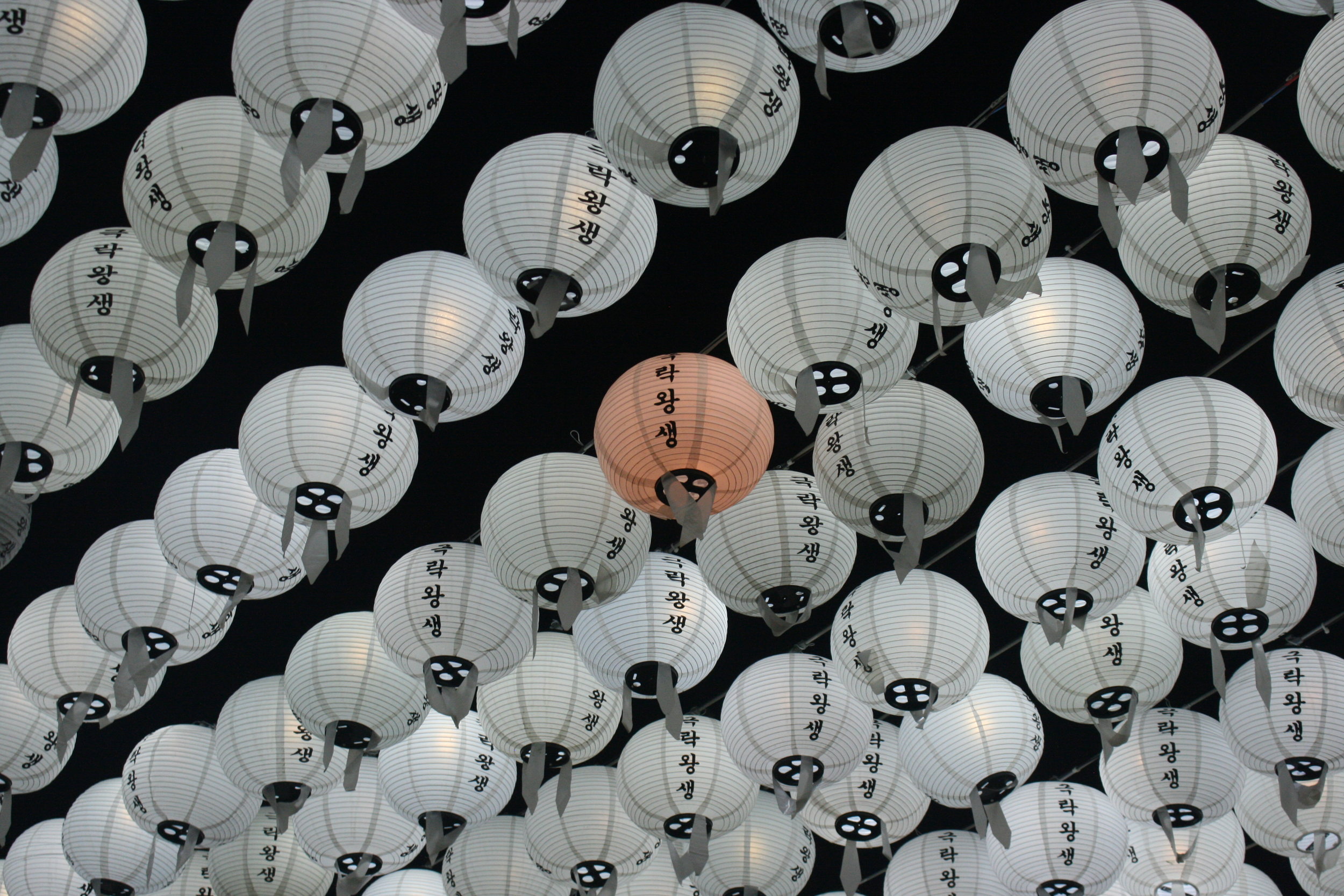
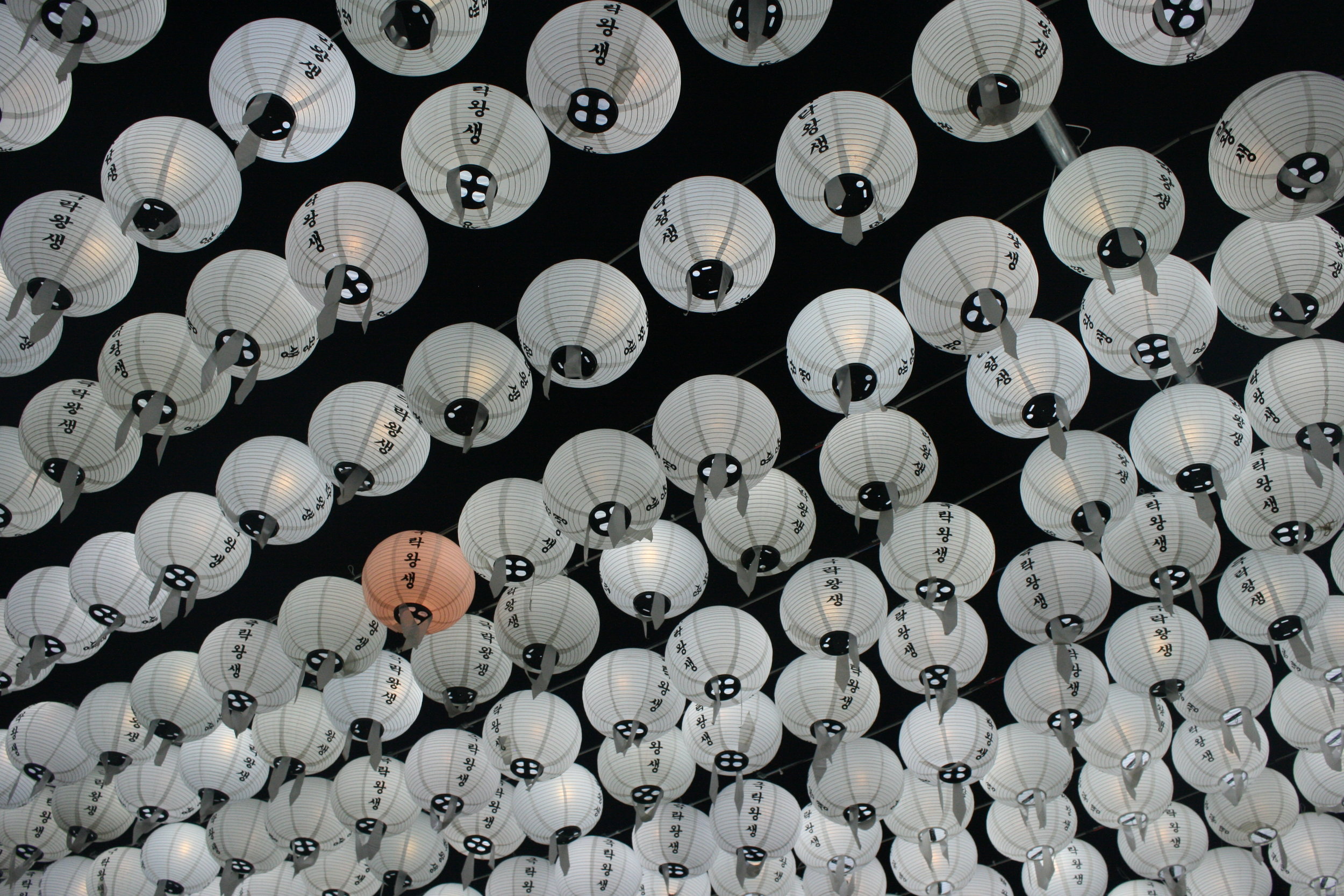
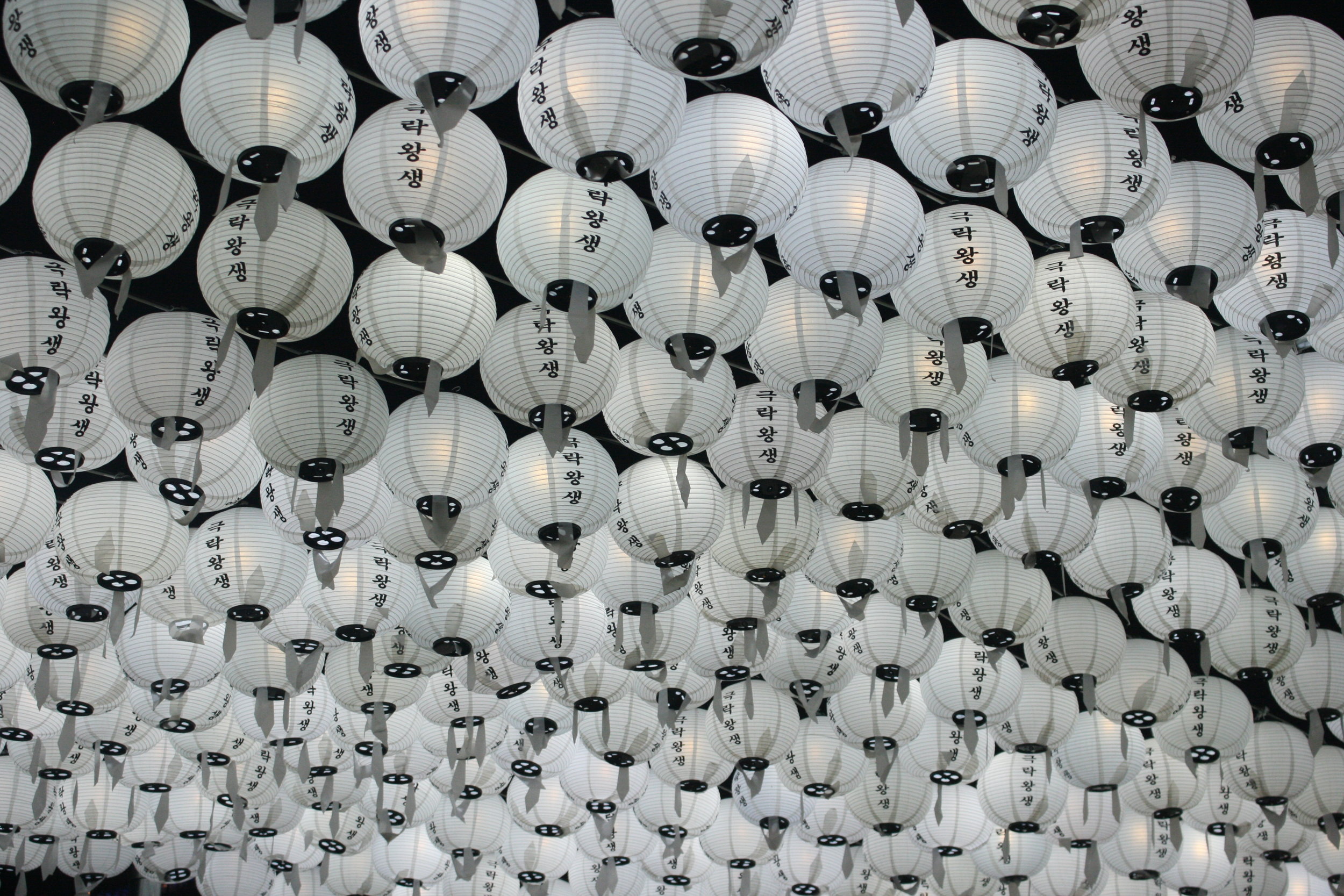
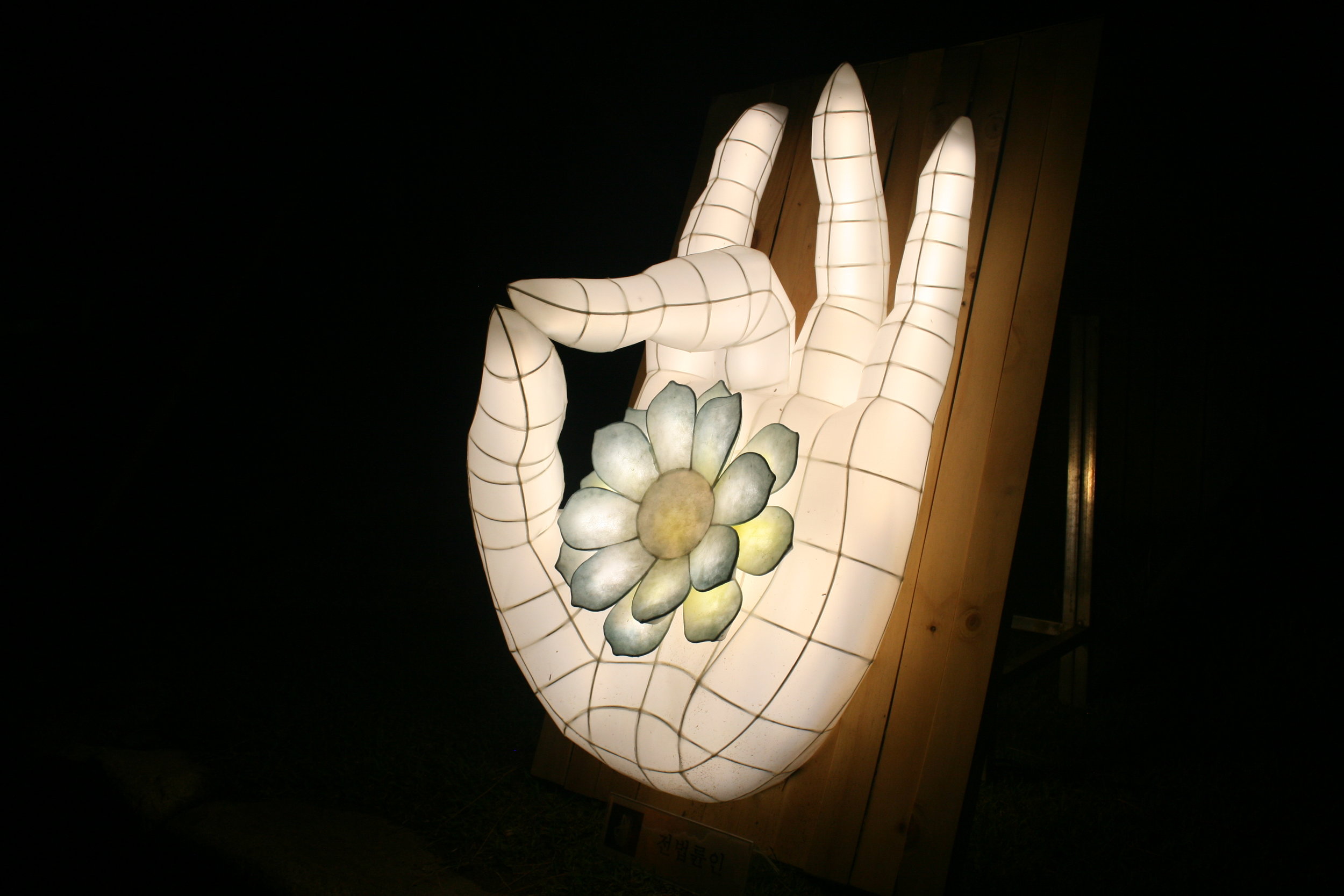
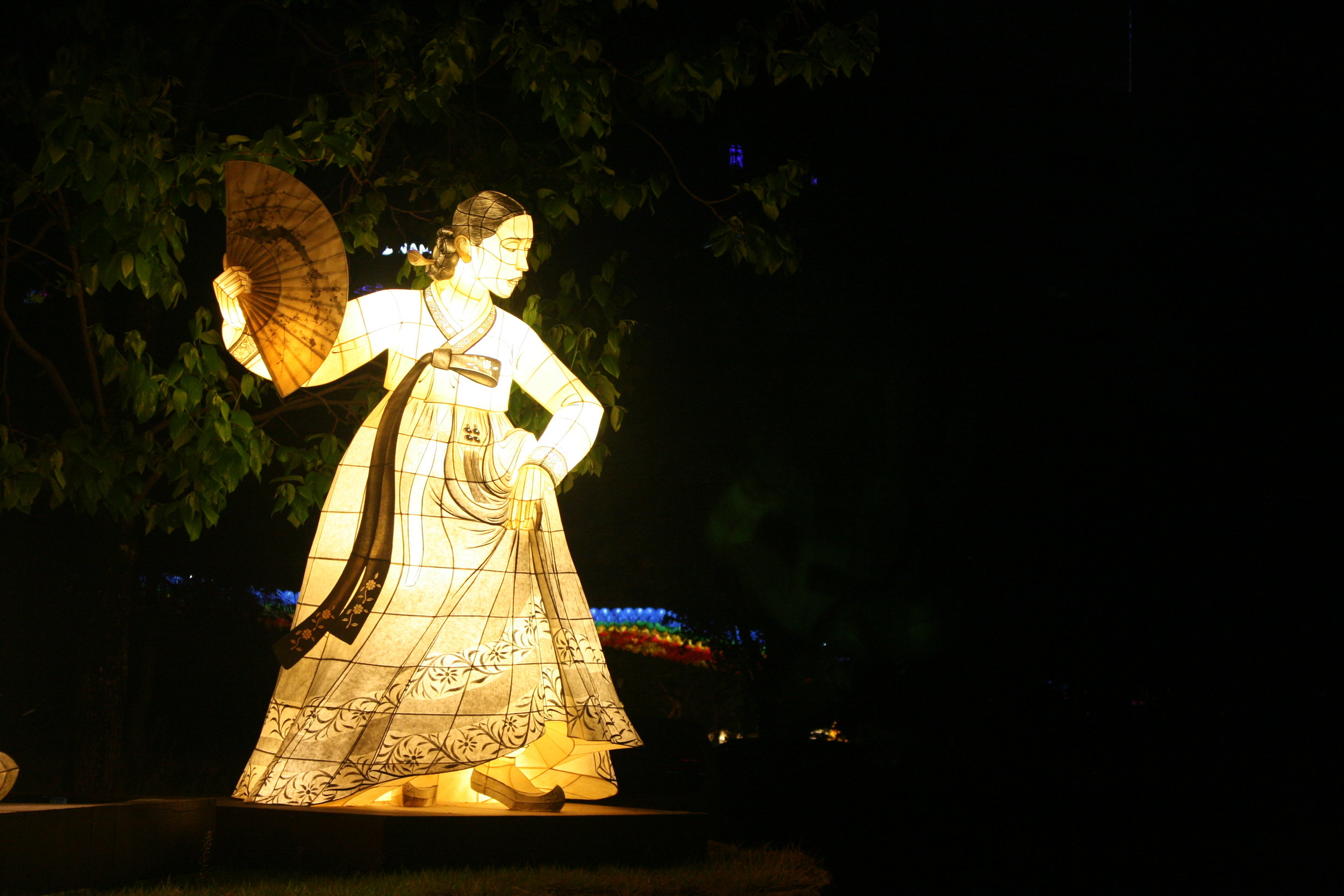
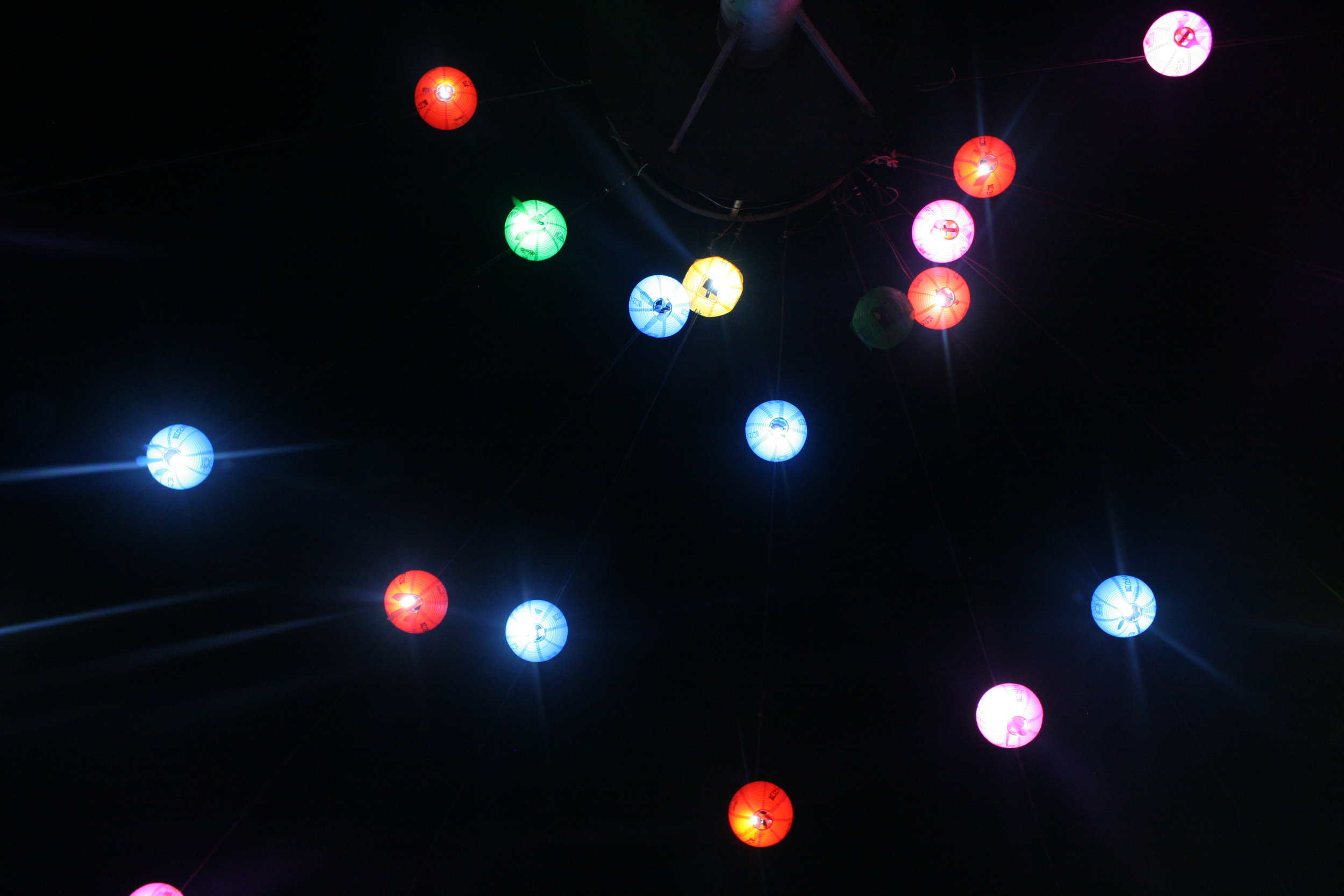

3.
09:00 - Bukhansan National Park
Buddhist temples feel so at home in nature, this element of the religion feels fundamental here
Reached Wonhyobong peak
Mountain life, defenders or monks would live up here all the time, imagine sight of supplies arriving, see the flowers that grow matter-of-factly at the peak
Nature makes available its geometry, footholds are just random variations after all, but there they are
Sound of wood blocks, sight of candle within hillside temple
So many people, including older people, quietly hiking -- what are they getting → physical, spiritual exercise
There should be an easier way to take audio snippets, "point and shoot" for sound
Fragrance of mud and leaves, feel a subtle sweat, walk beneath sun flecked with shade and shade flecked with sun
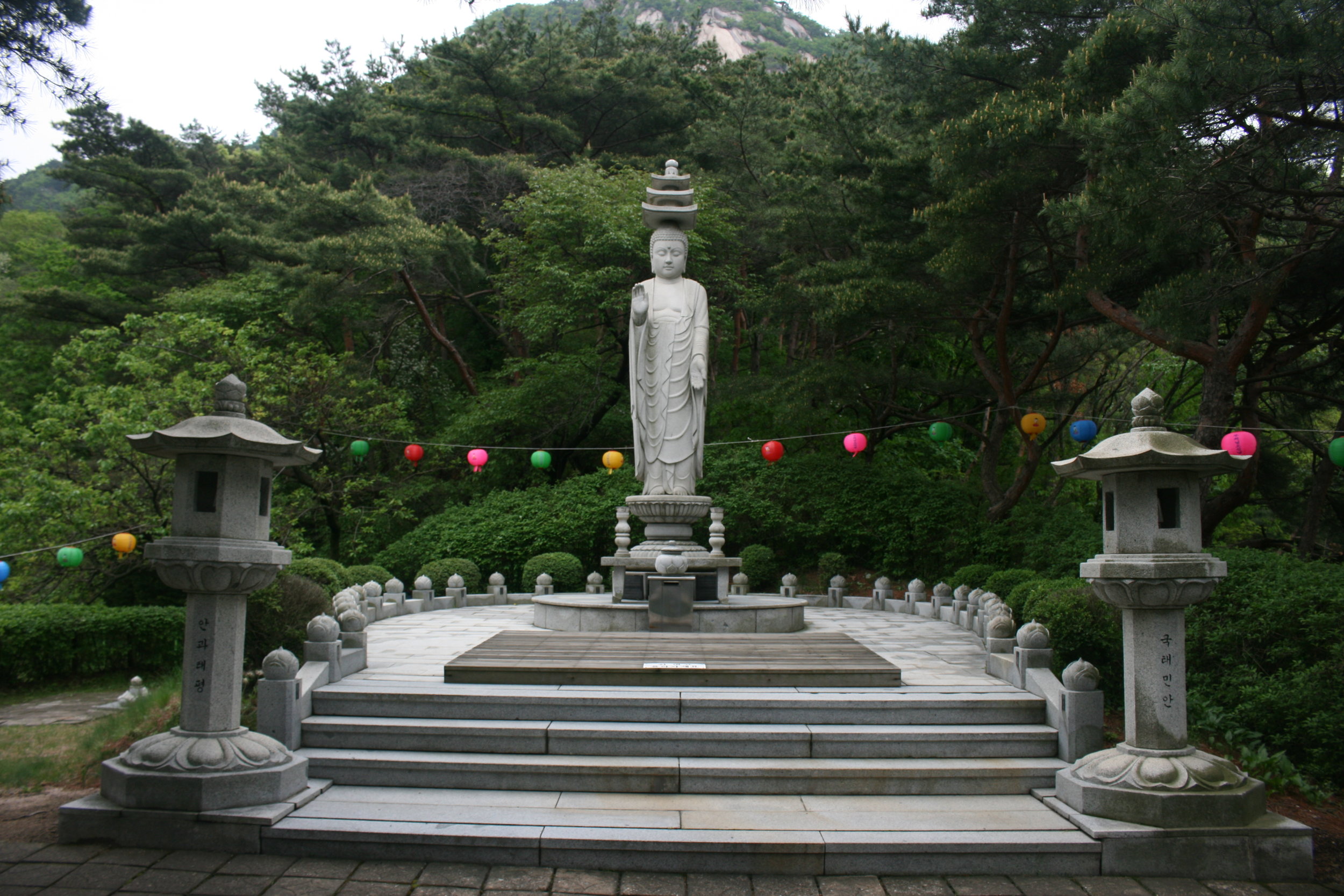
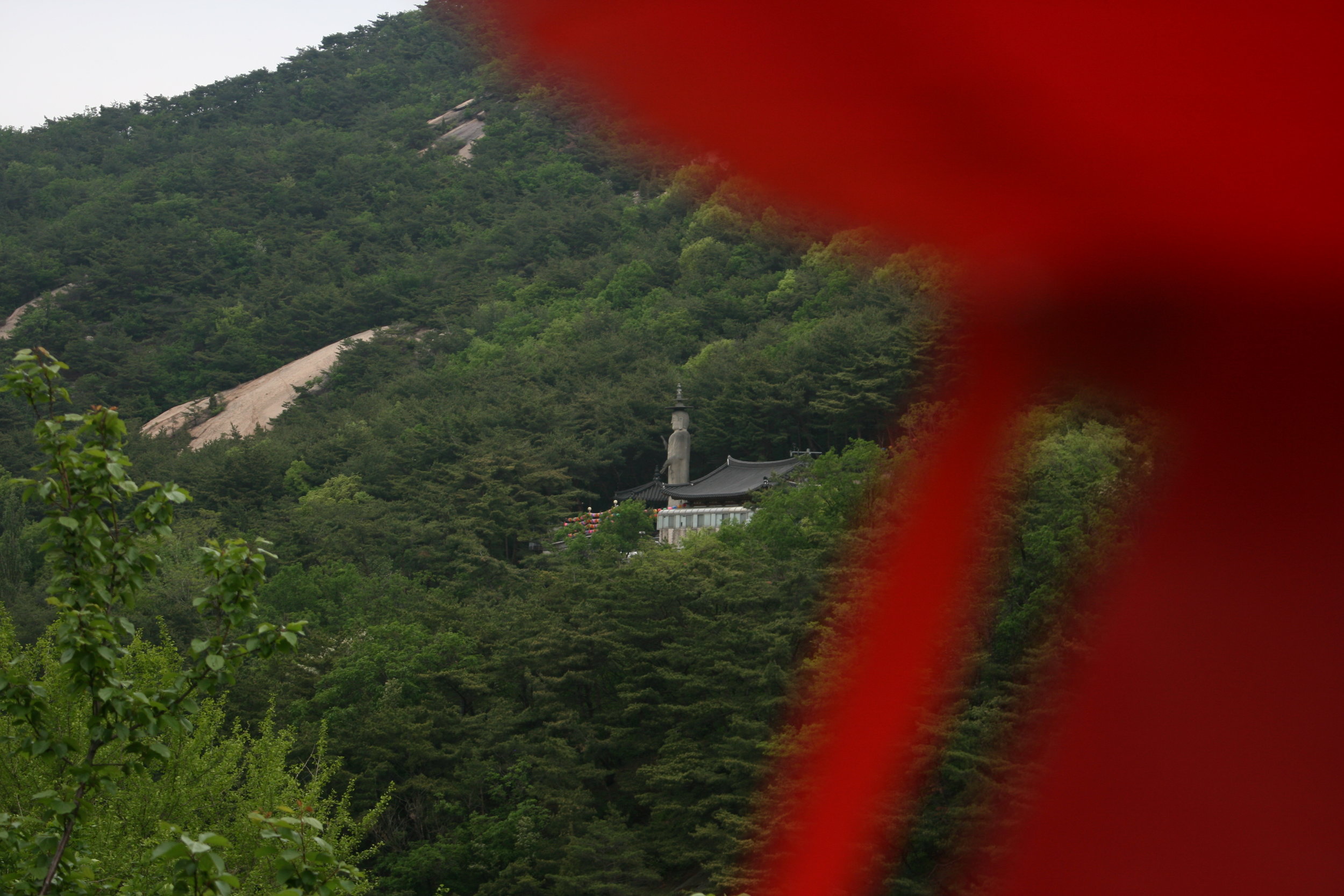
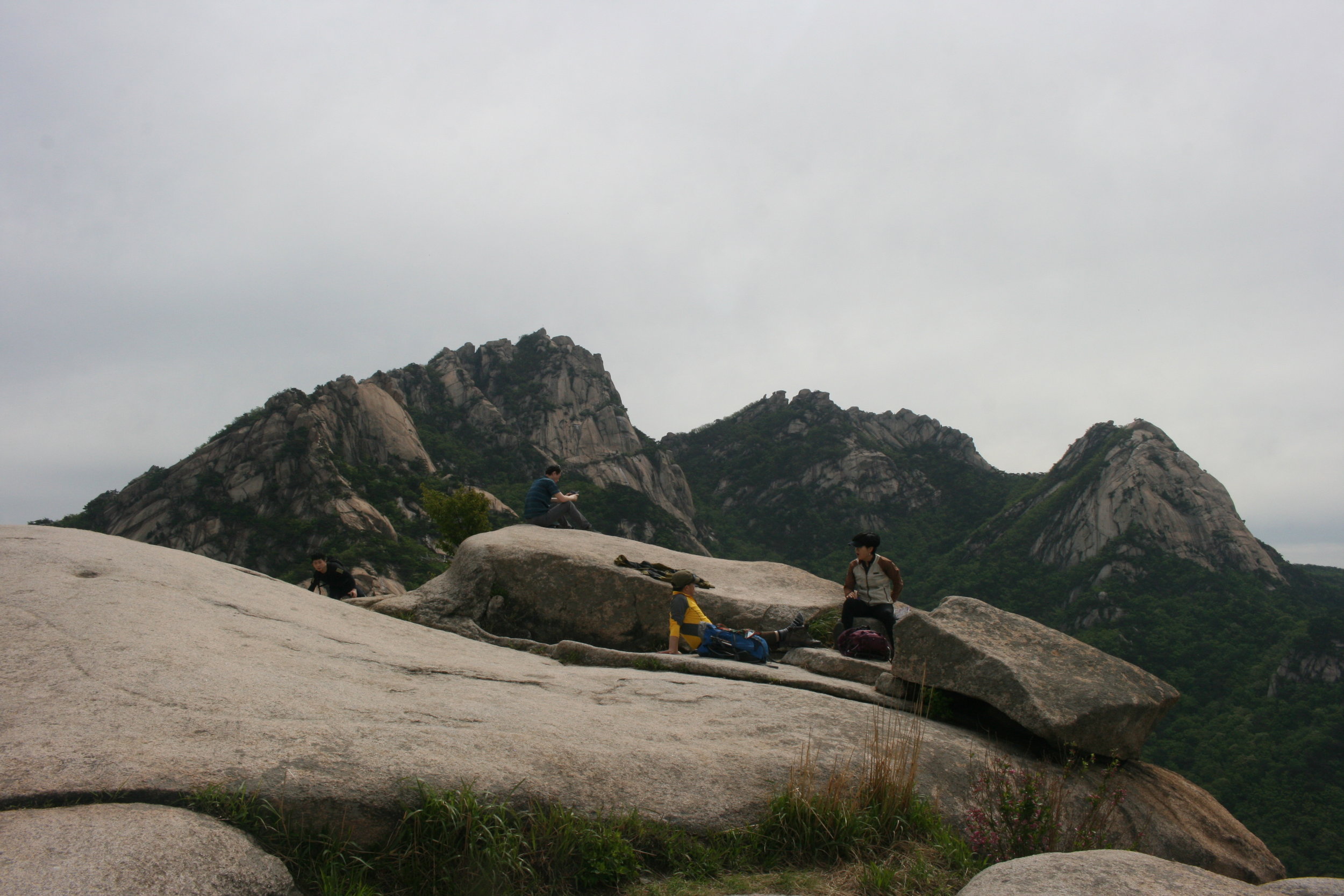
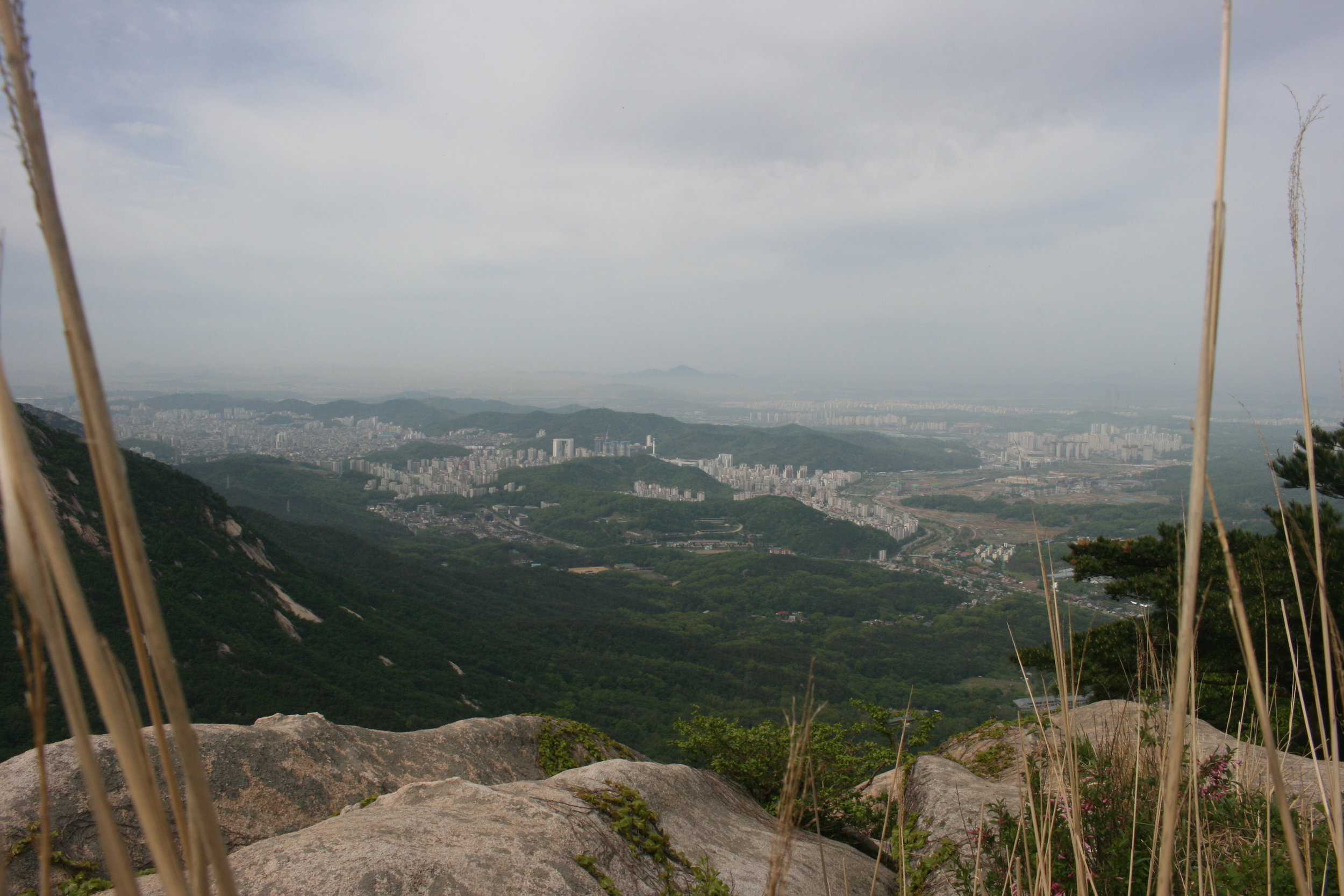
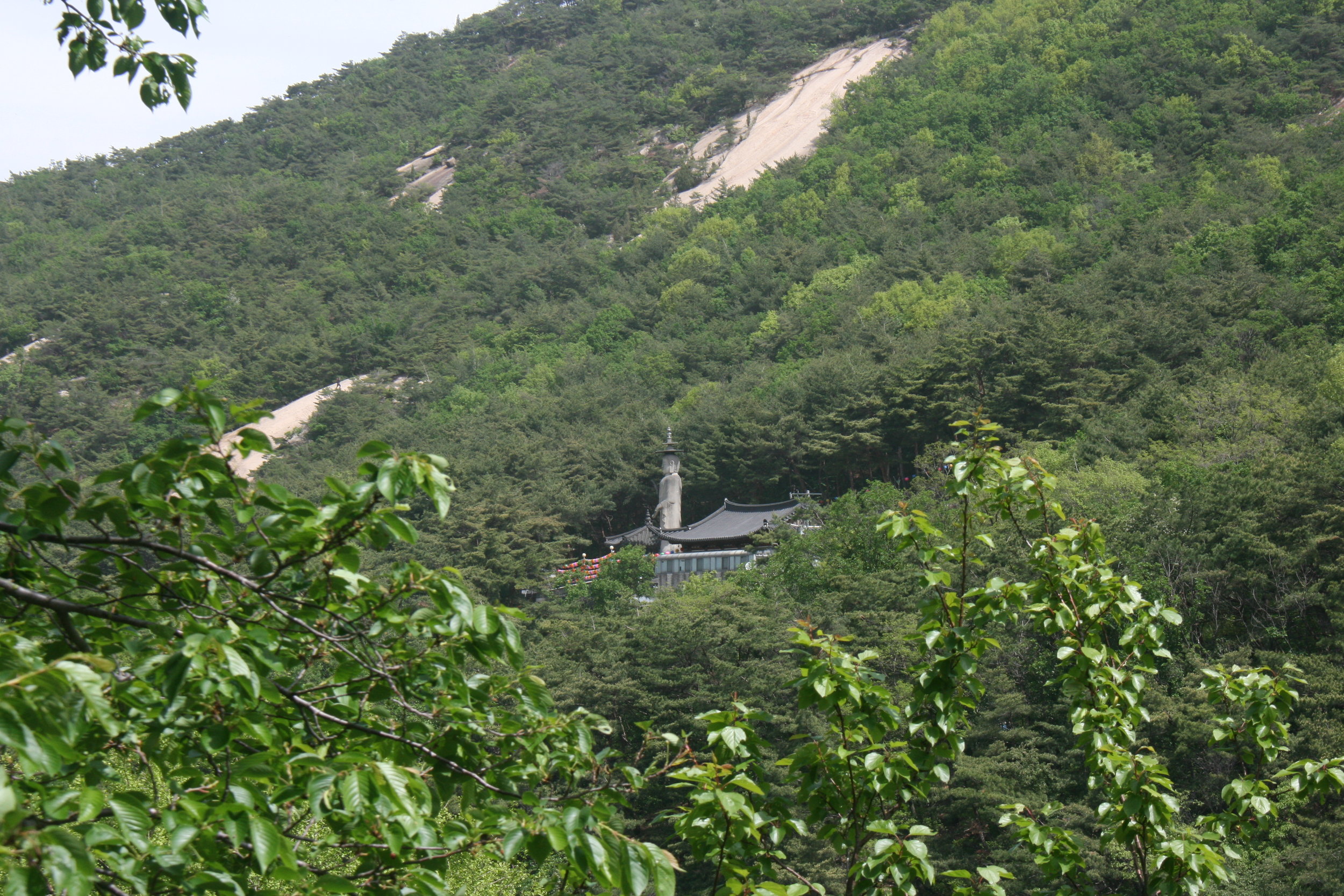
12:30 - Lunch at Bowl in Sogong Underground Shopping Center (bean curd dreg stew)
14:00 - Gyeongbokgung
Smart thinking by museum organizers to give free admission to people dressed in hanbok -- enhances the experience to have so many traditional looking people around
Interesting that the hanbok and palace are above all a photo opportunityI wonder what technology will emerge to make this image of people extending their arms for photos quaint
I wonder how we should think about the self-objectification here, i.e. people rendering themselves inactive, pose as becoming a “thing” → none of these people are exactly doing anything -- what would it look like if they were?
Puffs of cottonwood seeds in the air, fish in the artificial pond
Empress Myeongseong was killed here, but you'd barely know it -- had to read the story online, sitting on a bench on my phone before walking through the site -- which itself is essentially anonymous, but acquires weight when one knows this narrative
A. A. Sabatine, a Russian architect working to rebuild Gwanmungak, a portrait hall, in the Western style, witnessed the Japanese ronin infiltrate the compound and undertake to murder the Empress. They asked him in English, “Where is the queen?” → a common language even then
I love these black-white-and-ultraviolet birds -- are they starlings?
It's easy to remark on the photo taking but ultimately it's kind of nice to see how people work together to take pretty pictures and embrace traditional dress and architecture, even if only superficially
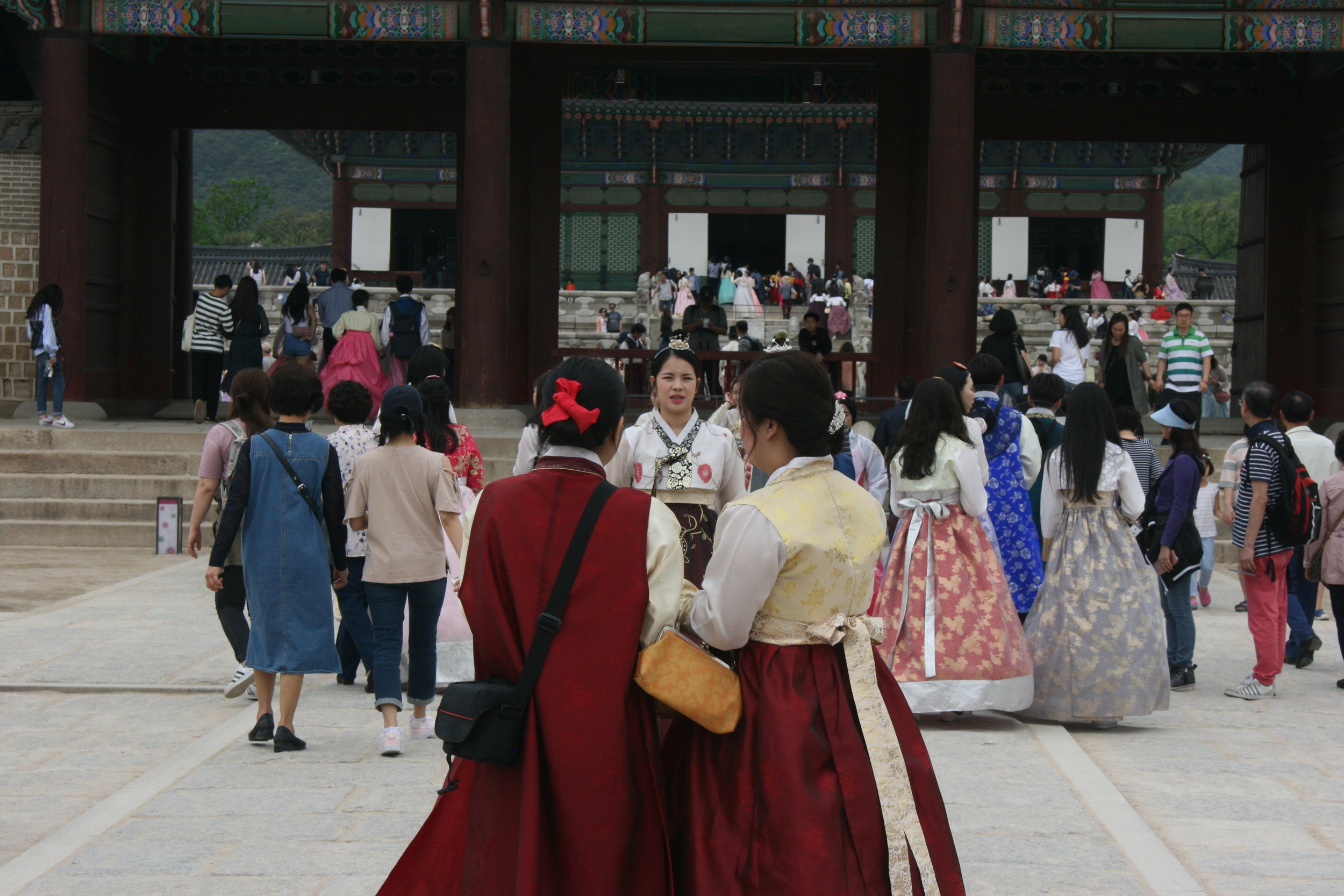
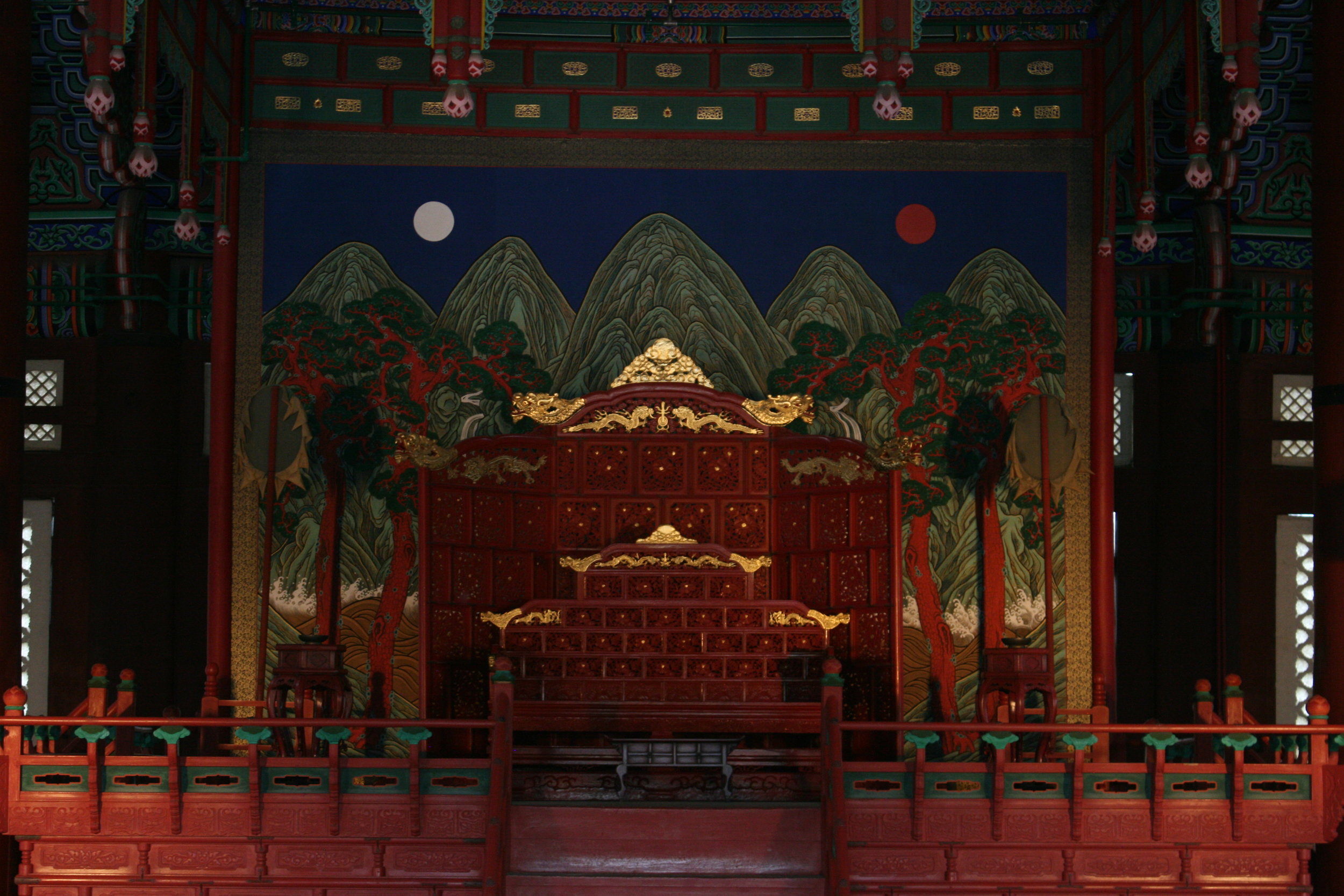
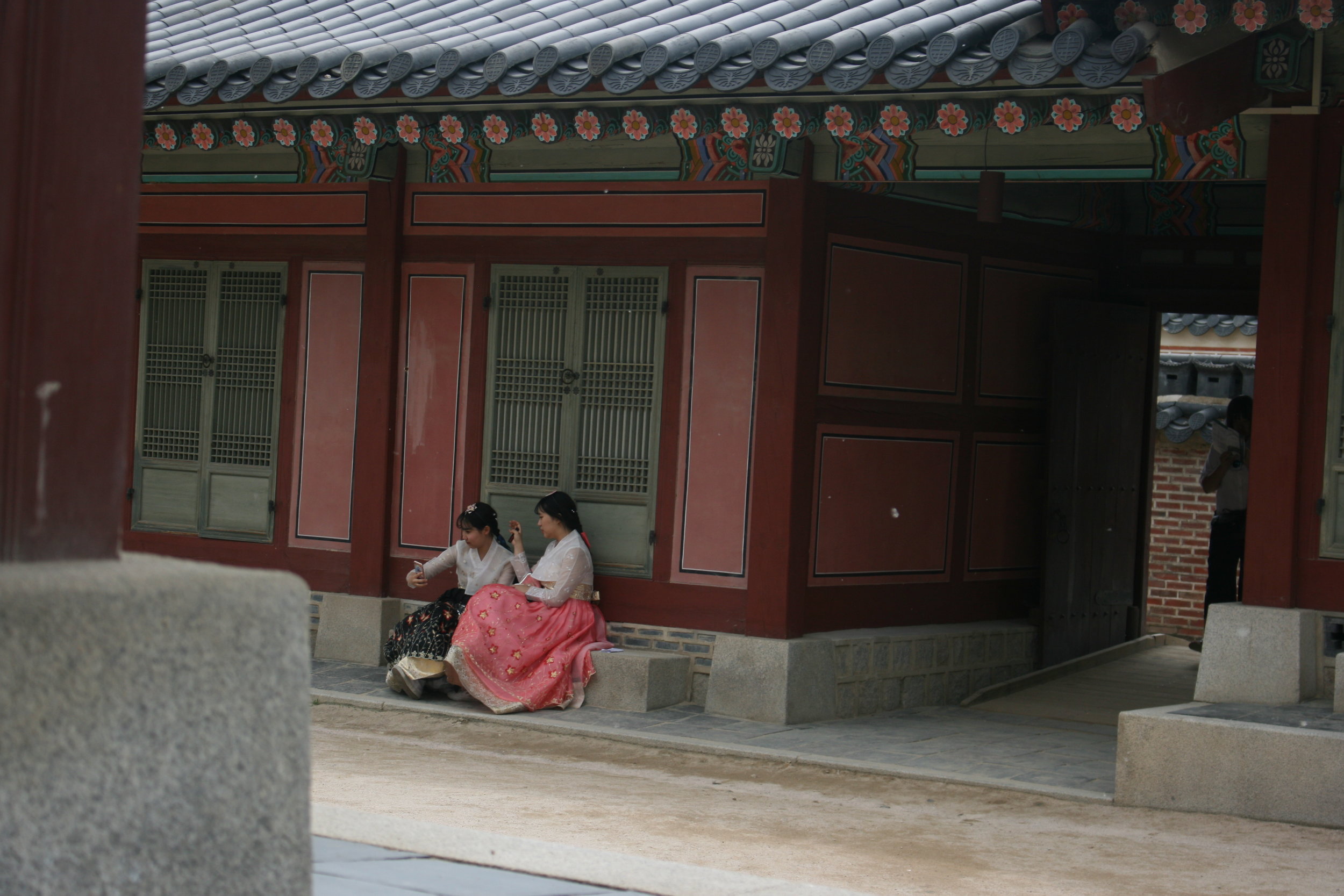
15:45 - Museum of Modern and Contemporary Art, Seoul
The Death of a Tiger and Other Empty Seats, Timoteus A. Kusno
We are forced to assume colonialist point of view
Impossible to resolve it understand myth -- yet it takes familiar form, we could argue about it (as the wall writing does) without knowing… anything!
Tells us how so much human culture is viewed, how outsider can project and infer, makes this ridiculous by inviting us to do it
Also fascinating use of materials, photo and video manipulation, reenactment, illustration, sculpture, artifact, etc → impressive at first, as you catch the trick, but gradually begins to feel very thin, like, this is all the evidence we're going on, this is the result of years of work for this fake research center…? Doesn't get us anywhere close to the authentic experience, if there is one, if that was even the goal
Striking imagery, the pointing finger at the edge of the spear pole, the horse with a megaphone head being hunted, the tiger spirit, the skull-headed islanders, the organlike fruit plant…
In constructing an entire mythology it recalls that Jewish mythos exhibit we saw in Venice
18:30 - Hongdae
Getting a sense for Korean fashion circa 2018: modest and clean, crisp, low hemlines, few prints or patterns, young but somewhat serious, classic with a modern flair
Hard to read the layers on layers of irony on t-shirts at “Another Awesome” and “M Playground” apparel shops
Interesting that it's nearly impossible to see the overlap with this population and the one at Bukhansan National Park
The shirt I chose has a chaotic, dark edge that seems to transcend the irony by acknowledging it with a shrug, a bitter, pessimistic, or even nihilistic, side of Korea I haven't seen




